Objectives of Criminal Procedure
The objectives of criminal procedure are crucial for the effective functioning of the criminal justice system.
Here’s a summary of the key points:
- Protection of Society: The primary aim of criminal law is to protect society by deterring crime and punishing offenders. This is achieved through substantive criminal law, which defines crimes and prescribes punishments, and procedural criminal law, which facilitates the enforcement of substantive law.
- Administration of Justice: Procedural criminal law governs how justice is administered, ensuring that individuals are not unjustly stigmatized or punished without due process. It is essential for enforcing the substantive law and ensuring that offenders are appropriately dealt with.
- Deterrent Effect: Without procedural law, the substantive law would lack effectiveness. The threat of punishment would not be realized in practice, leading to a breakdown in the deterrent effect that underpins criminal law.
- Mechanism for Justice: Criminal procedural law provides the framework for:
- Detection of crime
- Apprehension of suspected criminals
- Collection of evidence
- Determination of guilt or innocence
- Imposition of appropriate punishments
- Accountability and Regulation: The procedural law regulates the criminal justice system's operations to ensure accountability and prevent abuse of power by law enforcement authorities.
- Fair Trials: The overarching objective is to guarantee that accused individuals receive a fair trial in accordance with principles of natural justice.
Evolution of Criminal Procedure
The evolution of criminal procedure in India reflects the ongoing development of the legal system:
- Historical Development: The first code of criminal procedure was enacted in 1861, followed by subsequent iterations and amendments, culminating in the current Code of Criminal Procedure (CrPC) enacted in 1973.
- Recent Changes: The BNSS Act 2023, effective from July 1, 2024, consolidates and updates criminal procedures in response to contemporary legal needs.
Key Objectives of the BNSS (Bharatiya Nyaya Sanhita)
- Consolidation of Laws: The BNSS aims to consolidate laws related to criminal procedures to ensure proper application of substantive laws.
- Effective Machinery for Justice: It provides a streamlined procedure for the punishment of offenders, facilitating the enforcement of penal provisions.
- Gap-Filling Provisions: In special acts where procedural gaps exist, the BNSS provisions will apply, while self-contained provisions in special acts take precedence.
- Fair Trial Principles: Ensuring a fair trial for accused persons is a primary goal, alongside timely trial conclusions and victim-centric approaches.
- Modernization: The BNSS incorporates contemporary methods, such as digital and electronic processes, scientific aids for investigation, and witness protection.
Stakeholders and Functionaries under the Sanhita
- Law Enforcement:
- Police: Governed by respective state police acts; responsible for investigation, arrest, and maintenance of law and order.
- Public Prosecutors: Defined roles and responsibilities for prosecuting cases under the BNSS.
- Defense:
- Defense Counsel: Accused individuals have the right to choose their legal representation, with provisions for state-funded counsel for indigent defendants.
- Judiciary:
- Courts: Includes the Supreme Court, High Courts, and subordinate courts responsible for adjudicating criminal matters.
- Correctional Services:
- Prison Authorities: Regulated by specific acts concerning the treatment and rehabilitation of prisoners, ensuring that correctional facilities operate within the legal framework.
The objectives and frameworks established by criminal procedure laws like the BNSS are essential for maintaining justice, protecting rights, and ensuring that the criminal justice system operates fairly and efficiently. These laws evolve to address societal needs and integrate modern practices, underscoring the dynamic nature of legal systems.
|
Class of Court |
Description |
Powers and Duties |
|
Courts of Session |
Highest trial courts in the district; handle serious offenses. |
- Try serious offenses, including those punishable by death or life imprisonment. - Hear appeals from lower magistrate courts. - Grant bail in certain circumstances. |
|
Judicial Magistrates |
||
|
- First Class |
Handle more serious cases; can impose higher sentences. |
- Conduct trials for offenses punishable by up to three years. - Handle bail applications. |
|
- Second Class |
Deal with less serious offenses; limited jurisdiction. |
- Conduct trials for offenses punishable by up to two years. - Address summary trials. |
|
Executive Magistrates |
Handle administrative functions and maintain public order. |
- Issue orders under Section 144 of CrPC. - Conduct inquiries into certain offenses. |
Key Differences Between BNSS and CrPC
|
Aspect |
BNSS |
CrPC |
|
Classes of Courts |
Courts of Session, Judicial Magistrates, Executive Magistrates |
Courts of Session, Judicial Magistrates, Executive Magistrates |
|
Terminology |
May include updated terms and provisions |
Established terminology from the original enactment in 1973 |
|
Provisions |
Recent legal reforms may reflect contemporary practices |
Established legal framework since 1973 |
Hierarchy of Criminal Courts
|
Level |
Court |
Description |
|
1. |
High Court |
Highest court in the state; handles appeals and important cases. |
|
2. |
Sessions Judge |
Presides over serious criminal cases; has authority to impose significant sentences. |
|
3. |
Additional Sessions Judge |
Functions similarly to the Sessions Judge; handles cases as assigned. |
|
4. |
Chief Judicial Magistrate |
Manages the Judicial Magistrate courts; oversees criminal proceedings in the district. |
|
5. |
Judicial Magistrate First Class (JMFC) |
Handles less serious cases; conducts trials and issues orders. |
|
6. |
Judicial Magistrate Second Class (JMSC) |
Deals with minor offenses; limited jurisdiction. |
|
7. |
Executive Magistrates |
Responsible for maintaining public order and administrative functions. |
Sentencing Power of the Courts
|
Sl No |
Court |
Fine |
Imprisonment |
Relevant Provision |
|
1. |
High Court |
Any amount authorized by law |
Any sentence/imprisonment authorized by law |
22(1) |
|
2. |
Sessions Judge/Addl Sessions Judge |
Any amount authorized by law |
Any sentence/imprisonment authorized by law (death sentence subject to confirmation by the High Court) |
22(2) |
|
3. |
Chief Judicial Magistrate (CJM) |
Not exceeding 7 years |
23(1) |
|
|
4. |
Judicial Magistrate First Class (JMFC) |
Not exceeding ₹50,000 |
Not exceeding 3 years/community service |
23(2) |
|
5. |
Judicial Magistrate Second Class (JMSC) |
Not exceeding ₹10,000 |
Not exceeding 1 year/community service |
23(3) |
Executive Magistrates
|
Provision |
Details |
|
Appointment |
The State Government may appoint Executive Magistrates as deemed necessary; one is designated as the District Magistrate. (S 14) |
|
Additional District Magistrate |
Any Executive Magistrate can be appointed as an Additional District Magistrate with powers of a District Magistrate. (S 14(1)) |
|
Sub-divisional Magistrate |
An Executive Magistrate in charge of a sub-division is called a Sub-divisional Magistrate. (S 14(4)) |
|
Commissioner of Police Powers |
The Government may confer all or any powers of an Executive Magistrate to the Commissioner of Police. (S 14(6)) |
|
Superintendent of Police Powers |
Powers may be conferred on an Executive Magistrate, designated as Special Executive Magistrate. (S 15) |
Investigation
|
Definition |
Details |
|
Legal Definition |
"Investigation" includes all proceedings under the Sanhita for collecting evidence conducted by a police officer or any person authorized by a Magistrate. (S 2(1)(l)) |
|
Consistency with Special Acts |
If provisions of a special Act are inconsistent with the Sanhita, the special Act prevails. |
Steps in Investigation
- Proceeding to the Spot: Initial response to the crime scene.
- Ascertaining Facts and Circumstances: Gathering relevant information about the case.
- Discovery and Arrest: Identifying and apprehending the suspected offender.
- Collection of Evidence:
- Oral and material evidence.
- Recording witness statements.
- Search and seizure of articles.
- Formation of Opinion: Deciding if there is prima facie evidence to charge the accused and preparing a police report (charge sheet) before the court. (Sec 193 BNSS/173 CrPC; HN Rishbud v. State of Delhi AIR 1955 SC 196)
Additional Notes
- Investigation is not limited to police; it can be conducted by authorized officers from other agencies (e.g., Customs, Enforcement Directorate).
- Medical examination of arrested individuals is part of the investigation (Ananth Kumar Naik, 1977, CrLJ 1797 AP).
- Sec 176 of BNSS (S 157 CrPC) prescribes the procedure for investigation initiated on received information or otherwise.
- The judiciary typically does not interfere with police investigations (State of Bihar v. JAC Saldanna AIR 1980 SC 326).
Inquiry
|
Definition |
Details |
|
Legal Definition |
"Inquiry" means any inquiry, other than a trial, conducted under the Sanhita by a Magistrate or Court. (S 2(1)(k)) |
|
Nature of Inquiry |
- Inquiry includes proceedings that do not require adjudication on guilt or determination of an offense. |
|
- It refers to pre-trial inquiry, including proceedings from the filing of the police report until the Magistrate directs the appropriate court (Sec 232 of BNSS). |
|
|
- Inquiry by Magistrate under Sec 225 BNSS (S 202 CrPC) is included in this definition. |
Judicial Proceeding
|
Definition |
Details |
|
Legal Definition |
"Judicial proceeding" includes any proceeding where evidence may be legally taken on oath. (S 2(1)(m)) |
|
Scope |
- Encompasses inquiry and trial but excludes investigation. |
|
- Evidence need not be taken for a proceeding to be considered judicial; it suffices if evidence is contemplated. (E. Pedda Subba Reddy v. State AIR 1969 AP 281) |
|
|
- Judicial proceedings include acts of the court that affect the rights of parties, conducted after hearing them (Subramaniam v. Commissioner of Police, AIR 1964 Mad 185). |
This structured overview clearly outlines the definitions and key points related to investigation, inquiry, and judicial proceedings as per the relevant sections of the BNSS and their equivalents in the CrPC.
Here's the information on the classification of offences into cognizable and non-cognizable offenses, organized in a clear and structured format:
Classification of Offences: Cognizable vs. Non-Cognizable
Definitions
|
Term |
Definition |
Legal Reference |
|
Cognizable Offence |
An offence for which a police officer may arrest without warrant. |
S 2(1)(g) BNSS / S 2(c) CrPC |
|
Cognizable Case |
A case in which a police officer may arrest without warrant in accordance with the First Schedule or other applicable laws. |
|
|
Non-Cognizable Offence |
An offence for which a police officer has no authority to arrest without a warrant. |
S 2(1)(o) BNSS / S 2(l) CrPC |
|
Non-Cognizable Case |
A case in which a police officer has no authority to arrest without a warrant. |
Investigation Procedures
|
Section |
Cognizable Cases |
Non-Cognizable Cases |
|
Investigation Authority |
Police officer in charge may investigate without a Magistrate's order. |
Police officer cannot investigate without the order of a Magistrate having the power to try such case. |
|
Legal Reference |
Sec 175(1) BNSS / Sec 156(1) CrPC |
Sec 174(2) BNSS / Sec 155(2) CrPC |
Key Differences
|
Aspect |
Cognizable Offences |
Non-Cognizable Offences |
|
Arrest |
Police officer can arrest without a warrant. |
Police officer cannot arrest without a warrant. |
|
Investigation |
Police officer can investigate without permission from a Magistrate. |
Police officer cannot investigate without permission from a Magistrate. |
|
Reporting |
Information given to police is recorded under Sec 173 BNSS / Sec 154 CrPC as an FIR (First Information Report). |
Information given to police is recorded under Sec 174 BNSS / Sec 155 CrPC as an NCR (Non-Cognizable Report). |
|
Nature of Offences |
Usually serious in nature. |
Often considered as non-serious or private wrongs. |
This structured overview clearly distinguishes between cognizable and non-cognizable offences, outlining their definitions, investigation procedures, and key differences.
BAIL AND OTHER RELATED TERMS
Definitions
|
Term |
Definition |
Legal Reference |
|
Bail |
Release of a person accused or suspected of committing an offence from custody upon certain conditions. |
Sec 2(1)(b) BNSS |
|
Bail Bond |
An undertaking for release with surety. |
Sec 2(1)(d) BNSS |
|
Bond |
A personal bond or an undertaking for release without surety. |
Sec 2(1)(e) BNSS |
|
Surety |
A person who undertakes to ensure the accused's presence before court. |
|
|
Bailable Offence |
An offence which is shown as bailable in the First Schedule or made bailable by any other law. |
Sec 2(1)(c) BNSS |
|
Non-Bailable Offence |
Any other offence that is not classified as bailable. |
Bailable vs. Non-Bailable Offences
|
Aspect |
Bailable Offence |
Non-Bailable Offence |
|
Bail Claim |
Can be claimed as a matter of right; court has no discretion. |
Court has full discretion whether to grant bail or not. |
|
Bail Granting Authority |
Police officer can grant bail (Sec 478 BNSS / Sec 436 CrPC). |
Only courts can grant bail (Sec 480, 483 BNSS / Sec 437 or 439 CrPC). |
|
Seriousness |
Generally less serious offences. |
Generally more serious offences. |
|
Anticipatory Bail |
Not applicable. |
Applicable. |
Summons Cases vs. Warrant Cases
|
Aspect |
Summons Case |
Warrant Case |
|
Seriousness |
Less serious offences. |
More serious offences. |
|
Punishment |
Offences punishable with imprisonment up to 2 years. |
Offences punishable with imprisonment for more than 2 years, or death. |
|
Court Procedure |
Court issues summons to compel attendance (Sec. 227(1)(a)). |
Court may issue either summons or warrant (Sec. 227(1)(b)). |
|
Trial Complexity |
Simpler and less complex trial (Sec. 274-282). |
Elaborate trial procedure (Sec. 248-260). |
|
Withdrawal |
Can be withdrawn by complainant (Sec. 280). |
Can be withdrawn only by Public Prosecutor (Sec. 360). |
|
Conversion |
Can be converted into a warrant case (Sec. 283). |
Cannot be converted into a summons case. |
|
Framing Charges |
Not necessary to frame charges. |
Necessary to frame charges. |
|
Stopping the Proceedings |
Magistrate can stop the proceedings (Sec. 281). |
No such provision for stopping the proceedings. |
This comparison table summarizes the key differences between bailable and non-bailable offences, as well as between summons cases and warrant cases, highlighting the distinctions in legal procedure, seriousness, and authority involved.
FIRST INFORMATION REPORT (FIR)
Definition
The First Information Report (FIR) is the initial report recorded by the police regarding the commission of a cognizable offence, providing essential information about the crime.
Characteristics of FIR
- Nature of Information: It is a piece of information given to a police officer.
- Cognizable Offence: The information must pertain to a cognizable offence.
- Timeliness: It is reported first in point of time.
- Informant: The information is provided by the victim or someone on their behalf, lodging a complaint with the police.
- Basis for Investigation: It serves as the basis on which the investigation begins.
- Oral or Written: The information can be made orally or in writing.
- Oral Recording: If made orally, it should be recorded in writing by the police and signed by the informant.
- Copy for Informant: A copy of the FIR must be furnished free of cost to the first informant.
- Completeness: An FIR does not need to contain all facts; it can be lodged even if the name of the accused is unknown.
- Prompt Lodging: FIR should be lodged promptly; delays may raise doubts regarding its veracity.
- Recording in Station Diary: The substance of the information is entered in a book (General Diary or Station Diary) kept at every police station.
- Clarity on Delays: Any delay in reporting should be explained to address potential doubts.
Note: A vague communication, such as a cryptic telegram or phone call, cannot be treated as an FIR (Damodar v. State of Rajasthan, AIR 2003 4414). Minor omissions in an FIR can be overlooked if prosecution evidence is otherwise reliable (Ramesh Patil v. State of Maharashtra, AIR 1988, SC 28).
Right of Accused to Obtain FIR
- The Supreme Court in Youth Bar Association of India v. Union of India (Writ Petition (Crl.) No. 68 of 2016) ruled that an accused is entitled to receive a copy of the FIR earlier than prescribed under Sec 230 BNSS/Sec. 207 of CrPC.
- FIRs must be uploaded on the police website within 24 hours, unless sensitive in nature.
- The accused can obtain certified copies from the police or court immediately after registration or submission.
Delay in Filing FIR – Effect
- General Principle: Law does not fix a time limit for filing FIRs; hence, a delayed FIR is not illegal. A delay cannot solely discredit the prosecution case if adequately explained (Gurudev Singh v. State of Rajasthan, 2003).
- Rejection of Prosecution Version: Courts cannot reject the FIR based on delay unless there are signs of fabrication (Tara Singh v. State of Punjab, AIR 1991, SC 63).
- No Automatic Doubt: There is no strict rule that a delay in lodging an FIR makes the prosecution case doubtful (Amar Singh v. Balwinder Singh, AIR 2003 SC 1164).
- Evaluation of Delay: The length of the delay must be considered alongside various factors; even a long delay can be justified if witnesses have no motive to implicate the accused (Ram Jog v. State of UP, AIR 1974 SC 606).
This information provides a comprehensive overview of FIRs, their characteristics, the rights of the accused, and the implications of delays in filing FIRs.
ZERO FIR & e-FIR
Zero FIR
- Definition: A Zero FIR can be registered at any police station, regardless of its jurisdiction. After the FIR is registered or a preliminary investigation is conducted, it can be transferred to the police station that has jurisdiction over the alleged offence.
- Legal Precedents:
- It has been held that territorial jurisdiction should not prevent a police officer from recording the FIR and forwarding it to the relevant police station (State of AP v. Punati Ramube, 1993, Cr L J 3684 SC; Satvinder Kaur v. State (Govt. of NCT of Delhi), (1999) 8 SCC 728).
e-FIR
- Definition: An e-FIR is an FIR submitted electronically. It must be signed within three days of filing.
- Incorporation into BNSS: The BNSS includes provisions regarding e-FIR registration.
Relevant Sections
- CrPC S.154: Mandates that any information relating to the commission of a cognizable offence given orally to a police officer must be reduced to writing and read over to the informant.
- BNSS S.173: States that information related to cognizable offences, irrespective of the location of the offence, can be given orally or electronically to a police officer, and if given orally, must be recorded in writing and read over to the informant.
MULTIPLE FIR & COUNTER FIR
- Examination of FIRs: The court must analyze the facts and circumstances surrounding both FIRs. The test of sameness is applied to determine whether both FIRs pertain to the same incident or are part of a single transaction.
- If both FIRs relate to the same incident, the second FIR is liable to be quashed.
- If the second FIR presents a different version regarding separate incidents, it is permissible.
- Investigation of Counterclaims: If the accused in the first FIR presents a different version or counterclaim concerning the same incident, investigations for both FIRs should proceed (Babubhai v. State of Gujarat, 2010 (12) SCC 254; Surnder Kaushik & Ors v. State of U.P & Ors, 2013 AIR SCW 1140).
IS REGISTRATION OF FIR OBLIGATORY OR DISCRETIONARY?
- Obligation to Register FIR: The registration of an FIR based on the informant's information under Section 154(1) of the Code is obligatory. Under Section 157(1), it can also be registered based on other criteria.
Advantages of Registration
- Access to Justice: FIR registration is the first step for a victim to access justice.
- Rule of Law: It reinforces the Rule of Law by bringing the commission of cognizable crimes to the attention of the state.
- Swift Investigation: It facilitates prompt investigation and can even prevent further crime.
- Reduction of Manipulation: It helps minimize manipulations in criminal cases, such as ante-dated or deliberately delayed FIRs.
- Preliminary Inquiry Circumstances: The Supreme Court in Lalita Kumari v. Government of UP (AIR 2014 SC 187) identified five scenarios that might warrant a preliminary inquiry before FIR registration:
- Matrimonial disputes
- Inordinate delay in reporting
- Corruption cases
- Commercial offences
- Medical negligence
THE POSITION IN BNSS
- BNSS S.173(3): Upon receiving information about a cognizable offence punishable by three years or more but less than seven years, the officer in charge of the police station may conduct a preliminary inquiry with prior permission from a Deputy Superintendent of Police to determine if there is a prima facie case.
- If a prima facie case exists, the officer may proceed with the investigation.
- Special Provisions for Sexual Offences: For sexual offences and acid attacks, it is mandatory for a woman police officer to record the information, conduct videography of the statement, and do so at the victim's residence or another location of her choice.
- Discretionary Registration: As per subsection (3), registration may be discretionary in a significant number of cases not classified as sexual offences or acid attacks.
Burking of Crime: Concern of the Supreme Court
- Burking of crime means the deliberate non-registration of FIRs by the police.
- According to the Supreme Court, studies show that as many crimes go unregistered as those that are recorded.
- In 2012, about 60 lakh cognizable offenses were registered in India, which suggests that another 60 lakh crimes may have gone unreported.
- Impact of Burking of Crime:
- Violates victims' rights – Many victims are denied justice.
- Weakens the rule of law – In the short run, it reduces accountability, and in the long run, people lose trust in the legal system.
- Leads to lawlessness – Crime may increase when offenders know cases won’t be registered.
- Supreme Court’s Stand:
- In Lalita Kumari v. Government of UP (2014), the SC ruled that FIR registration under Section 154 CrPC is mandatory and any interpretation that allows non-registration would harm society.
Non-Cognizable Cases: Key Points
- Definition (Section 2(1)(o) BNSS):
- A non-cognizable offense is one where the police cannot arrest a person without a warrant.
- Investigation Rules (Section 174 BNSS):
- Police cannot investigate a non-cognizable case without the Magistrate’s approval.
- If the case involves both cognizable and non-cognizable offenses, the entire case will be treated as cognizable.
- What the Police Must Do:
- Record the complaint in a diary.
- Refer the informant to the Magistrate for further action.
- Send a report every 15 days to the Magistrate on such cases.
- If the Magistrate Approves Investigation:
- The police will investigate it like a cognizable offense, meaning they can proceed with an arrest and evidence collection.
Important Case Laws Related to FIR and Investigation
- Satvinder Kaur v. State (Govt. of NCT of Delhi) (1999) 8 SCC 728
- Held that police have the jurisdiction to investigate a case even if some part of the crime occurred outside their territorial limits.
- The court cannot quash an FIR solely based on territorial jurisdiction; the police can transfer the case if necessary.
- Lalita Kumari v. Govt. of Uttar Pradesh (2013) 13 SCALE 559
- FIR registration is mandatory under Section 154 CrPC if the information discloses a cognizable offense.
- A preliminary inquiry is only allowed in certain cases (e.g., matrimonial disputes, corruption cases).
- Youth Bar Association of India v. Union of India & Others (Writ Petition (Crl.) No. 68 of 2016)
- Directed that FIRs must be uploaded online within 24 hours to ensure transparency and prevent manipulation.
- Ensured easier access to FIRs for victims and accused persons.
- Babu Venkatesh v. State of Karnataka (2022) 5 SCC 639
- Reaffirmed that a person must first approach senior police officials (SP) before filing a case in court if the FIR is not registered.
- The Magistrate must conduct an inquiry before directing police to investigate.
Complaints Under BNSS
- A complaint is an accusation against a person regarding an offense.
- Definition (Section 2(h) BNSS):
- A complaint is an oral or written allegation made to a Magistrate to initiate legal action.
- It can be made against a known or unknown person.
- A complaint is NOT the same as a police report.
Exception:
- If, after investigation, the police find that an offense is non-cognizable, their report will be treated as a complaint.
- In such cases, the police officer who files the report is considered the complainant.
Essentials of a Complaint
- Must Relate to an Offense – The complaint should allege the commission of a crime.
- Can Be Written or Oral – It does not require a specific format; it can be spoken or submitted in writing.
- Must Be Made to a Magistrate – Only a Magistrate has the authority to take action based on a complaint.
- Can Be Filed by Anyone – The person making the complaint can be known or unknown.
- Must Seek Legal Action – The purpose of the complaint should be to initiate action under BNSS.
- Allows Magistrate to Take Cognizance – A Magistrate can start legal proceedings based on a complaint.
- A Simple Statement is Not a Complaint – If a person only gives information to a Magistrate without requesting action, it does not qualify as a complaint.
Whom Can a Complaint Be Made To?
- To a Magistrate:
- According to Section 210(1) of BNSS, a complaint can be made to:
- Judicial Magistrate of First Class
- Judicial Magistrate of Second Class (if specifically empowered by the Chief Judicial Magistrate)
- They have the authority to take cognizance of complaints that describe facts constituting an offense.
- Relevant Sections on Complaints:
- Sections 223-226 of BNSS discuss the provisions regarding complaints made to a Magistrate.
Magistrate's Options Upon Receiving a Complaint (Section 225):
When a Magistrate receives a complaint and decides to take cognizance, they can choose from the following actions:
- Issue Process to the Accused:
- The Magistrate may review the complaint and, if satisfied that there are sufficient grounds for proceeding, directly issue a process against the accused.
- However, before doing so, the Magistrate must comply with Section 200, which requires them to record the evidence of the complainant and any witnesses.
- Direct an Inquiry:
- The Magistrate may decide to postpone the issuance of process and conduct an inquiry themselves to gather more information.
- Direct an Investigation:
- Alternatively, the Magistrate can postpone the process and instruct the police or another person to conduct an investigation into the matter.
Taking Cognizance by Magistrate: Meaning
- Definition:
- "Taking cognizance" refers to a court's acknowledgment of a matter brought before it. The Magistrate assesses whether there are sufficient grounds to initiate legal proceedings regarding the allegations presented.
- Process of Taking Cognizance:
- A Magistrate takes cognizance when they:
- Apply their mind to the complaint or police report.
- Evaluate the allegations to determine if they, if proven, would constitute an offense.
- Decide to initiate judicial proceedings against the alleged offender.
- This process is outlined under Section 200 (and related sections) of the BNSS.
- Key Points:
- The term “cognizance” is not explicitly defined in the law but has been clarified through various court decisions.
- Cognizance pertains to the offense itself, not the offender (as stated in Kishun Singh and others Vs. State of Bihar and Narayandas Bhagwandas Madhavdas Vs. West Bengal).
Distinction in Investigation Powers:
- There are different powers related to police investigation:
- Section 156(3) (BNSS Section 175(3)):
- This allows a Magistrate to direct a police investigation before taking cognizance of the case.
- Section 202 (BNSS Section 225):
- This allows a Magistrate to direct an investigation after taking cognizance of the case.
- The purpose of this investigation is to assist the Magistrate in completing the proceedings already initiated, rather than starting a new case.
Case References:
- D. Lakshminarayana Vs. V. Narayana (AIR 1976 Supreme Court 1672): This case emphasizes that the investigation ordered under Section 202 is to help the Magistrate with the ongoing proceedings based on a complaint already presented.
Complaint Case & Police Investigation on the Same Offense: Key Provisions
- Section 233 BNSS:
- If a police investigation is already underway for an offense that is also the subject of an inquiry or trial before the Magistrate, the Magistrate must stay the proceedings of the inquiry or trial.
- The Magistrate will then call for a report from the police officer conducting the investigation.
- When Both the Complaint Case and Police Investigation Relate to the Same Offense:
- If the police report reveals that the same set of offenses is involved, the Magistrate shall inquire into or try both cases together.
- In such situations, the complaint case and the police investigation case will be treated as if both were initiated based on the same police report.
Differences Between Complaint and FIR
|
Basis of Difference |
Complaint |
First Information Report (FIR) |
|
Definition |
Defined under Section 2(h) of the BNSS as an allegation made to a Magistrate for action. |
Not explicitly defined, but understood as information given to the police regarding a cognizable offense. |
|
Whom to Apply |
Made to a Magistrate. |
Made to a police officer. |
|
Nature of Offense |
Can relate to cognizable or non-cognizable offenses. |
Must relate to a cognizable offense. |
|
Investigation |
No police investigation occurs upon filing a complaint until directed by the competent authority. |
A police officer starts investigating the matter immediately upon lodging an FIR. |
|
Cognizance |
A Magistrate takes cognizance of the complaint at the first stage. |
No cognizance is taken at the FIR stage; it occurs after the investigation, based on the police report (charge sheet). |
Jurisdiction of Police and Criminal Courts (Chapter XIV)
- Section 197:
- Every offense is typically inquired into and tried by a court that has local jurisdiction where the offense was committed.
- Section 198:
- This section outlines specific scenarios regarding jurisdiction when the location of the offense is unclear:
- (a) If it is uncertain in which of several local areas an offense was committed.
- (b) If an offense is committed partly in one local area and partly in another.
- (c) If an offense is a continuing offense, occurring in multiple local areas.
- (d) If the offense consists of several acts performed in different local areas.
- In these cases, the offense may be inquired into or tried by a court with jurisdiction over any of the relevant local areas.
- Connection with Section 175(1):
- Any officer in charge of a police station may investigate any cognizable case without a Magistrate's order, as long as the case falls within the jurisdiction of a court for that local area, in accordance with Chapter XIV provisions.
Key Takeaway:
These provisions ensure that offenses are addressed in the appropriate local jurisdiction, while allowing police officers to initiate investigations in cognizable cases without prior approval from a Magistrate, streamlining the investigative process.
Special Circumstances Regarding Jurisdiction
- Section 201 - Dacoity:
- The offense of dacoity can be inquired into or tried by the court within whose local jurisdiction:
- The offense was committed, or
- The accused person is found.
- Kidnapping or Abduction:
- For offenses of kidnapping or abduction, the relevant court is the one within whose local jurisdiction:
- The person was kidnapped or abducted, or
- The person was conveyed, concealed, or detained.
- Theft, Extortion, or Robbery:
- The court with jurisdiction for theft, extortion, or robbery is:
- The one where the offense was committed,
- Where the accused was arrested, or
- Where the receiver of stolen properties was arrested.
- Criminal Misappropriation or Breach of Trust:
- For criminal misappropriation or breach of trust, the jurisdiction is the court within whose local area:
- The offense was committed,
- Any part of the property related to the offense was received or retained, or
- The accused was required to return or account for the property.
- Section 202 - Offenses Committed by Electronic Means:
- Offenses committed through electronic communications, letters, or similar means can be tried in the relevant jurisdiction based on the nature of the offense and communication methods used.
- Section 203 - Offenses Committed on a Journey or Voyage:
- This section addresses the jurisdiction of offenses that occur during journeys or voyages, allowing for jurisdiction to align with the location where the offense was committed.
- Section 208 - Offenses Committed Outside India:
- When an offense is committed outside India:
- By an Indian citizen, regardless of the location (e.g., high seas).
- By a non-citizen on an Indian-registered ship or aircraft.
- Such individuals may be dealt with as if the offense occurred at any place within India where they may be found or where the offense is registered in India.
Key Takeaway:
These provisions establish specific rules for jurisdiction in various criminal scenarios, ensuring that offenses are handled appropriately based on their nature and circumstances, including those committed outside India.
Trafficking: An Example
Court Jurisdiction:
- Court A: Deals with cases related to the trafficking of persons for exploitation.
- Court B: Handles other related offenses as specified by jurisdictional laws.
Police Stations Involved:
- PS-X: Responsible for initial reports or investigations related to trafficking cases.
- PS-Y: May handle subsequent investigations or cases that arise from PS-X.
- PS-Z: Could be involved in cases with overlapping jurisdiction concerning trafficking.
- PS-T: Another police station that may deal with cases of trafficking and exploitation.
Legal Framework (Section 143 BNSS):
- Section 143 defines trafficking in the context of exploitation, outlining prohibited actions:
- Recruitment of persons for exploitation.
- Transportation of persons using coercive means.
- Harboring of persons with the intent to exploit.
- Transfer of persons in exploitative situations.
- Receipt of persons through threats, force, or coercion.
Important Case Laws:
- Satvinder Kaur v. State (Govt. of NCT of Delhi), (1999) 8 SCC 728:
- This case establishes principles regarding the jurisdiction for investigation by police concerning trafficking offenses.
- Kishun Sing and others Vs State of Bihar, (1993) 2 SCC 16:
- This case clarifies the cognizance that a Magistrate must take concerning trafficking offenses, emphasizing the importance of judicial oversight in such cases.
Key Takeaway:
The framework for trafficking offenses, as outlined in Section 143 of the BNSS, emphasizes the serious nature of exploiting individuals through various means. The involvement of multiple courts and police stations reflects the complexities of jurisdiction and the legal obligations to protect victims of trafficking. Important case laws guide the procedures for investigation and cognizance, ensuring that justice is served in such critical matters.
What is Investigation?
Definition:
According to the Code of Criminal Procedure (CrPC) [Section 2(h)], investigation includes all proceedings for the collection of evidence conducted by a police officer or by any other person authorized by a Magistrate.
Steps Involved in Investigation:
As per the guidelines set out in the case H. N. Rishbud and Inder Singh v. The State Of Delhi, 1955 AIR 196, the investigation generally consists of the following steps:
- Proceeding to the Spot:
- The police officer visits the scene of the crime to gather initial information and evidence.
- Ascertainment of Facts and Circumstances:
- Investigators determine the facts and context surrounding the incident to understand the situation better.
- Discovery and Arrest of the Suspected Offender:
- Efforts are made to identify and apprehend any suspects involved in the crime.
- Collection of Evidence:
- This involves various actions:
- Examination of Persons: Investigators interview witnesses, victims, and the accused, documenting their statements in writing.
- Search of Places: Conducting searches at locations to seize items that may be relevant to the investigation.
- Formation of Opinion:
- Investigators evaluate the material collected during the investigation to determine whether there is enough evidence to present the case against the accused before a Magistrate. If sufficient evidence exists, they take the necessary steps to file a charge-sheet under Section 173 of the CrPC.
When Can Police Investigate?
The police have specific guidelines on when they can initiate an investigation based on the provisions of the Code of Criminal Procedure (CrPC):
- Information from Any Person:
- The police can investigate when they receive information from any person about the commission of a cognizable offence. (Refer to Section 157 of the CrPC)
- Reason to Suspect:
- The police may also initiate an investigation even without receiving information if they have a reasonable suspicion of the commission of a cognizable offence. (Also under Section 157)
- Order from a Judicial Magistrate:
- If a Judicial Magistrate, who is empowered to take cognizance of an offence, gives an order to investigate, the police must comply with that order. (Refer to Section 156(3))
- Non-Cognizable Cases:
- The police cannot investigate a non-cognizable case without obtaining an order from a Magistrate who has the authority to try or commit such cases. (Refer to Section 155)
- Mixed Offences:
- If a case involves two or more offences, and at least one of them is cognizable while the other is non-cognizable, the entire case shall be treated as cognizable.
Summary:
In summary, police can investigate cognizable offences based on information received, reasonable suspicion, or judicial orders. However, they are restricted from investigating non-cognizable offences without the appropriate authority from a Magistrate.
Stages of Investigation
The investigation process involves the collection of evidence that is admissible in a court of law during the trial of a case. This evidence is generally collected from three main sources:
1. Sources of Evidence
- A. Persons
- (a) Victim: The person who has suffered harm due to the alleged crime can provide crucial information about the incident.
- (b) Witness: Bystanders or individuals who have seen or heard something relevant to the case can offer valuable testimony.
- (c) Accused: The person charged with the crime may provide statements or information that could influence the investigation.
- B. Things (Physical Evidence):
- This includes any physical items related to the crime, such as weapons, clothing, fingerprints, or any other tangible objects that can provide insights into the incident.
- C. Electronic or Digital Evidence:
- This refers to information stored or transmitted electronically, such as emails, text messages, social media posts, and data from devices like smartphones or computers. Such evidence can play a critical role in establishing timelines or connecting individuals to the crime.
Victim’s Statement
A victim's statement is a crucial element in the investigation process. It provides essential information that can aid in identifying the offender and understanding the circumstances surrounding the crime. Here are the key components that should be included in a victim's statement:
- Identity of the Offender (if known):
- Any information about the suspect that the victim may have, including their name, appearance, or other identifying details.
- Descriptive Roll of the Offender:
- A detailed description of the offender's physical characteristics, such as height, weight, hair color, clothing, and any distinguishing marks or features.
- Mode of Operation:
- The manner in which the crime was committed, including any specific techniques or methods used by the offender.
- Method of Escape and Direction:
- Information on how the offender escaped the scene, including the direction they took and any vehicles used.
- Physical Evidence on the Body of the Offender:
- Any physical evidence that may be present on the offender's body, such as injuries, traces of the victim's blood, or other substances that can link them to the crime.
- Probable Motive of the Offender:
- Insights into why the offender may have committed the crime, which can help investigators understand the context and possible connections.
- Properties Taken/Damaged:
- A list of any items that were stolen or damaged during the incident, which can assist in establishing the nature of the crime and potential leads for recovery.
What a Witness Can Provide
Witnesses play a critical role in the investigation process by providing information that can corroborate or enhance the details given by the victim. Here are key aspects that a witness can contribute:
- Subsequent Conduct of the Offender:
- Witnesses can describe what the offender did immediately after the crime, such as their actions, demeanor, or any statements made. This information can help establish a pattern of behavior or intent.
- Previous Conduct of the Offender:
- Witnesses may have prior knowledge of the offender's behavior or past incidents that can provide context for the current offense. This could include any previous criminal activity or unusual behavior leading up to the incident.
- Order of Events:
- Witnesses can help reconstruct the sequence of events that transpired during the incident. Understanding the timeline can be crucial for establishing how the crime unfolded and determining the roles of different individuals involved.
What Information Can Be Elicited from the Accused?
The information provided by the accused can be essential in determining their guilt or innocence, as well as in clarifying various aspects of the case. Here are key types of information that can be elicited from the accused during the investigation:
- Consistency of Facts Stated by Victim and Witnesses:
- The accused may provide details that either corroborate or contradict the statements made by the victim and witnesses. This helps assess the credibility of the victim's and witness's accounts.
- Alibi (If Denies Guilt):
- If the accused denies involvement in the crime, they may provide an alibi (proof of being elsewhere at the time of the offense). Verifying an alibi can either exonerate the accused or lead to further investigation.
- Motive Behind the Crime:
- The accused may reveal their reasons for committing the crime, which can help understand the context of the offense and provide insight into their mental state or intentions at the time of the crime.
- Reconstruction of the Scene of Crime:
- The accused might describe the sequence of events or the actions taken during the crime, allowing investigators to recreate the crime scene more accurately. This could involve details such as timing, location, and method of committing the offense.
- Names and Addresses of Accomplices:
- If the accused had accomplices, they may provide their names and addresses. This information is crucial for identifying others involved in the crime and expanding the investigation.
- Involvement in Other Offenses:
- The accused may admit or provide evidence of their involvement in other related crimes, helping authorities build a broader case against them and potentially uncovering a pattern of criminal behavior.
- Discovery of Weapon of Offense or Stolen Articles:
- The accused may lead investigators to the weapon used in the crime or to stolen property, aiding in securing physical evidence to support the investigation.
The information gathered from the accused is instrumental in validating or refuting the charges against them. It helps corroborate witness statements, clarify the motives behind the crime, and sometimes leads to the discovery of key evidence or accomplices.
Physical Evidences in Criminal Investigations
Physical evidence plays a crucial role in criminal investigations, as it provides tangible proof of the crime and can establish connections between the victim, the offender, and the crime scene. Physical evidence can be categorized based on how it is transferred between parties involved in the crime, either deliberately or accidentally.
1. Deliberate Transfers
These transfers occur intentionally and often involve objects or materials that are actively used or manipulated during the commission of a crime:
- Weapons and Tools:
- Items used to commit the crime, such as guns, knives, or burglary tools. These can directly link the offender to the act.
- Victim's Properties:
- Items belonging to the victim that are taken or used by the offender during the crime, such as personal belongings or valuables.
- Offender's Properties:
- Items belonging to the offender that are found at the crime scene or used in the commission of the crime, which may include clothing or accessories.
- Documents:
- Any written or printed materials that may provide evidence related to the crime, such as notes, contracts, or identification.
2. Accidental Transfers
These transfers occur unintentionally and often involve biological or trace evidence that can be collected from the crime scene:
- Biological Materials:
- Substances such as blood, hair, semen, clothing fibers, and skin cells that may be transferred from the victim to the accused or vice-versa.
- Impressions and Marks:
- Evidence such as footprints, fingerprints, tool marks, and impressions left at the crime scene. These can provide valuable information about the movements and actions of individuals involved.
- Trace Evidence:
- Dust, debris, and other minute materials carried from or left at the crime scene by the offender. This type of evidence can include fibers, pollen, or other environmental samples that may link the offender to the location of the crime.
Physical evidence, whether transferred deliberately or accidentally, is essential in establishing the facts surrounding a crime. It helps in reconstructing the events, identifying suspects, and corroborating witness statements. Proper collection, preservation, and analysis of physical evidence are critical to the success of criminal investigations and prosecutions.
Electronic and Digital Records in Criminal Investigations
Legal Framework
- Section 65A of the Indian Evidence Act: This section provides that electronic records can be considered as evidence in legal proceedings.
- Section 65B: Governs the admissibility of electronic records, outlining the conditions under which such records can be presented as evidence.
Forms of Electronic Records
- Call Detail Records: Logs of incoming and outgoing calls, including timestamps and durations.
- Memory Chips: Data storage devices that may contain crucial information related to the case.
- Hard Disks: Storage devices that can hold vast amounts of data, including documents, images, and other files.
- Email, SMS, MMS: Digital communications that can provide context, timelines, or confessions related to the crime.
- Legal Interceptions: Authorized surveillance of electronic communications as part of a criminal investigation.
Scene of Occurrence
- Elements Involved: Criminal investigations focus on people (offenders, victims, witnesses) and things (evidence).
- Medium of Crime: Crimes are committed through tangible objects, which constitute physical evidence.
- Locard's Principle of Exchange: This principle states that when a crime is committed, the perpetrator will bring something to the scene and leave with something from it.
Recording the Crime Scene
- Preservation: Ensuring the crime scene remains undisturbed.
- Sketching: Creating a detailed sketch to document the layout and evidence present.
- Photography & Videography: Capturing images and videos for thorough documentation of the scene.
Physical Evidence at the Crime Scene
- Types of Physical Evidence:
- Fibers, hair, blood, semen, saliva
- Chemical stains (paint, grease)
- Dust, debris, soil, vegetable matter
- Fragments of glass, metals, bullets
- Firearms and ammunition
- Marks (tyre, tool, fingerprints, footprints)
- Documents and weapons
Utility of Physical Evidence
- Establishing Corpus Delicti: Proves that a crime has occurred.
- Linking Suspects: Connects suspects to the crime scene or victim.
- Identity Confirmation: Helps identify individuals involved, exonerate the innocent, and corroborate testimonies.
- Reliability: Physical evidence is generally more reliable than eyewitness accounts, which can be subjective.
- Substitute for Direct Evidence: Provides critical information when direct or circumstantial evidence is lacking.
Individuality of Fingerprints
- Uniqueness: No two fingerprints are alike, including those of identical twins.
- Permanence: Fingerprints remain unchanged throughout a person's life.
- Identification: Chance fingerprints from the crime scene can be matched with a suspect's prints for identification.
Principles of Handwriting Identification
- Acquired Skill: Handwriting is a learned behavior, with unique characteristics developed over time.
- Individuality: Unconscious handwriting styles differ among individuals, making duplication impossible.
- Variations: Differences in angularity, slope, speed, pressure, and spacing can be analyzed for identification.
- Questioned Document vs. Standard Handwriting:
- Questioned Document: Disputed handwriting.
- Standard Handwriting: Known handwriting collected from the suspect.
Forensic Ballistics
- Definition: The study of firearms and ammunition used in crimes, focusing on their investigation and identification.
- Key Terms:
- Calibre: The diameter of the firearm barrel.
- Bullet: The projectile fired from a gun.
- Barrel: The part of the gun through which the bullet is fired.
- Magazine: A storage device for ammunition.
- Cartridge: A casing that contains the bullet, gunpowder, and primer.
- Gunpowder: The explosive material used in firearms.
- Entry and Exit Wounds: The points of injury where a bullet enters and exits a body.
This information underscores the importance of electronic records, physical evidence, and forensic methods in the criminal justice process, highlighting their roles in establishing facts and aiding investigations.
DNA Fingerprinting (Profiling) in Forensic Investigations
Role of Blood Typing
- Utility in Forensics:
- Establishing Presence: Determines if blood is present at the crime scene.
- Identifying Individuals: Helps ascertain the number of individuals involved in a crime.
- Relationship Analysis: Assists in exploring relationships between suspects and victims.
- Potential Evidence Identification: Aids in identifying blood-related evidence.
- Limitations of Blood Typing:
- Blood types (A, B, AB, O) provide limited individualization. For example, the probability of a certain blood sample being found in a group can be high, making it less conclusive.
DNA Fingerprinting
- Significance: DNA fingerprinting is considered the most powerful tool for individualizing and discriminating biological evidence in forensic science.
- Polymorphism: The observable variation in human DNA is known as polymorphism. These variations serve as genetic markers for identifying individuals.
- Extraction and Matching:
- DNA can be extracted from various tissues or bodily fluids (blood, saliva, semen).
- This DNA can be matched with trace elements collected by forensic experts from the crime scene or the victim.
Applications in Serious Offences
- Types of Cases:
- Sexual Assault: DNA profiling is crucial in establishing the identity of the perpetrator.
- Homicide: DNA evidence can link suspects to the crime or victim.
- Mutilated Bodies: Recent high-profile cases, like train accidents (e.g., Balasore), often require DNA profiling for identification purposes.
- Paternity Disputes: DNA testing can provide definitive evidence in familial relationships.
Conclusion
DNA fingerprinting offers a robust and reliable method for identifying individuals involved in crimes, far surpassing traditional blood typing methods. Its application in serious criminal cases underscores its importance in modern forensic investigations.
Provisions in the BNSS
Investigation Provisions
- Section 175:
- General Power to Investigate: An officer in charge of a police station can investigate any cognizable case without a Magistrate's order if the court has jurisdiction over the area.
- Complaint Against Public Servants: A Magistrate empowered under Section 210 can order an investigation upon receiving a complaint against a public servant regarding their official duties.
- Section 176:
- Report to Magistrate: If an officer suspects an offence, they must send a report to a Magistrate empowered to take cognizance of such an offence and proceed with the investigation.
- Recording Victim's Statement: In rape cases, the victim’s statement should preferably be recorded by a woman officer at their residence or chosen place, in the presence of guardians, and may be video-recorded.
- Forensic Evidence Collection: For serious offences (punishable by more than seven years), forensic experts are required to visit the crime scene to collect evidence and record the process via video.
Refusal for Investigation
- Section 176 (Proviso):
- If a named individual is accused in a non-serious case, the officer is not required to investigate the case on-site.
- If there are insufficient grounds for investigation, the officer should not proceed with the case.
- Section 178:
- A Magistrate can direct an investigation upon receiving a report under Section 176 or conduct a preliminary inquiry or dispose of the case as provided in the Sanhita.
Sending a Report of the Cognizable Case to a Magistrate
- Section 176:
- Officers must report to a Magistrate who can take cognizance of the offence. This serves as a safeguard against ante-timed or ante-dated FIRs.
- Delay in sending the FIR to the Magistrate does not automatically invalidate the prosecution unless there are vitiating circumstances (Anil Rai v. State of Bihar, 2001).
- Section 188:
- Subordinate police officers must report the results of their investigations to the officer in charge of the police station.
Power to Require Attendance of Witnesses
- Section 179:
- Police officers may require the attendance of any person acquainted with the facts of the case.
- Notice must be served on the witness, and certain vulnerable groups (males under 15 or over 60, women, disabled individuals, and those with acute illness) cannot be required to attend outside their residence.
- If willing, they may attend the police station.
- Expenses incurred by witnesses attending the police station for deposition will be reimbursed.
These provisions outline the procedural framework for police investigations and ensure protection for vulnerable witnesses while maintaining the integrity of the investigation process.
Examination of Witnesses by Police under BNSS
Section 180: Examination of Witnesses
- Authority to Examine: Any police officer conducting an investigation may orally examine any person aware of the facts and circumstances of the case.
- Truthful Responses: Witnesses must answer all questions truthfully, except those that may expose them to a criminal charge, penalty, or forfeiture.
- Recording Statements:
- Police officers may note written statements during the examination.
- Each statement recorded must be prepared separately and truthfully.
- Statements can also be recorded using audio-visual electronic means.
- For cases involving women under specific sections of the Bharatiya Nyaya Sanhita, statements must be recorded by a woman police officer or any woman officer.
Writing the 180 Statement
- No Signature Requirement: The witness should not be asked to sign the statement.
- Language and Format: Statements should be recorded in the witness's language and verbatim, preferably in the first person.
- Special Considerations: For deaf and dumb witnesses, the interpreter's statement must also be recorded alongside the witness's statement.
- Avoid Unrelated Witnesses: Statements from unrelated or negative witnesses should be avoided.
- Individual Recording: Each statement should be recorded individually, not jointly.
- No Memory Refresh: The statement cannot be used to refresh the memory of the witness who made it.
- Officer's Acknowledgment: After recording, the investigating officer should sign and date the statement, noting that it has been read over and admitted as recorded correctly.
Legal Protections under Section 180(2) and Article 20(3)
- Obligation to Answer: Witnesses are required to answer questions truthfully, except those that could lead to self-incrimination.
- Protection Against Self-Incrimination: Article 20(3) of the Constitution ensures that no person can be compelled to be a witness against themselves.
- Judicial Interpretation: The Supreme Court has held that Section 180 BNSS and Article 20(3) cover similar areas, with the former serving as a legislative reinforcement of the constitutional protection (Nandini Satpathy v. P L Dani, 1978).
Use of Statements to Police
- Section 181: Usage:
- Statements made to police officers during an investigation cannot be signed by the person making them.
- If proved during inquiry or trial, these statements may be used by the accused to contradict the witness as provided by Section 148 of the Bharatiya Sakshya Adhiniyam, 2023.
- Any part of the statement used for contradiction may also be referred to during re-examination to explain matters mentioned in cross-examination.
- Certain provisions protect specific types of statements from being used.
- Section 182: Prohibition of Inducement: Police officers and persons in authority are prohibited from offering inducements, threats, or promises to witnesses.
Purpose of Sections 180 and 181 BNSS
- Inadmissibility of Statements: Witness statements recorded under Section 180 cannot be used as substantive evidence in court.
- Legal Protection for Accused: These sections are designed to protect accused individuals from coercive practices by the police and untruthful testimonies.
- Misuse Prevention: They ensure that statements obtained through coercion are deemed inadmissible as evidence, safeguarding individual rights.
- Judicial Support: The purpose is supported by legal precedents, as noted in Baliram Tikaram Marathe vs. Emperor (1944), where it was stated that these provisions protect the accused from overzealous police officers and untruthful witnesses.
These sections collectively establish a framework to ensure fair treatment of witnesses and accused persons during investigations, thereby upholding the integrity of the criminal justice process.
Exceptions Regarding Admissibility of Evidence: Dying Declaration and Discovery of Facts
Dying Declaration
- Legal Basis: Section 26 of the Bharatiya Nyaya Sanhita (BNS) acknowledges the admissibility of dying declarations. In Sham Shankar Kankaria v. State of Maharashtra (2006), the Supreme Court emphasized that a person on their deathbed is unlikely to lie, thus the declaration is considered truthful.
- Reasoning: The truthfulness of the dying declaration is presumed because the person is about to die, and is likely to speak the truth. Therefore, there is no requirement for the declaration to be made under oath or cross-examination.
- Judicial Perspective: Excluding the dying declaration from evidence could result in a miscarriage of justice, especially in cases where the victim is the only eyewitness to the crime.
Confessions Before Police (Section 23, BSA)
- Legal Basis: Confessions made by an accused person in front of the police that lead to the discovery of material facts are admissible in court, despite the general prohibition on confessions under Section 181 (BNSS). This serves as an exception to the normal rule regarding witness statements.
- Doctrine of Confirmation: This doctrine requires that the confession made by the accused must be confirmed by the subsequent events (such as discovery of facts) for it to be admissible. This means that the confession must be corroborated by real evidence, which validates its truth.
Effect of Delay and Minor Contradictions
- Delay in Investigation: In Balakrishna Swain v. State of Orissa (1971), the Supreme Court held that an unexplained delay in investigating a case, especially when combined with discrepancies in witness statements, can make the evidence suspect. The investigating officer must provide an explanation for such delays.
- Minor Contradictions: In State Rep. by Inspector of Police v. Saravanan (AIR 2009 SC 152), the Court ruled that minor contradictions, omissions, or embellishments in witness statements should not be grounds for rejecting the entire testimony, provided they do not materially affect the prosecution’s case.
Effect of Witness Signature
- Witness Signatures and Evidence: In State of U.P v. MK Anthony (1985), the Supreme Court clarified that a witness’s statement made during an investigation and signed by the witness at the behest of the police does not automatically make it inadmissible. However, it serves as a caution for the Court to carefully examine the evidence.
- Prohibition on Using Improved Facts: Prosecution cannot present facts that a witness did not state during the investigation. If a witness introduces new facts at trial that were not mentioned to the police, they are of no significance.
Recording of Confessions and Statements by Magistrate (Section 183, BNSS)
- Legal Framework: Section 183 details the procedure for recording confessions and statements by a Judicial Magistrate. This is a safeguard to ensure that confessions are made freely and voluntarily, without coercion or undue influence.
- Definition of Confession: A confession is an admission of guilt made by an accused person, which suggests or implies their involvement in a crime.
Mandatory Requirements for Confession Recording
- Magistrate’s Role: Under Section 183, the Magistrate must first warn the accused that they are not obliged to make a confession and that any confession could be used against them. This ensures that the confession is voluntary.
- Confirmation of Voluntariness: The Magistrate must satisfy themselves that the confession is made voluntarily. They are required to ask the accused specific questions to ascertain whether the confession was given freely and without duress.
- Certifying Voluntariness: The Magistrate must certify that the confession is voluntary under Section 183(4) of the BNSS. The phrase "has reason to believe" implies that the Magistrate must be highly confident, based on their perception and judgment, that the confession was made without coercion or undue influence.
These provisions are designed to balance the rights of the accused with the necessity of gathering truthful evidence. They ensure that confessions and witness statements, especially in sensitive cases, are recorded and treated fairly, and safeguard the rights of individuals against potential abuses in the process.
Bar Against Police Pressure in Confessions and Statements
Guarantee Against Police Pressure (Section 3)
- Legal Basis: Subsection (3) ensures that a person is not pressured by the police to make a confession if they are unwilling.
- Case Example: In Sarwan Singh v. State of Punjab (1957), the Supreme Court found that the accused had been kept in police custody for an extended period and was forced to make a confession without enough time to reflect on it. The Court held that the confession was not made voluntarily due to undue police pressure and lack of sufficient time to deliberate.
- Guidance for Magistrates: The Court further clarified that while there is no strict rule for the Magistrate to follow when recording a confession, it is advisable to ensure the accused is in judicial custody for at least 24 hours before making a confession. This helps prevent any undue influence or pressure from the police.
Manner of Recording Confessions and Statements
- Procedure for Confession (Section 4): Subsection (4) mandates that a confession must be recorded according to the procedure outlined in Section 316 of the Criminal Procedure Code (CrPC). The confession should be signed by the person making it, and the Magistrate must make a memorandum at the foot of the confession.
- Voluntary Nature: The confession must be shown to be voluntary before it can be used as evidence. If the confession is made in a language that the accused does not understand, or it is not recorded properly, it could be deemed irregular.
- Admissibility Despite Irregularity: Section 22 of the BNSS states that a confession may still be admissible even if the Magistrate failed to issue a warning, as long as the Court is satisfied that the confession was made voluntarily and without any coercion.
Confession and the Right Against Self-Incrimination
- Right to Legal Aid: The Supreme Court in Mohammed Ajmal Mohammad Amir Kasab v. State of Maharashtra (2012) emphasized the right against self-incrimination under Article 20(3) of the Constitution. While the right to remain silent exists, it does not prevent voluntary confessions made without coercion.
- Right to Legal Counsel: The Court further ruled that any accused person must be made aware of their right to legal counsel when produced before a Magistrate. If the person cannot afford a lawyer, legal aid must be provided by the State. Failure by the Magistrate to inform the accused of this right could lead to disciplinary action against the Magistrate.
Recording Statements of Witnesses (Section 183(5))
- Legal Framework: Section 183(5) allows for the recording of a witness's statement during an investigation by a Magistrate. This is distinct from confessions, which are typically recorded by the police.
- Reasons for Recording Witness Statements:
- Preventing Changes in Testimony: Recording the statement during the investigation helps deter witnesses from changing their testimonies later on.
- Legal Immunity: It ensures that the witness is not protected from prosecution based on their statements under Section 181 of BNSS, which grants immunity to witnesses from prosecution based on what they reveal.
Manner of Recording Statements Other Than Confessions
- Procedure for Non-Confessional Statements: The procedure for recording statements other than confessions is outlined in Section 183(5). It follows the same procedure as outlined in Sections 272 to 299 of the CrPC (Sections 307 to 335 of BNSS). The Magistrate has the authority to administer an oath before recording a statement.
- Effect of Not Taking Signature: If the statement is not signed by the witness, it may not be admissible as evidence. Section 74 of BNSS treats such statements as public documents, and Section 79 presumes them to be genuine when presented in court, provided they are signed by the Magistrate or the relevant authority.
Admissibility and Evidentiary Value of Statements Under Section 183
- Not Substantive Evidence: A statement recorded under Section 183 of BNSS is not considered substantive evidence on its own. It is a former statement made before an authority competent to investigate.
- Use for Corroboration or Contradiction: Such statements may be used to corroborate or contradict the testimony of the witness under Sections 160 and 148 of BNSS, respectively.
These provisions emphasize the importance of safeguarding the rights of the accused and ensuring that confessions and witness statements are made voluntarily, without undue influence or coercion. They also provide clear procedures for recording such statements to maintain the integrity and fairness of the judicial process.
Recording the Statement of Victims of Sexual Offences
Incorporation of Section 5A (2013)
- Historical Context: Subsection 5A was added to the CrPC in 2013 based on the recommendations of the Justice Verma Committee. The committee emphasized the need for a sensitive approach when handling sexual offence cases.
- Supreme Court Mandate: In State of Karnataka by Nonavinakere Police v. Shivanna @ Tarkari Shivanna (SPL CRL. NO. 5073/2011), the Supreme Court issued interim directions mandating police stations across the country to ensure that the statements of rape victims were recorded. This order was in the form of a mandamus and was aimed at ensuring that such statements were handled appropriately from the outset of the investigation.
Magistrate’s Role in Recording Victim Statements
- Current Legal Framework: Under Section 183(6) of the BNSS, the victim's statement should, where practicable, be recorded by a woman Magistrate. If a woman Magistrate is not available, a male Magistrate may record the statement in the presence of a woman. In cases involving serious offences (punishable with imprisonment for ten years or more), the law mandates the Magistrate to record the statement of the victim.
Why is the Magistrate Duty-Bound to Record Such Statements?
- Duty of the Police: Once a crime is reported, the police are obligated to take the victim to a Magistrate for recording the statement. The duty of the Magistrate is to ensure that this procedure is followed promptly and appropriately.
- Victim's Distress: Victims often seek the court’s intervention to record their statement, particularly if they feel aggrieved by the investigation. This highlights the importance of ensuring that the Magistrate is not only a recorder of facts but also a safeguard for the victim's rights and emotional state.
- Assistance in Recording: If needed, professionals such as interpreters or special educators may assist the Magistrate in recording the victim's statement. Additionally, the statement must be videographed to ensure transparency and accountability in the process.
Magistrate's Statement Recording vs. Police Recording
- Police vs. Magistrate Recording: Under Section 181 of the BNSS, police officers are also authorized to record statements. However, these statements, while admissible for the purpose of contradiction (Section 148), are not considered substantial evidence.
- Importance of Magistrate-Recorded Statements:
- Statements recorded by a Magistrate under Section 183(6) have more substantial legal weight. These statements can be used not only for contradiction but also for corroboration (Section 160 of BNSS).
- One of the reasons behind this distinction is that the Magistrate can administer an oath to the person making the statement, unlike the police who cannot do so. The ability to obtain the signature of the person making the statement further adds to the reliability and evidentiary value of the statement.
Recording Statements of Non-Sponsored Witnesses
- Case Law: Jogendra Nahak v. State of Orissa (1999): The Supreme Court held that if a Magistrate has the power to record statements under Section 164 of the CrPC, even without the Investigating Officer requesting it, then there is no valid reason to limit this power to exceptional cases.
- Witnesses' Rights: The Court further ruled that any witness who wishes to have their statement recorded by a Magistrate, especially if they feel sidelined by the Investigating Officer, should have the right to do so. This ensures that such witnesses have a remedy to put their version of events on record. However, the Court also noted that this would not apply indiscriminately to all potential witnesses, as other legal remedies are available, such as citing them during trial or requesting the court to summon them under Section 311 of the CrPC.
Legal Meaning of Arrest
Definition of Arrest
- General Understanding: The term "arrest" refers to the act of taking someone into custody and restraining their liberty. According to F. Stround's Judicial Dictionary, it is the act of restraining a person from their liberty.
- Legal Interpretation: The Dictionary of English Law defines arrest as "the restraining of the liberty of a man’s person in order to compel obedience to the order of the court of justice, or to prevent the commission of a crime, or to ensure that the person may be forthcoming to answer it." Essentially, to arrest a person is to restrain them from their liberty by a lawful authority.
Law of Arrest
- No Definition in Code: The term 'arrest' is not explicitly defined in the Code of Criminal Procedure (CrPC).
- General Meaning: Arrest generally signifies the apprehension, restraint, or deprivation of an individual’s personal liberty. Legally, it denotes the process by which a person is taken into custody by a legal authority.
- Purpose of Arrest: The primary aim of arrest is to bring an accused individual before the court, prevent the commission of further crimes, or ensure the person is available to answer charges.
- Authority to Arrest: Arrest can be made by:
- Police Officer (Sections 35 and 39)
- Private Person (Section 40)
- Magistrate (Section 41)
Landscape of Arrest Law in India
Important Judicial Pronouncements
- Joginder Kumar vs State of U.P. (1994):
- Significance: This Supreme Court case emphasized that while police have the power to arrest, they must justify the exercise of that power. Routine arrests based solely on allegations are not permissible. Police should ensure a reasonable belief in the genuineness of the complaint before arresting a person.
- Judicial Recommendations: The court introduced the necessity for "appearance notices" and notifications to relatives or acquaintances of the arrested individual.
- D.K. Basu vs State of West Bengal (1997):
- Context: This case arose from concerns regarding custodial torture. It affirmed the police's duty to arrest but prohibited the use of torture or third-degree methods during interrogation.
- Judicial Directives: The Supreme Court outlined ten-point compliance measures for custodial management to prevent abuse.
Recommendations from the National Police Commission (NPC) - 1980
- Arrest Powers Scrutiny: The NPC noted that the power of arrest is often misused, leading to corruption and harassment. It suggested that police should exercise arrest powers only when absolutely necessary and justified.
- Justifiable Circumstances for Arrest: The NPC outlined scenarios justifying arrest, such as:
- Grave offences (e.g., murder, robbery)
- Likelihood of the accused absconding
- Violent behavior that poses a risk of further offences
- History of habitual offending
177th Law Commission Report (2001)
- Review of Arrest Laws: The report examined the century-old provisions in the CrPC and questioned their reasonableness in light of constitutional guarantees.
- Concerns About Subjective Satisfaction: It highlighted that the existing provisions allowed for arbitrary arrest based on the subjective satisfaction of police officers, which could violate Article 21 (Right to Life and Personal Liberty).
- Recommendations: The Commission suggested:
- A need for stricter guidelines on when arrests can be made, emphasizing necessity, restraint, and reasonableness.
- The introduction of notices for less severe offences and informing relatives of the arrested individuals.
Main Features of the 2009 Amendment to Arrest Law
- Reasonable Care in Arrest: Police must exercise their powers with reasonable care and justification.
- Classification of Offences: Offences were categorized into "noticeable" (punishable with up to seven years) and "arrestable" (punishable with more than seven years). Arrest is mandatory for arrestable offences and discretionary for noticeable offences.
- Criteria for Discretionary Arrest: For noticeable offences, arrest is permissible if:
- It prevents further offences.
- It is necessary for a proper investigation.
- It prevents tampering with evidence.
- It discourages witness intimidation.
- It ensures attendance in court.
Arrest Without Warrant (Section 35)
- Circumstances for Arrest: A police officer may arrest without a warrant if:
- The officer witnesses a cognizable offence.
- There is a reasonable complaint or credible information suggesting the commission of a cognizable offence.
- The officer believes arrest is necessary based on specified conditions (e.g., to prevent further offences or ensure presence in court).
- Documentation Requirement: Police officers must record reasons for making or not making an arrest and issue a notice for compliance in non-arrest cases.
New Provisions for Senior Citizens and Infirmed Persons:
- Sec. 7: Prior permission from an officer not below the rank of Deputy Superintendent of Police (DSP) is required for arrests in cases where the offense is punishable by imprisonment for less than three years and the person is either infirm or over sixty years of age. This provision aims to protect vulnerable individuals from undue hardships.
Arrest in Offenses Punishable with More Than Seven Years (Arrestable Offenses):
- Sec. 35(1)(c): A police officer may arrest without a warrant if credible information is received about the commission of a cognizable offense punishable by more than seven years of imprisonment or a death sentence.
- Provisions for Specific Offenses: This includes provisions for arrest of proclaimed offenders, those possessing stolen property, or those obstructing law enforcement officers, among others.
Arrest Procedure:
- Sec. 43: When arresting someone, the officer must physically touch or confine the person unless they submit to arrest voluntarily. For women, unless exceptional circumstances exist, arrest after sunset or before sunrise requires prior approval from a Magistrate.
Search of a Place for Arrest:
- Sec. 44: If a person is hiding or residing at a particular place, police have the authority to break open doors if necessary to effect the arrest.
Use of Handcuffs:
- Sec. 43(3): Handcuffing can be used in certain situations, such as with habitual offenders, repeat offenders, or those involved in serious crimes like terrorism, murder, or drug offenses. This aims to ensure the safety of law enforcement officers and the public.
Preventive Provisions:
- Sections 168-171: These sections deal with preventive actions where police can intervene if they have knowledge of a planned cognizable offense. This empowers police officers to arrest without warrants in certain circumstances to prevent harm.
New Provisions for Arrest Procedures (BNSS Law):
- Sec. 172: Individuals are required to follow lawful directions from the police, and if they refuse, they may be detained or removed by the officer and taken before a Magistrate if necessary.
Obligations of Police Officers Making Arrest:
- Police officers must justify an arrest in offenses punishable by less than seven years of imprisonment (Sec. 35(1) proviso).
- They must inform the person of the grounds for arrest, provide an arrest memo, and ensure the person is examined by a medical officer (Sec. 53).
- The arrest must be recorded, and information about it must be shared with the District Magistrate (Sec. 59).
Rights of the Accused Person:
- The arrested person has the right to know the reasons for their arrest, right to consult a lawyer, and the right to be produced before a Magistrate within 24 hours (Art. 22 of the Constitution).
- The right to remain silent and the right to fair pre-trial detention are protected.
Implementation and Intent:
- There is a shift toward reducing avoidable arrests to minimize overcrowding in prisons and curb police discretion to reduce arbitrariness.
- The law makes a distinction between arrestable offenses (punishable by more than seven years) and those that are “noticeable” (punishable by up to seven years).
These reforms aim to ensure that arrests are carried out only when absolutely necessary and with a clear, justifiable reason.
Here’s a simplified overview of the key points regarding arrest discretion, the concepts of arrest, custody, detention, and police remand procedures based on the information provided:
Determinants of Arrest Discretion
- Police arrest decisions are influenced by several factors beyond just whether a law was violated. These include:
- Organizational Policies: Guidelines, rules, and court rulings that police must follow.
- Subculture: The values and norms within the police force.
- Environment: The social and geographical context in which the police operate.
- Situational Factors: Specific circumstances surrounding an incident.
- Individual Characteristics: The personal traits of the officers involved.
Rider Clauses in Arrest Law
- Provisions under Sec. 35(1)(ii) of BNSS outline exceptions to standard arrest practices:
- To prevent further crimes.
- For proper investigation.
- To prevent tampering with evidence.
- To avoid threats or inducements to witnesses.
- To ensure the accused’s presence in court.
Understanding Arrest, Custody, and Detention
- Legal Definition of Arrest:
- Arrest involves taking a person into custody with legal authority, with the intent to hold them for a criminal charge or prevent a crime.
- It requires intent and action to detain the individual in a legally recognized manner.
- Custody vs. Arrest:
- Custody and arrest are not the same. While arrest involves custody, custody alone does not always mean arrest.
- Confusing these terms can lead to significant legal issues.
Police Remand Procedures
- Limits on Police Custody:
- The law limits police custody for an accused to 15 days in total, regardless of the case's seriousness.
- The first 15 days must relate to the specific investigation for which the accused is held.
Provisions for Police Remand (Sec. 167 BNSS/CrPC)
- Sec. 167 of the CrPC and Sec. 187 of BNSS outline the procedures for remanding an accused:
- A Magistrate can authorize detention for up to 15 days.
- For serious offenses, if specific conditions are met, detention can extend beyond 15 days.
BNSS and Supreme Court Guidelines
- The BNSS aligns with Supreme Court rulings on police remand and custodial interrogation.
- The BNSS introduces provisions for police custody for specific periods based on the severity of the offense, which marks a shift from previous laws.
Key Takeaways
- Police discretion in making arrests is influenced by multiple factors, not just legal ones.
- Understanding the distinction between custody and arrest is crucial for legal clarity.
- The law provides clear guidelines on the limits of police custody and ensures that accused individuals are treated fairly.
This simplified overview focuses on the essential aspects of arrest and police remand procedures while eliminating legal jargon for better understanding.
Here's a simplified overview of the key points regarding search and seizure procedures under the BNSS:
Search and Seizure Overview
- Search: Investigating a person or their property to find evidence.
- Seizure: Taking possession of the property once the search is complete.
- Both processes are essential for effective investigations and can occur in multiple locations related to a crime.
Authority for Search and Seizure
- Searches and seizures can be conducted based on:
- Warrants: Issued by an Executive Magistrate or a court.
- Police Authority: Officers can conduct searches without a warrant in certain situations.
Key Sections for Search and Seizure (S. 94 - 103)
- Section 94: Courts can issue summons for individuals to produce documents or electronic evidence essential for investigations.
- Section 95: Postal and telegraph authorities must comply with court orders to provide documents for investigations.
- Section 96: Search warrants can be issued if a person is unlikely to comply with a summons or their identity is unknown.
- Section 97: Allows searches for stolen or forged property with a warrant.
- Section 98: Courts can declare certain publications as forfeited if they contain illegal content.
- Section 100: Allows searches for individuals whose confinement may constitute an offense.
Police Search Procedures
- Section 185: Police can search without a warrant during investigations of cognizable offenses. They must document their reasons for the search.
- Section 106: Police may seize suspected stolen property and report it to the jurisdictional Magistrate.
- Section 103: Specifies that individuals in charge of premises must allow searches, and if access is denied, police can forcibly enter.
General Search Provisions
- Searches must be conducted in the presence of witnesses, and if no independent witnesses are available, any willing person can be present.
- Personal searches of women must be conducted by female officers.
- Searches should be recorded, and the person from whom property is seized must receive a copy of the seizure memo.
Audio-Video Recording
- Section 105: All searches and seizures must be recorded using audio-video equipment. This recording must be submitted to the relevant Magistrate promptly.
Seizure of Electronic Devices
- Searches and seizures of electronic devices are subject to the same general provisions but require additional safeguards due to privacy concerns.
- Courts have recognized the need for guidelines on how law enforcement should handle searches of electronic devices to protect privacy.
Case Laws on Arrest and Discretion
- Roshan Beevi & Ors. vs Joint Secretary to Government of Tamil Nadu (1984)
- Issue: The case dealt with whether a person is under arrest when detained for an inquiry and produced before a magistrate after five days.
- Held: The court ruled that when a person is detained by authority and not produced promptly before a magistrate, it amounts to an illegal arrest, violating Article 22 of the Constitution. The court clarified that the terms 'custody' and 'arrest' are not synonymous, though every arrest implies custody.
- Directorate of Enforcement vs Deepak Mahajan (1994)
- Issue: This case clarified the question of whether the terms 'custody' and 'arrest' are synonymous.
- Held: The Supreme Court reiterated the position in Roshan Beevi's case, emphasizing that arrest requires the intention to detain a person under authority, accompanied by a physical seizure or detention, which is understood as arrest by the person being detained.
- Sundeep Kumar Bafna vs State of Maharashtra (2014)
- Held: This case reinforced the distinction between 'custody' and 'arrest' in line with previous rulings. It emphasized that police custody beyond 15 days needs to be revisited and can only be allowed if it aligns with legal provisions.
- Satender Kumar Antil vs Central Bureau of Investigation (2022)
- Context: The SC reiterated the principles established in Arnesh Kumar's (2014) case, asserting stricter guidelines on arrests and police remand.
- Held: Emphasized the importance of judicial scrutiny of police remand orders to avoid unnecessary or prolonged detention.
- Md. Asfak Alam v. The State of Jharkhand (2023)
- Context: The case reviewed arrest procedures and conditions for remand in light of Arnesh Kumar (2014).
- Held: The court reaffirmed the principles regarding arrest procedures and remand, cautioning against arbitrary arrest and detention practices.
Case Laws on Police Remand and Custody
- Central Bureau of Investigation v. Anupam J. Kulkarni (1992)
- Issue: Whether the police can continue to remand an accused person beyond the initial 15 days.
- Held: The court ruled that police remand should not exceed 15 days. The accused must be brought before a magistrate for further orders.
- CBI v. Vikas Mishra (2023)
- Issue: Whether the police can continue custody beyond 15 days for investigation.
- Held: The SC clarified that while custodial investigation is crucial for uncovering the truth, it must be done in compliance with legal safeguards. The court remarked that police remand beyond the stipulated period should be re-examined.
Case Laws on Search and Seizure
- Anand Chintamani Dighe v. State of Maharashtra
- Issue: The case focused on the state government's decision to forfeit the book "Mee Nathuram Godse Bolto ahe" (I am Nathuram Godse speaking) for promoting disharmony.
- Held: The court supported the forfeiture of the book, agreeing that it contained material likely to disturb public order and promote communal hatred. The police were authorized to seize all copies under the provisions related to publications containing objectionable material.
- Virendra Khanna v. State of Karnataka (2020)
- Issue: This case examined the legal and privacy implications of searching and seizing electronic devices like smartphones.
- Held: The Karnataka High Court ruled that while law enforcement officers have access to digital data during investigations, they are responsible for safeguarding any private or confidential data on electronic devices.
- Ram Ramaswamy vs. Union of India (2021)
- Issue: The Supreme Court was petitioned for guidelines on the search and seizure of personal electronic devices, especially to safeguard privacy rights.
- Held: The Supreme Court recognized the need for specific guidelines to ensure that the privacy of individuals is protected while conducting searches and seizures of electronic gadgets.
Admissibility of Seizure Panchnama Evidence
- Validity of Investigating Officer's Testimony:
- The Supreme Court in Mallikarjun v. State of Karnataka (2019) emphasized that the testimony of the investigating officer can be relied upon to prove the recovery of items even if the panch witnesses turn hostile.
- The court noted that the hostile stance of panch witnesses does not invalidate the recovery of evidence.
- Reaffirmation of Investigating Officer's Role:
- In Anter Singh v. State of Rajasthan (2004), it was established that the evidence provided by the person who conducted the recovery is still valid despite the panch witnesses turning hostile.
- This reflects the frequent occurrence of hostile witnesses in criminal cases, reinforcing that their testimony alone cannot undermine the entire recovery process.
- Convincing Evidence from Investigating Officer:
- The case Mohd. Aslam v. State of Maharashtra (2001) stated that if the investigating officer’s evidence regarding the recovery of material objects is convincing, the evidence should not be disregarded solely based on the panch witnesses’ lack of support for the prosecution's version.
Constitutionality of Search and Seizure
- Legitimacy of Search Warrants:
- In M.P. Sharma and others v. Satish Chandra, District Magistrate, Delhi (1954), the Supreme Court upheld the validity of search warrants issued under Section 96(1) of the Criminal Procedure Code, asserting that such powers are essential for social security and do not violate fundamental rights.
- The court clarified that while searches may not infringe upon property rights, seizures do represent a temporary restriction on possession for investigative purposes.
- Protection of Social Security:
- The court highlighted that the power of search and seizure is necessary for the protection of social order and is inherently regulated by law.
- It was stated that constitutional protections under Article 20(3) are not compromised by statutory provisions regarding searches.
- Essentiality of Search and Seizure in Investigations:
- The Supreme Court in State of Punjab v. Baldev Singh (1999) reinforced that search and seizure are crucial tools in criminal investigations.
- The provisions of the Criminal Procedure Code acknowledge the necessity and utility of these actions as fundamental components of investigative processes.
Case Diary Under Section 192 BNSS
- Requirements for Maintaining a Case Diary:
- Every police officer conducting an investigation must record their daily proceedings in a case diary, including:
- Time when information was received.
- Start and end times of the investigation.
- Locations visited.
- Circumstances ascertained during the investigation.
- Witness statements recorded during the investigation must also be included in the diary.
- Purpose of the Case Diary:
- The case diary serves to maintain a chronological record of the police investigation and actions.
- It provides insights into the investigation, which can aid the court during inquiries or trials.
- The diary helps substantiate the manner in which the investigation unfolded, ensuring comprehensive documentation.
- Privileged Document:
- The case diary is considered a privileged document, and access is restricted:
- The accused or their agents cannot demand to see or access the case diary.
- It cannot be used as evidence by the prosecution.
- Police officers may use it to refresh their memory while testifying.
- If the court uses the diary to challenge a police officer’s statements, specific provisions apply (Sections 148 and 164 of the BSA).
- Legal Precedents on Case Diary:
- Malkiat Singh and others v. State of Punjab (1991) and Mukund Lal v. Union of India (1989) establish that the case diary is not accessible to the accused or their agents, underscoring its privileged status.
- In Balakram v. State of Uttarakhand (2017), it was reiterated that the accused has no entitlement to inspect the case diary and that its entries are not substantive or corroborative evidence unless used by the investigating officer or court for specific purposes.
Use of the Case Diary
- By the Court:
- The trial court can call for case diaries as an aid to inquiry or trial.
- It may use entries from the diary to contradict a police officer's testimony, but such entries must be disclosed to the defense for cross-examination purposes.
- The court can access the diary to determine bail applications but cannot disclose its contents when deciding on bail during ongoing investigations.
- By the Defense:
- The defense does not have the right to inspect or copy the case diary unless a police officer uses it to refresh their memory, in which case limited access is permitted.
- Statements recorded under Section 180 BNSS can be utilized by the defense to contradict prosecution witnesses. The prosecution may use portions of these statements during re-examination to address matters raised in cross-examination.
- By the Prosecution:
- The prosecution can reference parts of the statements in the case diary with court permission to contradict hostile witnesses, following the guidelines outlined in Section 181 CrPC and Section 148 BSA.
The case diary is a crucial document that records the investigative process undertaken by police officers. Its privileged status ensures that the diary's contents remain confidential unless specific conditions allow for their examination. This balance aims to protect the integrity of the investigative process while providing necessary oversight during trials.
The Police Report (Charge Sheet) under Section 193 of the CrPC details the procedures for filing a report after the conclusion of an investigation. Here is an overview:
Police Report (Charge Sheet)
- Filing the Police Report (Charge Sheet):
- Section 193 CrPC mandates that after completing an investigation, the police must file a report (charge sheet) in the prescribed format to the court.
- This report contains:
- Names of all parties involved.
- Details about the nature of the information and witnesses.
- Information on whether an offence was committed, who committed it, and the status of the accused (whether arrested or on bond).
- Police to Inform Victim About Investigation Progress:
- Section 193(3)(ii) of BNSS requires police to inform the victim or informant about the progress of the investigation within 90 days, using any means, including electronic communication.
- Types of Police Reports:
- Charge-sheet: A formal report alleging that a crime has occurred and that certain individuals are responsible.
- Final Report (Closure Report): Filed when the investigation is concluded but no charges are found, or further investigation shows no evidence.
- Supplementary Charge Sheets: Filed when further investigation uncovers more evidence or suspects.
- Further Investigation:
- After submitting a charge sheet, police can still conduct further investigation under Section 173(8) of the CrPC.
- Ramachandran v. R. Udhayakumar (2008) and other precedents have affirmed that further investigation is allowed but must not be a fresh investigation or reinvestigation.
- Further investigation is part of the original investigation to gather more evidence.
- Magistrates can also order further investigation in cases where fresh evidence arises or when justice demands it.
- Options Available to the Magistrate:
- Upon Receiving the Charge Sheet:
- Accept and proceed to take cognizance.
- Reject the charge sheet and drop proceedings.
- Direct further investigation before taking cognizance.
- Upon Receiving the Final Report:
- Reject the report and take cognizance.
- Accept the report and drop proceedings.
- If the Magistrate decides to drop the case, they must provide the informant with an opportunity to file a protest petition.
- Protest Petition:
- If the informant disagrees with the Magistrate’s decision to drop the case, they can file a protest petition.
- The Magistrate can:
- Reject the protest petition and drop the case.
- Direct further investigation.
- Take cognizance on the police report.
- Treat the protest petition as a complaint and take cognizance accordingly.
- Case Law Examples:
- Vishnu Kumar Tiwari v. State of Uttar Pradesh (2019): The Supreme Court held that a protest petition can be treated as a complaint if it meets the requirements of a complaint, and the Magistrate can proceed under relevant sections.
- Bhagwant Singh v. Commissioner of Police (1985): The Court ruled that if a Magistrate decides to drop the case, they must give the informant an opportunity to object to this decision.
Key Points to Remember:
- Charge Sheet: A document filed after the investigation concludes, presenting the findings and accused parties.
- Further Investigation: Allowed even after the charge sheet is filed, to gather more evidence.
- Magistrate's Role: Decides whether to accept the charge sheet, drop proceedings, or order further investigation.
- Protest Petition: If the Magistrate decides to drop the case, the informant can file a protest petition to challenge the decision.
This structure ensures that there is transparency and proper legal recourse throughout the investigative and judicial process, including the right to challenge police actions if needed.
Here are the case laws mentioned:
- Ramachandran v. R. Udhayakumar [(2008) 5 SCC 413]
- Deals with the distinction between further investigation and reinvestigation under Section 173(8) of the CrPC.
- Ram Lal Narang v. State (Delhi Administration) [(1979) 2 SCC 322]
- The police can further investigate after a Magistrate takes cognizance, if new information arises.
- Nirmal Singh Kahlon v. State of Punjab & Ors. [(2009) 1 SCC 441]
- Supreme Court sustained an order for a CBI investigation even after the charge sheet had been filed by the State police.
- State of Punjab v. CBI, 2011 AIR SCW 5248
- Clarifies that the filing of a charge sheet does not restrict the High Court from ordering further investigation.
- Rama Chaudhary v. State of Bihar [(2009) 6 SCC 346]
- Further investigation under Section 173(8) is seen as a continuation, not a fresh investigation.
- Sri Samardha Maharaj v. State of Andhra Pradesh & Ors. (AIR 1999 SC 2332)
- The SC emphasized the desirability of informing the Court and seeking formal permission for further investigation.
- CBI v. Hemendhra Reddy, 2023 SCC OnLine SC 515
- Clarifies that further investigation is not double jeopardy and cannot be compared with prosecution or punishment.
- Babujan @ Sk. Sabjan v. State of Orissa 2023
- Discusses further investigation post charge-sheet and the necessity of formal permission from the Court, but it's not mandatory.
- Bhagwant Singh v. Commissioner of Police, (1985) 2 SCC 537
- The informant has the right to file a protest petition if the Magistrate drops proceedings after the charge sheet or final report is filed.
- Vishnu Kumar Tiwari v. State of Uttar Pradesh (2019)
- Protest petition can be treated as a complaint, and the Magistrate can proceed under Sections 223 and 225 if the petition meets the complaint requirements.
- State of Orissa v. Sharat Chandra Sahu, (1996) 6 SCC 435
- Concerns the prosecution of offences related to marriage under Section 219.
- Sakiri Vasu v. State of Uttar Pradesh, (2008) 2 SCC 409
- Plea for a CBI investigation in a case.
- Jakia Nasim Ahesan v. State of Gujarat, (2011) 12 SCC 302
- Discusses the Court's jurisdiction in investigations and the establishment of Special Investigation Teams (SIT).
- Joginder Kumar v. State of UP (1994) 4 SCC 260
- Addresses the necessity of justifying arrests and serving notice.
- D.K. Basu v. State of West Bengal (1997) I SCC 416
- Focuses on the custodial rights of accused persons.
- Arnesh Kumar v. State of Bihar, (2014) 8 SCC 273
- Interpretation of the amended arrest law.
- Paramvir Singh Saini v. Baljit Singh and Ors. (02.12.2020 - SC): MANU/SC/0908/2020
- Discusses the implementation of CCTV in police stations.
- M. Ravindran v. The Intelligence Officer, Directorate of Revenue Intelligence (26.10.2020 - SC) MANU/SC/0788/2020
- Deals with default bail under Section 187 of CrPC.
- Gautam Navlakha v. NIA, 2021 SC
- Discusses house arrest, transit remand, and default bail under Section 187.
LEXICAL MEANING OF BAIL
- Origin: The term "bail" comes from the Old French verb baillier, meaning to "give" or "deliver."
- Definitions:
- Wharton’s Lexicon and Stroud’s Judicial Dictionary define bail as “the setting free of the defendant by releasing him from the custody of law and entrusting him to the custody of his sureties, who are liable to produce him to appear for his trial at a specific date and time.”
- The literal meaning of "bail" is surety, referring to release from custody on personal bond or with sureties.
- Bail involves monetary assurance, whether through personal bond (recognizance) or third-party sureties.
DEFINITION IN BNSS
- Section 2(1)(b): Defines bail as the release of a person accused or suspected of an offence from custody upon certain conditions imposed by an officer or court, executed via a bond or bail bond.
- Key Terms:
- Bail Bond: An undertaking for release with surety.
- Bond: A personal bond or an undertaking for release without surety.
FORM No. 47: BOND AND BAIL-BOND
- This form outlines the process for an arrested individual to secure bail, including a declaration from sureties.
TYPES OF BOND
- Personal Bond/Recognizance Bond: A promise to appear in court without collateral.
- Surety Bond: Requires a third party to guarantee payment if the accused fails to appear.
- Cash Bond: A specified amount is deposited, forfeited if the accused fails to appear.
- Property Bond: Using property as collateral, with a lien placed by the court.
- In Moti Ram v. State of Madhya Pradesh (1978), the Supreme Court recognized bail as encompassing both personal and surety bonds.
PURPOSE AND CONSTITUTIONAL OVERTONES
- Objectives:
- Ensure the accused's reappearance.
- Prevent unnecessary imprisonment of un-convicted individuals.
- In Sanjay Chandra v. CBI (2012), the court emphasized that bail should not be punitive or preventative, highlighting the presumption of innocence and that punishment begins after conviction.
INTERNATIONAL OBLIGATIONS AND CONSTITUTIONAL PROVISIONS
- ICCPR Articles:
- Article 9(3) discourages detention of individuals awaiting trial.
- Article 10(2)(a) emphasizes different treatment for the accused compared to convicts.
- Article 14(2) underlines the presumption of innocence.
- Indian Constitution: The rule of law aims to prevent discrimination and arbitrary force.
LEADING CASE LAWS
- Maneka Gandhi v. Union of India (1978): Stressed that procedures must be just, fair, and equitable.
- Joginder Kumar v. State of Uttar Pradesh (1994): Clarified rights of arrested individuals.
- Gudikanti Narasimhulu v. Public Prosecutor (1978): Asserted that refusing bail deprives personal liberty under Article 21.
TYPES OF BAIL
- Bail in Bailable Offences (Section 478)
- Bail for Undertrial Prisoners (UTPs) (Section 479)
- Bail in Non-Bailable Offences (Section 480)
- Anticipatory Bail (Section 482)
- Interim Bail (Judicial power)
- Bail on Default (Section 187)
- Bail after Conviction (Section 430)
BAIL IN BAILABLE OFFENCES
- Section 478 mandates bail for those accused of bailable offences, meaning the court or police cannot exercise discretion.
- The Supreme Court has recognized the right to bail as absolute for bailable offences.
BAIL TO UNDERTRIAL PRISONERS (UTPs)
- Under Section 479, UTPs must be released on bail after certain detention periods.
- New provisions address the rights of first-time offenders and the procedures for calculating detention periods.
BAIL IN NON-BAILABLE OFFENCES (Sections 480 & 483)
- Only magistrates can grant bail; it is not a right but a matter of discretion.
- Certain exceptions exist where bail may be denied, especially for serious charges.
CONDITIONS FOR BAIL IN NON-BAILABLE OFFENCES
- The court may impose specific conditions upon granting bail, focusing on ensuring the accused's compliance with trial requirements.
CONSIDERATIONS FOR GRANTING BAIL IN NON-BAILABLE OFFENCES
- The Supreme Court has identified various factors to consider, such as the nature of the offence, severity of punishment, and the accused's background.
This summary provides a comprehensive overview of the legal meaning, provisions, and considerations surrounding bail as defined in the relevant laws and judicial interpretations.
Here's a condensed overview of the case law related to bail, organized for clarity:
Leading Case Laws on Bail
- Maneka Gandhi v. Union of India (1978):
- Held that the procedure under Article 21 must be just, fair, and equitable. Any deprivation of life and personal liberty requires strict adherence to the law.
- Joginder Kumar v. State of Uttar Pradesh (1994):
- Provided guidelines on the rights of arrested persons, emphasizing the necessity of bail as a means of protecting personal liberty.
- Gudikanti Narasimhulu v. Public Prosecutor (1978):
- Justice V.R. Krishna Iyer asserted that denying bail effectively deprives a person of their personal liberty under Article 21, establishing "bail not jail" as a basic principle.
- Rajesh Ranjan Yadav v. C.B.I. (2007):
- Stressed the importance of balancing the accused's right to liberty with societal interests. A fair consideration is necessary when determining bail.
- Abdul Rehman Antulay v. R.S. Nayak (1979):
- The Supreme Court laid out guidelines for speedy trials, emphasizing that accused individuals should not face unnecessary detention before conviction.
- Rasiklal v. Kishore (2009):
- The right to bail for bailable offenses is absolute, and courts must release individuals without exercising discretion.
- Vaman Narain Ghiya v. State of Rajasthan (2009):
- Clarified that courts cannot impose conditions when granting bail under Section 436 of the CrPC, except for the demand for security.
- Santh Prakash v. Bhagwandas Sahni (1969):
- Asserted that any accused person arrested for a bailable offense who wishes to provide bail must be released.
- Hussainara Khatoon v. Home Sec, State of Bihar (1979):
- Directed the release of prisoners who had undergone more than half of the potential sentence if convicted, emphasizing the need for timely justice.
- Bhim Singh v. Union of India (2005):
- The Supreme Court directed magistrates to conduct weekly jail visits to identify prisoners entitled to release under Section 436A.
Considerations for Granting Bail in Non-Bailable Offenses
In cases of non-bailable offenses, several factors must be considered:
- Nature and gravity of the offense: The seriousness of the charge impacts bail decisions.
- Severity of punishment: The potential sentence length influences judicial discretion.
- Evidence quality: The strength of evidence against the accused is crucial.
- Antecedents of the accused: Previous criminal records can affect bail outcomes.
- Risk of tampering: The possibility of the accused influencing witnesses or evidence.
- Flight risk: Concerns about the accused fleeing from justice.
- Relationship to the victim: The nature of the accused's relationship with the victim may be considered.
- Health, age, and sex: These personal circumstances may also influence bail decisions.
These case laws and considerations illustrate the delicate balance courts must maintain between protecting individual liberties and ensuring public safety.
Considerations for Granting Bail in Non-Bailable Offences
- Judicial Discretion:
- In Dipak Shubhashchandra Mehta vs. C.B.I., the Supreme Court stated that indefinite detention of undertrial prisoners violates Article 21 of the Constitution. However, courts must exercise discretion in granting bail judiciously, providing reasons for the decision, especially for serious offences.
- Severity and Gravity:
- In Sanjay Chandra vs. CBI (2012), the Court emphasized that when considering bail applications, the severity of punishment and the seriousness of the alleged offence must be balanced against the right to liberty.
- Prolonged Investigations:
- In Manish Sisodia v. ED (2024), the Court ruled that if the state cannot ensure a speedy trial (Article 21), it should not oppose bail solely based on the seriousness of the crime. Key points include:
- Constitutional mandates are paramount.
- A speedy trial is a basic right.
- If the trial is delayed for reasons not attributable to the accused, the court should favor bail unless there are compelling reasons against it.
- Principles from Leading Cases:
- The principles from cases like Gudikanti Narasimhulu v. Public Prosecutor, Shri Gurbaksh Singh Sibbia v. State of Punjab, and Hussainara Khatoon v. Home Secretary guide courts to prioritize personal liberty and the right to a fair trial.
Anticipatory Bail (Section 482)
- Definition:
- Anticipatory bail refers to the preemptive bail granted when a person anticipates arrest under a non-bailable offence.
- Application Process:
- Under Section 482, a person believing they may be arrested can apply to the High Court or the Court of Session for a direction to be released on bail if arrested.
- Conditions for Granting:
- Common conditions include:
- Availability for police interrogation.
- No inducement or threat to witnesses.
- Not leaving India without court permission.
- Leading Case: Gurubaksh Singh Sibbia v. State of Punjab:
- The Supreme Court established principles for anticipatory bail, such as:
- No FIR is needed to apply for anticipatory bail.
- Interim orders can be granted without notice, but final orders require notice to the Public Prosecutor.
- The police retain the right to investigate even after bail is granted.
- Limited Custody:
- If necessary, individuals granted anticipatory bail may be taken into custody for discovery purposes.
Interim Bail
- Definition:
- Interim bail is temporary relief granted while awaiting the decision on regular or anticipatory bail.
- Characteristics:
- It is short-term and can be revoked without special procedures.
- It is usually granted during ongoing legal proceedings.
- Grounds for Granting Interim Bail:
- Serious medical conditions requiring urgent treatment.
- Humanitarian considerations, such as family responsibilities.
- Delays in investigation despite the accused's cooperation.
- Situations like the COVID-19 pandemic, where overcrowding in prisons necessitated bail to prevent health risks.
Related Case Laws on Interim Bail
- Lal Kamlendra Pratap Singh vs. State of U.P. & Ors (2009):
- The Supreme Court emphasized that a judge has the inherent power to grant interim bail when considering a regular bail application. It highlighted that interim bail is essential to prevent irreparable damage to a person's reputation while awaiting the final decision on bail.
- Sukhwant Singh vs. State of Punjab (2009):
- In this case, the Court reiterated that the authority to grant bail includes the inherent power to issue interim bail pending the final resolution of a bail application. The decision to grant interim bail lies at the court's discretion, and requests for interim bail should be considered promptly when made.
- Sukhwant Singh v. State (2008):
- The Supreme Court clarified that within the authority to grant bail under Sections 437 and 439, there exists the inherent power to grant interim bail. This reinforces that when a court is considering a regular bail application, it can also provide interim relief until the final decision is made.
- Kanhaiya Kumar v. State of NCT of Delhi (2017):
- The Supreme Court granted interim bail for six months in this case, illustrating the application of interim bail provisions in circumstances where it is deemed necessary by the court.
Default or Compulsive Bail
Default Bail (also known as compulsive bail) is provided under Section 187(3) of the BNSS (presumably referring to the Bharatiya Nyaya Sanhita or a similar legal code). It ensures that an accused person cannot be detained indefinitely without trial, especially when the investigation is not completed within the prescribed time limit.
- Section 187 of the Sanhita protects the accused from prolonged detention by mandating the completion of the investigation within a set time frame (60 or 90 days depending on the severity of the offence).
- 60 days for regular cases.
- 90 days for serious offences (punishable with death or imprisonment for 10 years or more).
If the charge-sheet is not filed within this time frame, the accused has the right to be released on bail on the expiry of the stipulated period (i.e., 61st or 91st day, depending on the case).
Conditions for Grant of Default Bail
- Application by the Accused:
- For the accused to avail the benefit of default bail, they must file an application with the court requesting release on bail.
- The court will not grant default bail merely because the period has expired unless the accused has filed the application.
- Investigation Must Be Pending:
- The default bail is only available during the pending investigation.
- Once the charge-sheet is filed, the investigation is considered complete, and the provisions of Section 187 no longer apply. This means the right to default bail extinguishes once the charge-sheet is filed.
- Timely Application:
- The application for default bail must be filed before the charge-sheet is filed.
- If the charge-sheet is filed before the application for default bail is made (even if the 60 or 90-day period has passed), the right to default bail is lost.
Key Case Laws:
- Hitendra Vishnu Thakur vs. State of Maharashtra (AIR 1994 SC 2623):
- The Court reaffirmed that the accused has an indefeasible right to default bail if the investigation is not completed within the prescribed time, provided the accused files an application before the charge-sheet is filed.
- Sanjay Dutt vs. State (1994) 5 SCC 410:
- The Supreme Court clarified that the right to default bail only exists before the charge-sheet is filed. Once the charge-sheet is filed, the case proceeds under different provisions of the law.
- Uday Mohanlal Acharya vs. State of Maharashtra (AIR 2001 SC):
- The Court ruled that an accused can only claim default bail when they apply for it and not merely on the expiry of the remand period. The right does not extinguish if the magistrate is unavailable or if an appeal or revision is filed.
- State vs. Mohd. Asrafat Bhat (1994) 5 SCC 410:
- The case highlighted that the right to default bail vanishes once the charge-sheet is filed and the remand is governed by Section 346 after the charge-sheet.
Charge-Sheet and Application on the Same Day
In the Sanjay Dutt case, the Supreme Court ruled that if both a bail application and a prayer for extension of time to complete the investigation are submitted, they should be considered together. The key points from this ruling are:
- The court must consider the charge-sheet if it has been filed simultaneously with the bail application.
- The court cannot ignore the charge-sheet and proceed with the bail application as if the charge-sheet does not exist.
- Filing a charge-sheet indicates that the stage for granting bail has changed; thus, the bail application may fail to satisfy the necessary conditions if a charge-sheet is filed on the same day.
Last Day as Sunday/Holiday/Non-Working Day
The periods of 60 days or 90 days for the completion of investigation are counted from the date of detention as ordered by the Magistrate, not from the date of arrest by the police. Key points include:
- Central Bureau of Investigation v. Anupam Kulkarni (1992): The Court held that even if the 90th day falls on a Sunday, the police must ensure the charge-sheet is filed, ideally by the 89th day.
- If the last day falls on a holiday or non-working day, the court must still accept the charge-sheet when filed. (Naresh @ Nana v. State of Maharashtra, 1999) affirmed that such a charge-sheet cannot be refused.
Cancellation of Bail
Bail may be cancelled if the individual released on bail interferes with the investigation or violates any bail conditions. Important provisions include:
- Section 480(5): Empowers the court to cancel bail if deemed necessary, allowing the arrest of the individual.
- Section 483(3): Authorizes the High Court and Sessions Court to arrest any person released on bail and commit them to custody.
Key Case Laws on Cancellation of Bail:
- State (Delhi Administration) v. Sanjay Gandhi (1978): The Supreme Court emphasized that rejection of bail and cancellation of bail are distinct; cancellation should be based on supervening circumstances.
- X v. State of Telangana (2018): Highlighted the need for cogent and overwhelming circumstances for cancellation of bail, discouraging routine cancellations.
Grounds for Cancellation of Bail:
The Supreme Court, in cases like Raghubir v. State of Bihar (1986) and Dolat Ram v. State of Haryana (1955), identified various grounds for cancelling bail:
- Interfering with the investigation.
- Tampering with evidence.
- Threatening witnesses.
- Committing similar offences.
- Absconding or evading sureties.
- Misusing liberty granted.
The power to cancel bail can be invoked by the state, aggrieved parties, or even by the court suo motu.
Other Instances of Bail
Several sections under the BNSS provide for different types of bail:
- Section 481: Bail to appear before the next appellate court. The bail bond remains in force for six months.
- Sections 126, 128, and 129: Provide bail for keeping the peace or good behavior by executive magistrates for suspected or habitual offenders.
- Section 369: Bail for persons of unsound mind, ensuring their proper care and safety.
- Section 401: Bail on probation of good conduct, allowing the offender to be released on probation rather than punishment.
- Sections 430, 436, 438: Allow bail during appeals, revisions, or reference to the High Court, with the authority to suspend sentences pending decisions.
Bail Under Special Laws: NDPS, PMLA, and UAPA
Bail provisions under special laws like the Narcotic Drugs and Psychotropic Substances Act (NDPS), Prevention of Money Laundering Act (PMLA), and the Unlawful Activities (Prevention) Act (UAPA) impose specific conditions that differ from the general provisions of the Code of Criminal Procedure (CrPC). Below are the salient points regarding bail under these acts:
NDPS Act (Section 37)
- Cognizable and Non-Bailable Offences: Offences under the NDPS Act are treated as cognizable and non-bailable.
- Bail Conditions:
- The Public Prosecutor must be given an opportunity to oppose the bail application.
- If opposed, the court must be satisfied that there are reasonable grounds to believe that the accused is not guilty and not likely to commit further offences while on bail.
PMLA (Section 45)
- Cognizable and Non-Bailable Offences: Similar to the NDPS Act, offences under the PMLA are also cognizable and non-bailable.
- Bail Conditions:
- The Public Prosecutor must be given an opportunity to oppose the application.
- The court must be satisfied that there are reasonable grounds for believing that the accused is not guilty and unlikely to commit further offences while on bail.
UAPA (Section 43D(5))
- Bail Conditions:
- No person accused of offences under Chapters IV and VI of the UAPA can be released on bail if the Public Prosecutor is not heard.
- If the court finds reasonable grounds for believing that the accusations are prima facie true, the bail application will be denied.
Case Laws on Bail Under Special Laws
Bail in NDPS
- In State of Kerala v. Rajesh (AIR 2020 SC 721), the Supreme Court emphasized that bail under Section 37 requires the fulfillment of two conditions:
- Opportunity for the prosecution to oppose.
- Satisfaction of the court regarding the accused’s non-guilt.
Bail in PMLA
- Nikesh Tarachand Shah v. UOI (2018): The Supreme Court highlighted that Section 45 is a drastic provision that undermines the presumption of innocence. Bail conditions under this section should only be applied when compelling State interests are demonstrated.
- Vijay Madanlal Choudhury v. UOI (2022): The court reiterated that while the twin conditions are strict, they are not absolute barriers to bail and are justified by compelling State interests.
Bail in UAPA
- In Jahir Hak v. State of Rajasthan (2022), the court noted that Section 43D(5) is less stringent than the NDPS provisions.
- Sudesh Kedia v. UOI (2021): The court must consider the entirety of the material on record to determine if a prima facie case exists against the accused.
Observations from the National Seminar on Bail & Interlocutory Applications
- The evolution of bail restrictions from previous laws like TADA and POTA to the current UAPA and PMLA reflects a shift towards more stringent conditions.
- The presumption of innocence has been challenged under special laws, where the burden of proof often shifts to the accused.
- The Supreme Court's ruling in NIA v. Zahoor Ahmad Shah Watali (2019) established that the NDPS Act imposes a higher burden than the UAPA regarding bail.
- The principle established in Union of India v. K.A. Najeeb (2021) states that undue delay in trial may warrant bail, citing violations of fundamental rights under Article 21.
Key Takeaways
- The restrictions on bail under special laws like NDPS, PMLA, and UAPA impose significant challenges for the accused, shifting the burden to demonstrate non-guilt.
- The courts have emphasized the need for compelling State interests to justify such restrictions, balancing individual rights against public safety and state interests.
- The application of these provisions continues to evolve, reflecting the changing landscape of law enforcement and judicial interpretation in India.
Pre-Trial Proceedings
- Investigation Initiation:
- Police begin investigations after registering a First Information Report (FIR) for cognizable offenses under Section 173 of the BNSS (Bharat National Security System).
- For non-cognizable offenses, investigations commence upon receiving a magistrate's order under Section 174 of the BNSS.
- Charge Sheet/Challan:
- Upon completing the investigation, the officer in charge files a charge sheet or challan before the court as per Section 193 of the BNSS.
- The trial is generally considered to commence when the prosecution witnesses' evidence begins, although charge framing and discharge processes are also part of the pre-trial phase.
Scheme in BNSS Regarding Police Investigation & Cognizance
- Judicial Oversight:
- The judicial magistrate oversees cases at the initial stage, regardless of their ability to try the case. If the offense is triable exclusively by a Court of Session, the magistrate commits the case accordingly under Section 232 of the BNSS.
- The magistrate supervises the investigation until trial commencement or case commitment.
- Police Independence and Fairness:
- The BNSS emphasizes police independence during investigations while ensuring judicial fairness and protecting the rights of the accused.
- Magistrates hold powers to enhance investigation fairness, such as sending seized items for forensic analysis or procuring specimen signatures for examination.
- Balancing Powers:
- The provisions of the BNSS create a legal framework to balance police authority with accused rights during investigations, as interpreted by the courts.
Role of Magistrate in Pre-Trial Stage
- Cognizance:
- Cognizance refers to a court's judicial notice of an alleged offense, determining whether there's a basis to initiate proceedings.
- The Supreme Court defines taking cognizance as when a magistrate applies their mind to a suspected offense (R.R. Chari v. State of U.P.).
- Taking Cognizance Under Section 210:
- Section 210 outlines how magistrates may take cognizance:
- (a) Upon receiving a complaint.
- (b) Based on a police report.
- (c) From information received or their own knowledge.
- Judicial Pronouncements:
- The term "cognizance" is clarified through judicial rulings, emphasizing it as a necessary condition for a valid trial (D. Lakshminarayana Reddy v. V. Narayana Reddy).
- Nature of Cognizance:
- Cognizance pertains to the offense, not the offender (Kishun Singh v. State of Bihar).
- A magistrate can take cognizance of offenses not explicitly identified by the police if evidence supports their involvement.
Cognizance on Police Report (Section 210(1)(b))
- Procedure:
- A magistrate can take cognizance based on a police report, even if the police recommend against proceeding.
- The magistrate may issue process if prima facie evidence supports a case.
- Independence from Police Findings:
- The magistrate's decision is not bound by police conclusions and can act on their assessment of the evidence (Md Rafiq v. State of Bihar).
In summary, the pre-trial process within the BNSS emphasizes the magistrate's role in overseeing investigations, taking cognizance of offenses, and ensuring that both police independence and the rights of the accused are upheld. This balance is essential for maintaining fairness and justice in the judicial process.
Here are some significant case laws related to pre-trial proceedings and the role of magistrates in taking cognizance under the BNSS (Bharat National Security System):
1. King Emperor v. Khwaja Nazir Ahmed (AIR 1945 PC 18)
- Significance: This landmark case emphasized the complementary functions of the judiciary and police. The Privy Council stated that individual liberty and the observance of law and order are best achieved by allowing each body to perform its distinct functions without overlap.
2. H.N. Rishbud v. State of New Delhi (AIR 1955 SC 196)
- Significance: The Supreme Court reaffirmed the principles outlined in the King Emperor case, highlighting the importance of the independence of the police in investigations and the judiciary’s role in supervising these investigations without interference.
3. R.R. Chari v. State of U.P. (AIR 1951 SC 207)
- Significance: The Supreme Court clarified that taking cognizance occurs when a magistrate applies his mind to the suspected commission of an offense, indicating that no formal action is necessary for cognizance to be taken.
4. M.L. Sethi v. R.L. Kapur (AIR 1967 SC 528)
- Significance: This case explained that cognizance refers to when a magistrate takes judicial notice of an offense for initiating criminal proceedings.
5. Subramanian Swamy v. Manmohan Singh (AIR 2012 SC 1185)
- Significance: The Supreme Court emphasized that cognizance is taking judicial notice by a court with jurisdiction on a matter presented, allowing the court to decide whether there is a basis for initiating proceedings.
6. Bholu Ram v. State of Punjab (2008) 9 SCC 140
- Significance: The court ruled that cognizance can only be taken once, and once taken, the court becomes functus officio, meaning it cannot recall the order of cognizance.
7. S.K. Sinha, Chief Enforcement Officer v. Videocon International Ltd. (2008) 2 SCC 492
- Significance: The Supreme Court reiterated that cognizance means becoming aware of an offense, and the magistrate's application of mind to suspected offenses indicates that cognizance has been taken.
8. D. Lakshminarayana Reddy v. V. Narayana Reddy (AIR 1976 SC 1672)
- Significance: This case established that a case is said to be instituted in court only when the court takes cognizance of the offense alleged.
9. Kishun Singh v. State of Bihar (1993) 2 SCC 16
- Significance: The court clarified that cognizance pertains to the offense rather than the offender, allowing magistrates to act on sufficient evidence against individuals not explicitly named in police reports.
10. Tula Ram v. Kishore Singh (1977) 4 SCC 459
- Significance: The Supreme Court held that if a magistrate does not proceed according to the provisions for taking cognizance and instead orders an investigation, he cannot be said to have taken cognizance of the offense.
Cognizance Upon Information from Other Sources or Own Knowledge
- Objective:
- The provision allows magistrates to ensure justice is served, even if the affected individuals are unwilling or unable to pursue legal action.
- It enables magistrates to initiate legal proceedings based on information received from any source or their own knowledge, not limited to direct observation.
- Interpretation of Knowledge:
- The term "knowledge" should be interpreted broadly to fulfill the provision's purpose, allowing magistrates to act on various types of information (Raju v. State of Rajasthan, 1980).
Relevant Sections (BNSS)
- Section 210: Outlines how magistrates take cognizance of offenses through complaints, police reports, or other sources.
- Section 211: If the magistrate is the complainant, the Chief Judicial Magistrate can transfer the case to another magistrate to avoid prejudice.
- Section 212: Allows a Chief Judicial Magistrate to assign cases to other subordinate magistrates for inquiry or trial.
- Section 213: Courts of Session cannot take cognizance of an offense unless it has been committed by a magistrate.
Limitations on Taking Cognizance
- Sections 215-222: These sections place limitations on magistrates' powers to take cognizance, requiring them to assess whether their authority has been restricted by these clauses.
Previous Sanction for Cognizance
- Section 217: No court can take cognizance of certain offenses (e.g., against the State or involving criminal conspiracy) without prior sanction from the appropriate government authority.
- Section 218: Protects judges and public servants from prosecution for offenses committed while performing their official duties, requiring government sanction for legal proceedings.
- Protection Rationale: The purpose of these provisions is to safeguard public servants from false prosecutions that could arise from their official responsibilities.
Legal Precedents
- Motajog Dobey v. HC Bhari (AIR 1956 SC 44): The Supreme Court upheld the constitutionality of Section 218, stating that it does not violate Article 14 of the Constitution as it provides rational classification for protection.
- Reasonable Nexus Test:
- In Choudhary Praveen Sultana v. State of West Bengal (AIR 2009 SC 1404), the court ruled that not all actions by a public servant in their official capacity are protected; the act must be directly related to their duties.
- In Devendra Prasad Singh v. State of Bihar (2019), it was emphasized that the offense must have a nexus to the official duties for protection under Section 218.
Torture in Custody
- State of Andhra Pradesh v. N Venugopal (AIR 1964): The Supreme Court ruled that police actions resulting in torture and death during custody are not covered by official duties. Hence, no prior sanction is required for prosecution in such cases.
Key Case Laws
- R.R. Chari v. State of U.P. (AIR 1951 SC 207):
- Principle: The Supreme Court opined that taking cognizance does not require formal action but occurs when a Magistrate applies his mind to the suspected commission of an offense. This case emphasizes the understanding of cognizance and its significance in initiating legal proceedings.
- M.L. Sethi v. R.L. Kapur (AIR 1967 SC 528):
- Principle: The expression "cognizance" indicates the point when a Magistrate takes judicial notice of an offense with a view to initiate criminal proceedings. This case clarifies the timing and nature of cognizance.
- Subramanian Swamy v. Manmohan Singh (AIR 2012 SC 1185):
- Principle: The Supreme Court held that cognizance involves taking judicial notice of a matter to decide whether there is a basis for initiating proceedings. This case reinforced the definition and understanding of cognizance.
- Bholu Ram v. State of Punjab (2008) 9 SCC 140:
- Principle: Once a court takes cognizance of an offense, it becomes functus officio, meaning it cannot recall the order of cognizance. This case establishes the finality of the cognizance taken by a court.
- Kishun Singh and Others v. State of Bihar (1993) 2 SCC 16:
- Principle: Cognizance is taken in regard to the offense, not the offender. The Magistrate has the power to take cognizance of individuals not named in the police report if there is sufficient evidence of their involvement.
- Tula Ram v. Kishore Singh (1977 4 SCC 459):
- Principle: If a Magistrate does not proceed according to specific sections (e.g., under sections 200, 202, or 203), and instead orders an investigation or issues a search warrant, he cannot be said to have taken cognizance of the offense. This case outlines the procedural aspects of taking cognizance.
- Md Rafiq v. State of Bihar (1990):
- Principle: The court held that a Magistrate can take cognizance of an offense upon reading a police report and may issue process even if the police recommend that no case is made out. This emphasizes the Magistrate's independent authority.
- Devendra Prasad Singh v. State of Bihar (2019):
- Principle: The Supreme Court ruled that for a government officer to claim protection under Section 218 (related to prosecution of public servants), the alleged offense must have a nexus with the discharge of official duties.
- State of Andhra Pradesh v. N Venugopal (AIR 1964):
- Principle: The Supreme Court held that police officers who inflicted injuries leading to the death of a suspect during custody could be prosecuted without prior sanction, as their actions were outside the scope of their official duties.
- Choudhary Praveen Sultana v. State of West Bengal (AIR 2009 SC 1404):
- Principle: Not all acts done by a public servant in purported discharge of official duties fall under the protective umbrella of Section 218. The underlying object is to prevent frivolous prosecutions while ensuring accountability.
1. Issuing Process (Section 227)
- Magistrate's Opinion: If a Magistrate believes there is enough evidence to proceed with a case, they must decide if it’s a summons-case or a warrant-case:
- Summons-case: The Magistrate will issue a summons, asking the accused to attend court.
- Warrant-case: The Magistrate can issue a warrant (to arrest the accused) or a summons.
- Requirements Before Issuing:
- A list of witnesses must be filed before issuing any summons or warrant.
- In cases based on a written complaint, the summons or warrant must include a copy of the complaint.
- Any fees must be paid before the process is issued. If not paid in time, the complaint can be dismissed.
2. Definitions
- Warrant-case: Involves serious offenses, like those punishable by death, life imprisonment, or imprisonment exceeding two years.
- Summons-case: Includes all other offenses not categorized as warrant-cases.
3. Process Issuance
- At this stage, the Magistrate only needs to see if the complaint has enough basis to move forward; they don't need to analyze the case in detail.
- The Supreme Court has stated that the Magistrate must check if the complaint contains enough information for proceeding against the accused.
4. Dispensing with Personal Appearance (Section 228)
- A Magistrate can allow the accused to appear through a lawyer instead of being present in court.
- However, the Magistrate can require the accused to attend personally if deemed necessary.
5. Special Summons for Petty Offenses (Section 229)
- For minor offenses (fines up to ₹5,000), the Magistrate can issue special summons, allowing the accused to:
- Appear in court or by a lawyer.
- Plead guilty without appearing and send the fine by post.
- Authorize a lawyer to plead guilty and pay the fine.
6. Supply of Documents to the Accused (Section 230)
- If a case is based on a police report, the Magistrate must provide copies of important documents (like the police report and witness statements) to the accused within 14 days.
- If documents are too lengthy, the Magistrate can provide them electronically or allow the accused to inspect them.
7. Purpose of Providing Documents
- The aim is to inform the accused about the evidence against them, helping them prepare for their defense.
- If the required documents are not provided, it’s a serious error but does not automatically nullify the trial. However, if this omission harms the accused's defense, it may lead to a retrial.
8. Case References
- India Carat (P) Ltd. v. State of Karnataka: Emphasizes that the Magistrate should not overly analyze the case at this stage.
- Mahendra Singh Dhoni v. Yerraguntla Shyamsundar: The Magistrate must check if the allegations meet the basic legal requirements for an offense.
- Prabhu Dutt Tiwari v. State of Uttar Pradesh: The Magistrate should be satisfied with the evidence presented in the records before summoning the accused.
- State of Gujarat v. Afroz Mohammed Hasanfatta: No need to provide reasons for summoning in police report cases.
- Gurbachan Singh v. State of Punjab: Failure to supply documents is a serious irregularity but doesn’t automatically cancel the trial.
- Narayan Rao v. State of A.P.: If not providing documents harms the accused’s defense, a retrial may be ordered.
Supply of Documents to the Accused in Cases Other Than Police Reports (Section 231)
- Section 231 mandates that when a case is initiated without a police report (i.e., based on a private complaint or other information), and if the case is triable exclusively by the Court of Sessions, the Magistrate must provide the accused with the following documents, free of charge:
- Statements of persons examined: These are the statements of any individuals examined by the Magistrate under sections 223 or 225.
- Statements and Confessions: Any confessions or statements made under sections 180 and 183.
- Other documents: Any other documents that the prosecution intends to use as evidence in the case.
This provision ensures that the accused is aware of the materials the prosecution will rely on, giving them a fair opportunity to prepare their defense.
Commitment of the Case to the Court of Sessions (Section 232)
- Section 232 deals with the process of committing a case to the Court of Sessions, where the case is solely triable by the Sessions Court (e.g., serious offenses like murder, etc.).
- Commitment Process: Before committing the case, the Magistrate must ensure that the accused has received the necessary documents (under Section 230 or 231).
- Remanding the Accused: The Magistrate will remand the accused to custody, as per the bail provisions, and send the record of the case to the Sessions Court.
- Sending Documents and Evidence: All documents and articles presented during the trial, as well as the case record, must be sent to the Sessions Court.
- Timeline for Commitment: The Magistrate must complete the commitment process within 90 days from when cognizance is taken. However, this period can be extended up to 180 days for valid reasons, and such extensions must be recorded in writing.
- Court's Role: The Magistrate does not conduct a mini-trial to decide whether the case should be sent to the Sessions Court. They only need to look at the evidence at face value to determine if the case is solely triable by the Sessions Court. This was emphasized in cases like State of Karnataka v. Shakti Velu and Sanjay Gandhi v. Union of India.
- Shakti Velu case: The Magistrate is not required to make a detailed analysis of the evidence but must focus on whether the case falls under the jurisdiction of the Sessions Court.
- Sanjay Gandhi case: The commitment process is not intended to be a trial in itself, and the Magistrate’s task is to assess the prima facie nature of the case.
This process ensures that only serious cases, which meet the criteria for a Sessions trial, are forwarded to the Sessions Court, while also providing the accused with the necessary documents for a fair trial.
What is a Charge?
- A charge refers to an accusation made against a person regarding a crime or offense. It is a formal written accusation stating that the person committed a specific offense.
- Although the Sanhita (Code of Criminal Procedure) does not explicitly define "charge," Section 2(1)(f) mentions that it includes any head of charge when there are multiple accusations.
- A charge serves as a written notice that clearly outlines the specific allegations against the accused, allowing them to understand what they need to defend against in court.
Object & Purpose of a Charge
- The primary purpose of a charge is to inform the accused of the precise allegations they are facing. This is crucial for ensuring a fair trial.
- By providing clear information about the accusations, the charge enables the accused to prepare an adequate defense.
- In serious cases, charges must be formulated with clarity and precision and read to the accused. The Supreme Court has emphasized that a charge acts as a notice, giving the accused clear information about the nature of the accusations.
Nature of Assessment in Framing Charge
- Framing of Charge: This is a critical step in the criminal trial process where the court reviews the evidence and decides whether there is sufficient basis to proceed with the trial.
- According to the Supreme Court in State v. Anup Kumar Srivastava, the court must consider the evidence without conducting a detailed examination and decide if there are grounds to presume that the accused committed the offense.
- If the court finds sufficient grounds, it will frame the charge. There should be no exhaustive inquiry into the details at this stage.
- Nitya Dharmanand v. Gopal Sheelum Reddy indicates that while the court generally bases its decision on the materials provided in the charge sheet, it can summon additional documents if necessary for justice.
Essentials of a Valid Charge
Sections 234 to 237 of the Sanhita outline the requirements for a valid charge:
- Section 234 - Contents of a Charge:
- The specific offense the accused is charged with.
- The name of the offense (if applicable).
- The definition of the offense (if no specific name exists).
- The law and section of the law violated.
- A statement confirming that all legal conditions required to constitute the offense have been met.
- The charge must be in the language of the court.
- Details of any previous convictions, including the fact, place, and date of the conviction.
- Section 235 - Particulars as to Time, Place, and Person:
- The charge should provide sufficient details about the time and place of the alleged offense.
- It should specify the person affected by the offense or the property involved.
- For cases involving criminal breach of trust or misappropriation, it's enough to specify the gross sum, describe the movable property, and mention the time frame without needing exact dates or itemization.
- Section 236 - When Manner of Committing Offense Must Be Stated:
- If the particulars do not provide sufficient notice to the accused, the charge must include details about how the offense was committed.
- Section 237 - Meaning of Words in Charge:
- In describing an offense, the words used in the charge are to be understood in the sense defined by the law under which the offense is punishable.
These requirements ensure that the accused is adequately informed of the allegations and can prepare a proper defense, thus upholding the principles of fair trial.
Effect of Error in the Charges: Section 238
Section 238 of the Sanhita (Code of Criminal Procedure) addresses errors in the charges against an accused. It stipulates that:
- Errors and Omissions: No error in stating the offense or the required particulars of the charge, and no omission to state the offense or those particulars, shall be considered material at any stage of the case unless:
- The accused was misled by such error or omission.
- The error or omission caused a failure of justice.
This provision aims to ensure that minor errors do not invalidate proceedings unless they significantly affect the accused's ability to defend themselves.
Related Provision: Section 510
Section 510 complements Section 238 by stating that:
- No finding, sentence, or order by a competent court shall be deemed invalid solely because:
- No charge was framed.
- There was an error, omission, or irregularity in the charge, including misjoinder.
Again, this is conditional upon whether a failure of justice has occurred.
Illustrations of Error in Charge
- Omission of Manner of Cheating:
- If A is charged with cheating B but the manner of cheating is not specified, and if there were multiple transactions between A and B, leading A to be unclear about which transaction the charge refers to, this omission may be considered a material error. If A cannot effectively defend themselves due to this lack of clarity, it may lead to a finding of a failure of justice.
- Incorrect Details of Murder Charge:
- If A is charged with the murder of "Khoda Baksh" on "January 21, 2023," but the actual victim's name is "Haidar Baksh" and the murder occurred on "January 20, 2023," the court may infer from the facts that A was not misled. Since A was aware of the inquiry concerning Haidar Baksh, the error in the charge may be deemed immaterial.
Leading Case: Willie Slaney v. State of M.P. (AIR 1956 SC 116)
In this case:
- The appellant and his brother were tried for murder under Section 302 read with Section 34 of the Indian Penal Code.
- The appellant was charged with murder as part of a common intention. Evidence indicated that he delivered the fatal blow, while his brother was acquitted.
- The appellant contended that the trial was invalid due to the omission of an alternative charge under Section 302 simpliciter.
Supreme Court's Decision:
- The court held that the omission to frame the alternative charge was not an illegality that vitiated the trial. It was considered a curable irregularity since it did not prejudice the appellant's defense. Consequently, the conviction was upheld.
Addition and Alteration of Charges: Section 239
Section 239 of the Sanhita (Code of Criminal Procedure) empowers the court to alter or add to any charge before the judgment is pronounced. Here are the key provisions of this section:
- Alteration and Addition of Charges:
- Any court may alter or add to any charge at any time before judgment is pronounced.
- Reading and Explaining the Charge:
- Every alteration or addition must be read and explained to the accused to ensure they are aware of the changes.
- Proceeding with the Trial:
- If the court believes that the alteration or addition is not likely to prejudice the accused or the prosecutor, the trial may proceed as if the altered or added charge were the original charge.
- Prejudice Consideration:
- If the alteration or addition is likely to prejudice either party, the court may:
- Direct a new trial.
- Adjourn the trial for a necessary period.
- Further Witnesses:
- Section 240 provides for calling further witnesses or recalling witnesses when the charge is altered or added.
Leading Cases
- Kantilal Chandulal Mehta vs. State Of Maharashtra (1970 AIR 359):
- This case involved a charge under Section 406 for misappropriation of loan money. The question arose whether misappropriation of goods could be added as an additional charge.
- The court held that the Criminal Procedure Code grants ample power to the courts to alter or amend a charge, provided the accused is not facing a new offense charge and is not prejudiced by the change.
- Hasanbhai Valibhai Qureshi v. State of Gujarat (2004) 5 SCC 347:
- The court recognized the principle that if the trial court, considering the broad probabilities based on the total effect of evidence and documents produced, finds that an addition or alteration of the charge is necessary, it is free to make such changes.
- K. Prema S. Rao v. Yadla Srinivas Rao (2003 Cri.L.J. 69):
- This case questioned whether a charge under Section 306 could be added to existing charges under Sections 498A and 304B.
- State Of West Bengal And Anr. vs. Laisal Haque And Ors (AIR 1989 SC 129):
- This case involved rioting with murder charges, specifically examining whether a charge of Section 302 simpliciter could be applied to one accused.
Joinder of Charges: Sections 241-247
The Criminal Procedure Code (Sanhita) provides for the joinder of charges, which refers to whether multiple charges can be combined into one trial. The rules and exceptions for this are outlined in Sections 241 to 247.
Basic Rule: Section 241
- Separate Charges for Distinct Offences:
- Section 241 prescribes the basic rule that each distinct offence of which a person is accused shall have a separate charge, and each such charge must be tried separately.
- Exception - Joint Trial on Accused’s Request:
- If the accused requests in writing, and the Magistrate is satisfied that no prejudice will be caused to the accused, the Magistrate may try all or some of the charges together.
- Illustration:
- If A is accused of theft on one occasion and causing grievous hurt on another occasion, A must be charged and tried separately for each of these offences.
Exceptions to Section 241
- Multiple Offences of the Same Kind (Section 242):
- If a person commits more than one offence of the same kind within 12 months, they may be charged and tried together for up to three such offences.
- Offences Committed in the Course of the Same Transaction (Section 243(1)):
- If multiple offences are committed as part of the same transaction, the accused may be charged and tried together for all such offences.
- Offences Falling Under Multiple Definitions (Section 243(3)):
- If the alleged acts constitute offences falling under two or more different definitions of the law, the accused may be charged with and tried for all such offences at one trial.
- Doubt About the Offence (Section 244):
- If it is unclear which offence the accused committed, they may be charged with multiple possible offences, and any or all of them can be tried together.
- Accused's Request to Try All Charges Together (Section 246 Proviso):
- If the accused requests to be tried together for all charges, and the Magistrate believes it will not prejudice the accused, the charges may be tried together.
When Persons May Be Tried Jointly: Section 246
Section 246 outlines situations when persons may be tried jointly:
- Same Offence, Same Transaction:
- Persons accused of the same offence that occurred as part of the same transaction can be tried together.
- Offence and Related Offences:
- Persons accused of committing an offence and those accused of abetting or attempting to commit the same offence may be tried together.
- Multiple Offences Committed Jointly:
- Persons accused of committing multiple offences of the same kind jointly, within the same 12-month period, may be tried together.
- Offences Committed in the Same Transaction:
- Persons accused of different offences, but committed as part of the same transaction, can be tried together.
- Theft, Extortion, Cheating, or Misappropriation:
- Persons accused of crimes like theft, extortion, cheating, or misappropriation, and those involved in receiving, concealing, or assisting in the disposal of property related to those crimes, may be tried together.
Leading Cases on Separate Trials
- Banwari Lal Jhunjhunwala & Others vs. Union of India & Another (1963 AIR 1620):
- The court clarified that “distinct” offences refer to offences that are not identical, meaning they have characteristics that distinguish them. If the offences are related or connected, they may not be considered distinct, and separate charges may not be necessary.
- Chunnoo v. State (1954 ALL 795):
- This case discussed the conditions under which joint trials may be conducted, reinforcing that separate trials are the rule and joint trials are an exception.
- Separate trials are the general rule for distinct offences, but joint trials may occur under specific conditions outlined in Sections 242, 243, 244, and 246.
- The principles emphasize the need for fairness and the avoidance of prejudice to the accused, ensuring that charges are brought with sufficient clarity and that justice is served.
Summons in Criminal Procedure Code
Definition and Purpose
- Summons: While the term 'summons' is not explicitly defined in the Code, it refers to an authoritative call or process by the court, compelling a person to appear before it or to produce any document or thing.
- Issuance: Summons are typically issued in all summons cases and can also be issued in warrant cases at the court's discretion.
- Purpose:
- To compel the appearance of the accused or witnesses (Sections 63 to 71).
- For the production of documents or things (Sections 94 & 95).
Essentials of Summons (Section 63)
The following are essential elements that must be present in a summons:
- Written Document: It must be in writing.
- Duplicate Copies: It must be prepared in duplicate.
- Signature: It must be signed by the presiding officer of the court or another officer authorized by the High Court.
- Court Seal: It must bear the seal of the court.
- Electronic Communication: Summons can also be served electronically, bearing the image of the court's seal or a digital signature.
Mode of Service of Summons
There are three primary modes of service:
- Personal Service (Section 64):
- Summons shall be served by a police officer, an officer of the court, or other public servants. If practicable, the summons must be delivered personally to the person summoned, along with one duplicate.
- Acknowledgment: Service must be acknowledged.
- Electronic Service: Summons with the court's seal can also be served through electronic means.
- Service on Adult Male Member (Section 66):
- If the person is not found, the summons can be served by leaving one duplicate with an adult male member of the family residing with him.
- Substituted Service (Section 67):
- If personal service is not possible despite due diligence, the serving officer may affix one duplicate of the summons to a conspicuous part of the person's residence.
Service of Summons on Companies or Corporations (Section 65)
- Summons may be served on:
- A director, manager, secretary, or other officer of the company or corporation.
- By sending a registered post to the relevant officer in India, where service is deemed effective upon arrival.
- For firms or associations, service can be made on any partner or by registered post addressed to a partner.
Service on Government Servants and Outside Local Limits
- Service on Government Servants (Section 68):
- When a person in government service is summoned, the court sends it in duplicate to the head of their office, who is responsible for service and returning it to the court with an endorsement.
- Service Outside Local Limits (Section 69):
- Summons may be sent to the magistrate in the jurisdiction where the person resides or is present.
- Proof of Service (Section 70):
- An affidavit with a duplicate copy is admissible in evidence if the officer who served the summons is unavailable.
Service of Summons by Electronic Means (Section 71)
- In addition to traditional methods, the court may direct that a copy of the summons be served electronically or by registered post to witnesses.
- Acknowledgment of receipt or a refusal memo from the post office is deemed sufficient proof of service.
- Summons served electronically under Sections 64 to 71 are considered duly served, and a copy must be kept as proof of service.
The provisions concerning summons aim to ensure that individuals are properly notified of their obligation to appear before the court or provide evidence. The emphasis on various modes of service, including electronic means, reflects a modern approach to facilitate the judicial process while ensuring fairness and accountability in the proceedings.
Warrant of Arrest in Criminal Procedure Code
Definition and Purpose
- Warrant of Arrest: Although the term is not explicitly defined in the Code, it is understood to be an order from the court directing a police officer or another individual to arrest a specified person and bring them before the court.
- Purpose:
- To enforce the appearance of the accused (Warrant of Arrest) [Sections 72 - 83].
- To facilitate the production of documents or items by issuing a search warrant [Sections 96 - 101].
Form of Warrant and Duration
- Form: Every warrant of arrest must be in writing, signed by the presiding officer of the court, and bear the court's seal (Section 72).
- Duration:
- The warrant remains in force until it is either executed or canceled by the issuing court (Section 72(2)).
- Section 73 allows the court to endorse the warrant, permitting the arrested person to be released on bail upon executing a bond with sufficient sureties for their court appearance.
Who the Warrant is Directed To
- Section 74: A warrant may be directed to:
- One or more police officers.
- Any individual, particularly when immediate execution is necessary and no police officer is available.
- Section 75: Chief Judicial Magistrate or a Magistrate of the first class can direct a warrant to any person within their jurisdiction for the arrest of:
- Escaped convicts.
- Proclaimed offenders.
- Accused individuals of a non-bailable offense who evade arrest.
Execution of the Warrant
- Section 76: A warrant may be executed by any police officer whose name is endorsed on the warrant by the officer to whom it is directed.
- Section 77: The executing officer must inform the person to be arrested of the warrant's substance and, if required, show the warrant.
Place of Execution
- Section 78: The arrested person must be brought before the court without delay, which must not exceed 24 hours, excluding travel time from the place of arrest to the magistrate's court.
- Section 79: Warrants may be executed anywhere in India.
- Sections 80 and 81: These sections address the execution of warrants outside the local jurisdiction of the issuing court.
- When a warrant is executed outside the local jurisdiction, it must be forwarded to an Executive Magistrate, District Superintendent of Police, or Commissioner of Police in the relevant area for execution.
- Sections 82 and 83: Address the execution of a warrant outside the district where it was issued.
Proclamation and Attachment
- Section 84: Conditions for issuing a proclamation include:
- A warrant of arrest must have been issued by the court.
- The court must have reason to believe that the individual has absconded or is concealing themselves to avoid execution of the warrant.
- Issuance of Proclamation:
- A proclamation cannot be issued before the issuance of a warrant of arrest. Issuing both simultaneously is illegal (Section 84).
- Form of Proclamation (Section 84(1)):
- Must be in writing.
- Must specify the place and time for the absconder's appearance.
- The date for appearance must be at least 30 days from the date of publication of the proclamation.
The provisions surrounding warrants of arrest are crucial for ensuring that individuals accused of offenses can be compelled to appear before the court. They outline the procedures for issuing and executing warrants, thereby maintaining the integrity of the judicial process while balancing the rights of the accused. The careful delineation of conditions for proclamations and attachments further reinforces the legal framework aimed at apprehending individuals evading justice.
Issuance of Proclamation and Related Provisions
Manner of Issuance of Proclamation (Section 84(2))
A proclamation concerning a proclaimed offender must be issued in the following manner:
- Public Reading: It should be publicly read in a conspicuous place in the town or village where the individual ordinarily resides.
- Affixing Copies: It should be affixed to a conspicuous part of the individual's house or homestead, or to a prominent place in the town or village.
- Court House Copy: A copy of the proclamation should be affixed to a conspicuous part of the courthouse.
- Publication in Newspaper: The court may also direct that a copy of the proclamation be published in a daily newspaper that circulates in the area where the person resides.
Proclaimed Offender (Section 84(4))
- If a proclamation is issued for an individual accused of an offense punishable by imprisonment for ten years or more, life imprisonment, or death under the Bharatiya Nyaya Sanhita, 2023, and the individual fails to appear as required, the court may declare them a proclaimed offender after conducting necessary inquiries.
- Under the CrPC, this applies to offenses punishable under certain sections of the Indian Penal Code, including Sections 302, 304, 364, and others.
Attachment of Property of Proclaimed Offender (Section 85)
- The court that issues a proclamation may also order the attachment of any movable or immovable property belonging to the proclaimed offender.
- Simultaneous Order: Attachment may be ordered simultaneously with the proclamation if:
- The absconder is about to dispose of their property or remove it from the court's jurisdiction.
- Any order of attachment affecting property outside the district must be endorsed by the District Magistrate where the property is situated (Section 85(2)).
Manner of Attachment
- For Debts or Movables (Section 85(3)):
- Attachment can occur through:
- Seizure of the property.
- Appointment of a receiver.
- Prohibition against delivery of the property to the proclaimed individual or their representative.
- Any combination of the above methods.
- For Land Paying Revenue (Section 85(4)):
- The attachment of land that generates revenue for the State is done through the district's Collector.
- Other Immovable Property:
- Attachment can be made:
- By taking possession.
- By appointing a receiver.
- By prohibiting rent payments or property delivery to the absconder or their representative.
- Any combination of the above methods.
Assistance for Attachment of Property from a Contracting State (Section 86)
- Upon a written request from a police officer of Superintendent or Commissioner rank, the court may initiate a request for assistance from a court or authority in a contracting state for the identification, attachment, and forfeiture of property belonging to a proclaimed person.
Claims and Objections (Section 87)
- Any claim regarding the attached property may be submitted within six months by any individual other than the proclaimed person to the court that issued the order of attachment.
- If the property is attached under an order endorsed by the Collector for property situated in another district, claims and objections must be made in the Chief Judicial Magistrate's court of that district.
- If claims or objections are denied, a suit may be initiated to establish the right within one year from the date of the order.
Release, Sale, or Restoration of Attached Property (Section 88)
1. Release of Attached Property
- Appearance of the Proclaimed Person: According to Section 88, if the proclaimed person appears before the court within the time specified in the proclamation, the court must release the property from attachment.
2. Disposal of Property if the Proclaimed Person Does Not Appear
- State Government Disposal: If the proclaimed person fails to appear within the specified time, the attached property will be at the disposal of the State Government. However, the property cannot be sold until certain conditions are met:
- Waiting Period: The property cannot be sold before six months from the date of attachment.
- Pending Claims or Objections: The property cannot be sold before resolving any claims or objections made under Section 87, unless:
- (a) The property is subject to speedy and natural decay.
- (b) The court believes that the sale would benefit the owner.
3. Restoration of Attached Property (Section 88(3))
- The attached property will be restored to the rightful owner or the person who claims the right if the proclaimed person appears before the court.
4. Appeals Regarding Restoration (Section 89)
- Right to Appeal: Any individual aggrieved by a court's refusal to deliver the attached property or the proceeds from its sale may appeal to the appropriate court. This appeal must be made to the court that ordinarily hears appeals from the decisions of the original court.
What is Trial?
The term "trial" is not explicitly defined in the Bharatiya Nyaya Sanhita (BNSS), but it generally refers to the stage of criminal proceedings that begins after the framing of charges and concludes with a judgment of conviction or acquittal. During this stage, the judge examines the charges against the accused, considers evidence, hears arguments, and ultimately delivers a judgment.
Historically, India had a jury trial system similar to that in the United Kingdom and the United States, where a group of jury members would vote on the outcome of a case. This system was discontinued in the 1960s.
Types of Trials Under BNSS
The BNSS recognizes four types of trials, each with specific legal provisions:
- Session Trial:
- Conducted for cases exclusively triable by a Court of Session.
- Generally involves offenses punishable by more than seven years of imprisonment, life imprisonment, or the death penalty.
- Trials are conducted after cases are committed to the Court of Sessions by a magistrate.
- Warrant Trial:
- Involves offenses punishable by more than two years of imprisonment, life imprisonment, or death.
- A trial begins either by filing a First Information Report (FIR) at a police station or presenting it before a magistrate.
- Summon Trial:
- Conducted for offenses punishable by less than two years of imprisonment.
- Charges are not necessarily framed; the magistrate issues a summon to the accused under Section 227(1)(a).
- This trial is generally less formal than session and warrant trials and follows fewer procedural steps.
- Summary Trial:
- Designed for cases that need to be disposed of quickly using a simplified procedure.
- The recording of evidence and proceedings is done summarily.
Legal Provisions for Trials in BNSS
- Session Trials: Sections 248-260 govern the trial of warrant cases by a Court of Session (Chapter XIX).
- Warrant Trials: Sections 261-273 outline the trial of warrant cases by magistrates (Chapter XX).
- Summon Trials: Sections 274-282 provide procedures for the trial of summons cases by magistrates (Chapter XXI).
- Summary Trials: Sections 283-288 outline provisions for summary trials (Chapter XXII).
Technological Advancements
The BNSS marks a departure from its predecessor, the Criminal Procedure Code (CrPC), by introducing timelines for trials and allowing the recording of evidence through audio-video electronic means. This is aimed at reducing trial durations and leveraging technology in legal proceedings.
Stages of Trial
While the Bharatiya Nyaya Sanhita (BNSS) does not explicitly outline the stages of trial, a common procedure is generally followed, particularly in Session and Warrant trials, and to some extent in Summon trials. The stages of a trial can be summarized as follows:
Stage 1: Discharge if No Sufficient Ground and Framing of Charge
- Discharge: Under Section 250, if there are insufficient grounds for proceeding against the accused after reviewing the case records, the judge must discharge the accused and record reasons for the discharge. The accused may apply for discharge within sixty days of the case's commitment.
- Framing of Charge: According to Section 251, if the judge believes there are grounds to presume that the accused committed an offense:
- (a) The judge may frame the charge and transfer the case to a Chief Judicial Magistrate if the offense is not exclusively triable by the Court of Session.
- (b) If the offense is exclusively triable by the Court of Session, the charge must be framed in writing within sixty days of the first hearing on the charge. The charge is then read to the accused, who is asked to plead guilty or claim trial.
Stage 2: Conviction on Plea of Guilty and Prosecution Evidence
- Plea of Guilty: If the accused pleads guilty, Section 253 states that the judge records the plea and may convict the accused. It is not mandatory to convict even if the plea is guilty.
- Prosecution Evidence: If the accused does not plead guilty, the judge fixes a date for examining witnesses and may issue processes to compel attendance. Evidence can be recorded via audio-video means, and depositions can be taken in writing as the witness is examined (Section 254).
Stage 3: Acquittal, Defence, and Judgment
- Acquittal: According to Section 255, if the judge determines there is no evidence against the accused, they must record an order of acquittal. The term "no evidence" refers to evidence that, even if true, does not legally prove the offense charged.
- Entering upon Defence: Under Section 256, if the accused is not acquitted, they are called upon to enter their defence and present evidence. The accused can testify on their behalf (Section 353).
- Arguments: Section 257 allows the prosecutor to sum up their case after the defense is complete, and the accused can reply.
- Judgment: Section 258 mandates that the judge delivers the judgment within thirty days of the completion of arguments, which may be extended to forty-five days for valid reasons. If convicted, the judge must hear the accused on sentencing before passing the sentence.
Leading Case Laws on Hearing of Accused on Sentence
The requirement to hear the accused on sentencing is vital for upholding natural justice. In the case of Allauddin Mian v. State of Bihar (1989), the Supreme Court emphasized the necessity of hearing the accused regarding sentencing. Similarly, in Santa Singh v. State of Punjab (1976), the court found a procedural violation when the accused was not given an opportunity to be heard before sentencing, resulting in the case being remanded for proper sentencing procedures.
SummaryThe trial process involves a series of critical stages, from determining whether there are sufficient grounds for prosecution to the final judgment. Each stage is governed by specific provisions within the BNSS, ensuring that the rights of the accused are preserved and that justice is administered fairly and transparently.
Leading Case Law on Sentencing
Ajay Pandit @ Jagdish Dayabhai Patel v. State of Maharashtra (2012) 8 SCC 43
- Facts: The Bombay High Court initially confirmed the conviction and then enhanced the life imprisonment sentence to the death penalty for the appellants. The appellants were not given a genuine opportunity to be heard before the imposition of the death sentence.
- Supreme Court's Ruling: The Court held that the High Court's failure to provide an opportunity for the appellants to be heard under Section 235(2) CrPC (now Section 258(2) BNSS) was a significant procedural error. Effective hearing is intrinsically connected to the requirement under Section 354(3) CrPC (now Section 393(3) BNSS) to record special reasons for awarding the death penalty. Consequently, the Court remitted the case to the High Court to properly address the procedural requirements while maintaining the conviction.
Discharge and Acquittal
The terms "discharge" and "acquittal" are often used interchangeably but have distinct legal meanings. These concepts are critical in determining the course of a case and the implications of its outcome.
Discharge
- Definition: Discharge refers to a decision where there is insufficient evidence to proceed with the trial. It occurs before the trial formally begins and indicates that there is no prima facie case against the accused.
- Legal Implications:
- A discharged individual is not required to undergo a trial.
- A discharge does not prevent new or better evidence from being introduced in a fresh trial (Explanation to Section 337).
- A person discharged can be re-arrested if new evidence comes to light or for a subsequent inquiry.
Acquittal
- Definition: Acquittal is a judicial decision that follows a full trial, where the accused is found not guilty of the charges.
- Legal Implications:
- An acquittal bars a second trial for the same offense based on the same facts (Section 337).
- Once acquitted, the accused cannot be re-arrested for the same offense.
- An acquittal may prevent any future proceedings for the same offense unless new charges arise.
Trial of Warrant Cases Before Magistrates
A warrant case involves serious offenses punishable by death, life imprisonment, or a term exceeding two years. These cases are tried either by a Sessions Court or a Magistrate depending on the severity of the case.
Procedure for Trial of Warrant Cases by Magistrates
There are two key categories of warrant cases:
- Cases instituted on police report (Sections 261-266)
- Cases instituted by complaint (Sections 267-270)
Warrant Cases Instituted on Police Report: Stages
- Stage 1: Initial Hearing
- Under Section 261, when the accused appears before a Magistrate, the Magistrate must ensure that the accused has been provided with copies of the police report and related documents.
- The accused may apply for discharge within sixty days from the date the documents are provided (Section 262).
- If the Magistrate determines that the charge is groundless, the accused will be discharged (Section 263). If there are sufficient grounds for proceeding, a charge will be framed, and the accused will be asked to plead guilty or claim trial.
- Stage 2: Plea of Guilty
- Under Section 264, if the accused pleads guilty, the Magistrate can convict the accused. The Magistrate has the option to either:
- Convict the accused on the plea of guilty, or
- Proceed with the trial.
- If the plea is not guilty, under Section 265, the Magistrate will fix a date for the examination of witnesses. The witness statements from the police investigation will be shared with the accused.
- Stage 3: Prosecution Evidence and Defence
- Section 266: After the prosecution has presented its evidence, the accused will be called upon to enter their defence and produce any supporting evidence. They can apply for compelling the attendance of witnesses or the production of documents.
- Acquittal or Conviction: Under Section 271, the Magistrate will either acquit the accused if no guilt is established or convict the accused after hearing the arguments and considering the evidence presented.
In criminal law, discharge occurs when the case is dismissed due to insufficient evidence before trial begins, while acquittal is a judgment after a full trial, declaring the accused not guilty. The case law and trial procedures outlined reflect the importance of upholding due process and ensuring that accused individuals are given fair hearings, especially in serious cases involving life sentences or the death penalty.
Cases Instituted Otherwise Than on Police Report: Trial Procedures
Stage I: Initial Proceedings
- Filing a Complaint: Generally made under Section 223, with cognizance taken under Section 210(1)(a). The process is issued under Section 227.
- Evidence of Prosecution (Section 267): When the accused appears before a Magistrate, the Magistrate must hear the prosecution and take all evidence presented in support of the prosecution.
- The Magistrate may also issue processes to compel the attendance of witnesses or the production of documents.
- Discharge of the Accused (Section 268):
- If, after hearing the prosecution's evidence, the Magistrate determines that there is no case against the accused warranting conviction or that the charge is groundless, the Magistrate must discharge the accused.
- The Magistrate is required to consider evidence only on a prima facie basis and is not obliged to weigh all evidence at this initial stage.
- Discharge Without Evidence (Section 268(2)): The Magistrate can discharge the accused without taking evidence if it is clear at any earlier stage that the charge is groundless.
- Framing of Charge (Section 269):
- If the Magistrate believes there is sufficient ground to presume that the accused has committed an offense that he is competent to try and that can be adequately punished, he shall frame a charge in writing against the accused.
- The charge is then read and explained to the accused, who is asked whether he pleads guilty or has a defense to present.
Stage II: Examination of Evidence
- Conviction on Plea of Guilt (Section 269(3)): If the accused pleads guilty, the Magistrate records the plea and may convict the accused based on that admission.
- Prosecution Evidence (Section 269(4)):
- If the accused is not convicted, the Magistrate will schedule a date for the examination of witnesses.
- The Magistrate must provide the accused with statements from witnesses recorded during the inquiry and recall witnesses for cross-examination or re-examination as necessary.
Stage III: Defence and Verdict
- Defence (Section 270): The accused is called upon to enter his defense and produce evidence. The provisions of Section 266 apply here as well.
- Acquittal or Conviction (Section 271):
- If the Magistrate finds the accused not guilty, he will record an order of acquittal.
- If the accused is found guilty but the Magistrate does not follow the procedure outlined in Sections 364 (for insufficiently severe sentences) or 401 (regarding probation), the Magistrate will pass a sentence according to law after hearing the accused on sentencing matters.
- If a previous conviction is alleged and not admitted by the accused, the Magistrate will take evidence regarding the alleged prior conviction after convicting the accused.
Other Procedures in Trial of Warrant Cases
- Absence of Complainant (Section 272): If the proceedings were instituted on a complaint and the complainant is absent on the day of the hearing, and the offense is compoundable or non-cognizable, the Magistrate may discharge the accused before the charge is framed, after allowing thirty days for the complainant to appear.
- Compensation for Accusation Without Reasonable Cause (Section 273):
- If the Magistrate discharges or acquits the accused and finds that there were no reasonable grounds for the accusation, he may order compensation to be paid to the accused (not exceeding the amount of the fine he can impose).
- If the ordered compensation is not paid, the Magistrate may impose simple imprisonment for up to thirty days.
- These provisions apply to both summons cases and warrant cases.
The procedures for cases instituted otherwise than on a police report emphasize the Magistrate's role in assessing the merits of the case at various stages, including initial hearings, the framing of charges, and the examination of evidence. The principles outlined ensure that due process is followed while providing safeguards for the rights of the accused, including provisions for discharge and compensation in appropriate circumstances.
Trial of Summons Case by Magistrate
Definition
- Summons Case (Section 2(x)): A summons case refers to a case related to an offense that is not a warrant case, typically involving punishment not exceeding two years.
Procedural Framework
- The procedure for conducting a summons trial is specified in Sections 274 to 282 and is generally less complex than procedures for sessions or warrant trials.
Summons Trial: Stages
Stage I: Initial Appearance and Accusation (Section 274)
- When the accused appears before the Magistrate, the particulars of the offense shall be stated.
- The accused is asked whether he pleads guilty or has a defense.
- No formal charge is necessary.
- If the Magistrate finds the accusation groundless, he shall record the reasons in writing and release the accused, which has the effect of a discharge.
Stage II: Plea and Evidence
- Conviction on Plea of Guilty (Section 275):
- If the accused pleads guilty, the Magistrate shall record the plea in the words used by the accused and may convict him based on that plea.
- Conviction in Absence of Accused (Section 276):
- If a summons is issued and the accused wishes to plead guilty without appearing, he can send a letter to the Magistrate along with the specified fine.
- The Magistrate may convict the accused in his absence and adjust the amount sent towards the fine.
- Prosecution Evidence (Section 277):
- If the accused is not convicted under Sections 275 or 276, the Magistrate shall hear the prosecution and take evidence presented in support.
Stage III: Defence and Verdict
- Defence (Section 277(1)):
- After examining the prosecution's witnesses, the Magistrate hears the accused's defense and takes evidence presented.
- Acquittal or Conviction (Section 278):
- If the Magistrate finds the accused not guilty, he will acquit him.
- If the accused is found guilty, the Magistrate will pass a sentence according to law, unless he follows the provisions of Section 364 or Section 401.
Other Provisions Under Summons Trial
- Non-appearance of Complainant (Section 279):
- If the complainant does not appear on the appointed day, the Magistrate will give thirty days for the complainant to appear; otherwise, he may acquit the accused unless he adjourns the hearing for valid reasons.
- This provision also applies if the complainant has died.
- Withdrawal of Complaint (Section 280):
- The complainant may withdraw the complaint before a final order, which results in the acquittal of the accused.
- Stopping Proceedings (Section 281):
- In summons cases instituted otherwise than upon complaint, a Magistrate may stop proceedings without pronouncing judgment. If stopped after the evidence of principal witnesses, the Magistrate shall acquit; otherwise, he will discharge the accused.
- Conversion of Summons Case to Warrant Case (Section 282):
- If a summons case involves an offense punishable with imprisonment exceeding six months, the Magistrate may decide to conduct it as a warrant case for justice, recalling witnesses as needed.
Summary Trials
- Empowered Magistrates (Section 283): Chief Judicial Magistrate and Magistrates of the First Class, along with specially empowered JMSC, can try cases summarily.
- Offences Triable Summarily:
- Includes theft (property value ≤ 20,000), receiving or retaining stolen property, housebreaking, and criminal intimidation, among others.
- Summary Trial Procedure (Sections 283-287):
- Summary Trials (Section 283(2)): The Magistrate may try offenses not punishable by death or exceeding three years in a summary manner.
- No appeal is permitted against a Magistrate’s decision to try a case summarily.
- Reassessment (Section 283(3)): If the case is deemed unsuitable for summary trial, the Magistrate will recall witnesses and proceed as a regular summons or warrant case.
- Procedure for Summary Trial (Section 285): Follows the summons case procedure with specified exceptions.
- Imprisonment Limits (Section 285(2)): No imprisonment exceeding three months shall be imposed in summary trials.
- Records and Judgments (Sections 286-287): The Magistrate must keep records and, in cases where the accused does not plead guilty, shall summarize evidence and provide reasoning for the judgment.
The trial process for summons cases is designed to be efficient and less formal, facilitating quicker resolution while ensuring that the rights of the accused are protected. The structured stages allow for clear delineation of responsibilities for both the prosecution and defense, culminating in a fair judgment.
Judgment (Chapter XXIX of the Bharatiya Nyaya Sanhita, 2023)
Definition of Judgment
- The term "judgment" refers to the final order of the court, concluding either in the conviction of the accused (if found guilty) or in the acquittal of the accused (if found innocent).
- The Supreme Court defined judgment in Surendra Singh v. State of U.P., AIR 1954, as “the final decision of the court intimated to the parties and to the world at large by formal ‘pronouncement’ or ‘delivery’ in open court.”
Delivery of Judgment (Section 392)
Manner of Delivery
- Pronouncement: The judgment must be pronounced in open court by the Presiding Officer immediately after the trial or within forty-five days, with notice given to both parties.
- Methods:
- Delivering the entire judgment.
- Reading out the entire judgment.
- Reading out the operative part of the judgment.
- Explaining the substance of the judgment in understandable language.
- Judgment Upload: The court is required to upload a copy of the judgment on its portal within seven days from the date of the judgment.
Judge Writing the Judgment
- It is a fundamental rule that the judge who hears the evidence must write the judgment. As held in Surendra Singh v. State of U.P., a judgment written by one judge cannot be delivered by another.
Procedural Aspects
- If the judgment is delivered by the Presiding Officer, they must take down the judgment in shorthand, sign each page, and mention the delivery date in open court (Section 392(2)).
- Accused in Custody: The accused must be present to hear the judgment pronounced, either in person or through audio-visual means (Section 392(5)).
- Accused Not in Custody: The court may require their presence unless they are acquitted or the sentence is only a fine (Section 392(6)).
- Multiple Accused: If one or more accused are absent, the court may still pronounce the judgment to avoid undue delays (Section 392(6)).
- A judgment is not invalidated due to the absence of a party or their pleader on the day of delivery or due to any defect in service of notice (Section 392(7)).
Language and Contents of Judgment (Section 393)
- Language: The judgment must be written in the language of the court.
- Contents:
- Points for determination, decision, and reasons for the decision.
- Specification of the offense, the relevant section of the law under which the accused is convicted, and the punishment imposed.
- For acquittals, the offense for which the accused is acquitted must be stated, with directions for their release.
- Special Cases:
- In cases punishable by death or life imprisonment, the judgment must state reasons for the sentence, with special reasons for death sentences (Section 393(2)).
- If the conviction is for an offense punishable with imprisonment for one year or more, but a sentence of less than three months is imposed, reasons must be recorded (Section 393(4)).
- The judgment must be self-contained, reflecting that the court has applied the evidence and facts in its reasoning (as noted in Ram Bali vs. State of U.P., (2004) 6 SCC 533).
Compensation and Related Provisions
Order to Pay Compensation (Section 395)
- This section provides for compensation to the prosecution or the victim out of the fine levied on the accused.
- If a fine is imposed in a case subject to appeal, payment cannot be made until the appeal period has elapsed or, if appealed, until the appeal is decided.
- Orders under this section can also be made by appellate courts or higher courts exercising revision powers.
- The Supreme Court in Manish Jalan v. State of Karnataka, (2008) CrLJ 3941, stated that compensation should consider the nature of the crime, the injury suffered, and the convict's capacity to pay, ensuring that it remains reasonable.
Additional Provisions
- Victim Compensation Scheme (Section 396): Establishes a framework for compensating victims of crimes.
- Witness Protection Scheme (Section 398): Provides measures for protecting witnesses involved in criminal cases.
Chapter XXIX of the Bharatiya Nyaya Sanhita, 2023, outlines comprehensive guidelines for the delivery of judgments in criminal cases, emphasizing the importance of clarity, reasoning, and procedural fairness. It also addresses the vital aspect of compensating victims and protecting witnesses, reflecting a commitment to justice and accountability within the legal framework.
Blackstone’s Formulation
- Blackstone’s Ratio: This principle, expressed by English jurist William Blackstone, asserts that "it is better that ten guilty persons escape than that one innocent suffer."
- This concept is foundational in criminal law and emphasizes the importance of preventing wrongful convictions.
- Benjamin Franklin also echoed a similar sentiment, stating, “It is better a hundred guilty persons should escape than that one innocent person should suffer.”
- This formulation influenced the development of the "beyond a reasonable doubt" standard, which is the burden of proof in criminal law.
The Legacy of Fair Trial
- The right to a fair trial has deep historical roots, with the Magna Carta of 1215 recognizing the right of freemen to a fair trial by jury.
- Fair Trial Defined: According to Black's Law Dictionary, a fair trial is one held in the presence of an impartial judge and jury.
- International Declarations:
- Article 10 of the Universal Declaration of Human Rights (UDHR) states everyone has the right to a fair and public hearing by an impartial tribunal.
- Article 11 of UDHR: The accused is presumed innocent until proven guilty through a public trial with all guarantees necessary for defense.
- Article 14 of the International Covenant on Civil & Political Rights (ICCPR) ensures the right to a fair trial by a competent, independent, and impartial tribunal. It includes the following guarantees:
- Right to be informed of the charge promptly and in detail.
- Adequate time and facilities for preparing a defense.
- Right to a trial without undue delay.
- Right to be tried in the accused’s presence and to have legal assistance if needed.
- Right to examine witnesses and have an interpreter if necessary.
- Protection against self-incrimination and coerced confessions.
- Article 14(5): The right to have the conviction and sentence reviewed by a higher tribunal.
- Article 14(7): Protection against being tried or punished again for an offense for which a person has already been convicted or acquitted.
Fair Trial in Indian Jurisprudence
- India and ICCPR: India ratified the ICCPR in 1979, incorporating many international fair trial principles into its legal system.
- Indian Constitution Provisions:
- Article 14: Equality before the law.
- Article 20: Protection in respect of conviction for offenses.
- Article 21: Protection of life and personal liberty.
- Article 22: Protection against arbitrary arrest and detention.
- Article 39-A: Right to free legal aid.
- The Supreme Court of India in Zahira Habibullah Sheikh v. State of Gujarat (2006) emphasized the necessity of a fair trial: "Denial of a fair trial is as much injustice to the accused as it is to the victim and to society." It highlighted the importance of an impartial judge, a fair prosecutor, and an atmosphere free from bias.
Principles of Fair Trial
- Right to Life and Personal Liberty (Article 21 of the Indian Constitution): This guarantees that no person shall be deprived of their life or liberty except in accordance with the procedure established by law.
- Adversarial System: In this system, the responsibility for presenting evidence lies with the prosecution, and the judge acts as a neutral referee. The accused has the right to challenge the evidence presented by the prosecution.
- Independent, Impartial, and Competent Judges:
- The judiciary must function independently and impartially, free from executive influence.
- Separation of Judiciary from the Executive: The Indian Criminal Procedure Code (CrPC) has implemented this separation, ensuring that judicial magistrates are independent from the prosecution and administrative control of the executive.
- Public Trials:
- Public trials in open court ensure transparency and hold the judiciary accountable, creating public confidence in the fairness of the judicial process.
- Section 327 of CrPC: States that criminal trials must generally be conducted in open court, accessible to the public, unless there are exceptional circumstances.
- Naresh Sridhar Mirajkar v. State of Maharashtra (1967) emphasized that the right to an open trial should only be restricted under exceptional circumstances.
The Blackstone's Formulation and principles of fair trial have deeply influenced criminal justice systems worldwide, particularly in jurisdictions following English law, like India. These principles emphasize the importance of the presumption of innocence, protection of individual rights, and the need for impartial and competent judicial processes. The Indian Constitution and judicial interpretations further reinforce these rights, ensuring that fair trial principles remain central to the Indian legal system.
This comprehensive overview of the principles of fair trial in criminal law emphasizes the importance of protecting the rights of the accused while ensuring justice for victims. Here are some key points from the content you've provided:
1. Trial Before Independent, Impartial, and Competent Judges
- Separation of Judiciary from the Executive: Ensures judges are independent from prosecutorial influence.
- Open Courts: Public trials enhance transparency and trust in the justice system.
- Nemo Judex in Causa Sua: Judges must not have personal stakes in the cases they preside over.
2. Presumption of Innocence
- Burden of Proof: Lies with the prosecution to prove guilt beyond a reasonable doubt.
- Human Right: The presumption of innocence is fundamental to criminal jurisprudence.
3. Protection Against Ex-Post Facto Laws
- Limitation on Retrospective Criminal Laws: Article 20(1) of the Indian Constitution prevents retrospective penalization.
4. Protection Against Double Jeopardy
- No Retrial for the Same Offense: Article 20(2) protects against being tried or punished for the same offense more than once.
5. Prohibition Against Self-Incrimination
- Right Against Compulsion: Article 20(3) protects accused individuals from being compelled to testify against themselves.
6. Engagement of Counsel
- Right to Legal Representation: Both accused individuals and victims have the right to legal counsel of their choice.
7. Right to Free Legal Aid
- State Responsibility: The state must provide legal assistance to those who cannot afford it, ensuring fair trial rights are upheld.
8. Prosecution Can Examine Witnesses
- Right to Present Evidence: The prosecution has the right to present witnesses and evidence.
9. Right of the Accused to Produce Evidence and Submit Arguments
- Defense Rights: Accused individuals can present evidence and make oral or written arguments in their defense.
10. Right to Open Trial
- Public Access: Trials must be open to the public, reinforcing accountability.
11. Hearing of the Accused (Audi Alteram Partem)
- Right to be Informed: Accused individuals must be informed of the charges against them to prepare their defense.
12. Speedy Trial
- Fundamental Right: The right to a speedy trial is essential to ensure justice for both victims and accused individuals.
This framework establishes a balanced approach to justice, emphasizing that while protecting the rights of the accused is vital, it must not undermine the pursuit of justice for victims.
Here’s a brief overview of key case law relevant to the principles of fair trial in criminal law, based on the points you provided:
1. Trial Before Independent, Impartial, and Competent Judges
- Devender Pal Singh Vs. State of NCT of Delhi and another (2002): The Supreme Court emphasized that justice should not be compromised for any reason, stating, "Justice cannot be made sterile on the plea that it is better to let a hundred guilty escape than punish an innocent."
2. Presumption of Innocence
- Narendra Singh v. State of Madhya Pradesh (2004): The court affirmed the presumption of innocence as a fundamental principle of criminal jurisprudence, stating, "Every accused is presumed to be innocent unless his guilt is proved."
- State of U.P. v. Naresh and others (2001): Reinforced the principle that the burden of proof lies with the prosecution.
3. Protection Against Ex-Post Facto Laws
- Union of India v. M/s. Ganpati Dealcom Pvt. Ltd. (2022): The Supreme Court quashed prosecutions under a retrospective application of the amended Benami Transactions Act, declaring such application unconstitutional.
4. Protection Against Double Jeopardy
- Common Law Rule: The maxim “autrefois acquit and autrefois convict” is upheld, ensuring that no person can be tried for the same offense more than once.
- Article 20(2) Case Law: The principle is embodied in various judgments that support the protection against double jeopardy.
5. Prohibition Against Self-Incrimination
- Selvi v. State of Karnataka (2010): The Supreme Court ruled that narco-analysis and lie detector tests constitute testimonial compulsion, violating Article 20(3) of the Constitution.
6. Engagement of Counsel
- Section 340 of BNSS: Confirms the right of the accused to engage counsel of their choice, reinforcing this right in practice.
7. Right to Free Legal Aid
- Mohd. Hussain @ Julfikar Ali v. State (2012): The Supreme Court highlighted the fundamental nature of the right to legal representation and the necessity for the state to provide legal assistance to the accused.
- Hussainara Khatoon v. State of Bihar (1980): The Court stated that the right to free legal services is essential for a "reasonable, fair and just" procedure.
8. Prosecution Can Examine Witnesses
- Sections 254, 265, 277 of BNSS: These sections provide the framework for the prosecution to examine witnesses, supporting the adversarial system.
9. Right of the Accused to Produce Evidence and Submit Arguments
- Sections 256, 270, 277(2) BNSS: Ensure that the accused has the right to present evidence and arguments in their defense, affirming the right to a fair trial.
10. Right to Open Trial
- Naresh Sridhar Mirajkar Vs. State of Maharashtra (1967): The Supreme Court affirmed the importance of open trials, emphasizing they should only be restricted in exceptional circumstances.
11. Hearing of the Accused (Audi Alteram Partem)
- Sections 251, 262, 274 BNSS: These sections ensure that the accused is informed of the charges and allowed to prepare a defense, consistent with the principles of natural justice.
12. Speedy Trial
- Hussainara Khatoon (No.1) v. Home Secretary, State of Bihar (1979): The Supreme Court recognized the right to a speedy trial as implicit in Article 21, highlighting its importance in the justice system.
- Mangal Singh v. Kishan Singh (2009): The Court reiterated that delays in trials affect both victims and the accused, advocating for timely justice.
These case laws collectively reinforce the principles of a fair trial, ensuring that the rights of the accused are protected while upholding the justice system's integrity.
Here’s a structured overview of the timelines established under the BNSS (Bharatiya Nagarik Suraksha Sanhita) for various criminal proceedings:
Timelines Under BNSS
|
Head |
Provision |
Timeline |
|
Commitment of Case to Court of Session |
Section 232 |
Committal proceedings to be completed within 90 days, extendable up to 180 days for reasons in writing. |
|
Charge |
Section 263(1) |
Framing of charges by the Magistrate within 60 days from the first hearing on charge. |
|
Discharge |
Section 250(1) |
Application for discharge to be filed within 60 days from committal. |
|
Plea Bargaining |
Section 290(1) |
Application for plea bargaining to be made within 30 days from the date of framing of charge. |
|
Trial (Admission and Denial of Documents) |
Section 330(1) |
Admission and denial of genuineness of documents to be conducted soon after supply of documents, and no later than 30 days, unless the Court relaxes the time limit with written reasons. |
|
Trial Commencement |
Section 356(1) |
In absentia trial against proclaimed offenders may commence after a period of 90 days has lapsed from the framing of charge. |
|
Judgment and Sentence |
Section 392(1) |
Pronouncement of judgment after termination of trial in any criminal court should occur not later than 45 days. |
|
Judgment and Sentence (Court of Sessions) |
Section 258(1) |
Judgment of acquittal or conviction by Court of Sessions within 30 days from the completion of arguments, extendable up to 45 days. |
|
Judgment and Sentence (Digital Copy) |
Section 392(4) |
Court to upload a digital copy of the judgment within 7 days from pronouncement, as far as practicable. |
These timelines aim to ensure that the criminal justice process is conducted efficiently and within reasonable timeframes, thereby upholding the principles of a fair trial and minimizing unnecessary delays in the judicial process.
Here’s a detailed overview of Witness Protection and Victim Compensation under the BNSS, along with relevant case laws:
13. Witness Protection
- Case Law: Zahira Habibulla H. Sheikh v. State of Gujarat (2004)
- This landmark case, also known as the Best Bakery Case, addressed the issue of witness reliability and the fairness of trials.
- Following the 2002 attack on the Best Bakery in Vadodara, which resulted in 14 deaths, eyewitness Zahira Sheikh initially provided false testimony due to threats. She later confessed to lying.
- The National Human Rights Commission (NHRC) requested a retrial outside Gujarat, citing concerns over compromised fairness.
- The Supreme Court agreed, highlighting the necessity of reliable witnesses for justice and ordered a retrial to uphold the trial's integrity.
- Case Law: Mrs. Neelam Katara v. Union of India
- The Delhi High Court emphasized the importance of a Witness Protection Programme, stating that witnesses must be able to testify without fear of retaliation.
- The integrity of justice relies heavily on witnesses coming forward without intimidation or coercion.
- BNSS Provision
- Section 398: Every State Government shall prepare and notify a Witness Protection Scheme to ensure the protection of witnesses.
14. Victim Compensation
- The principle of victim compensation is rooted in the belief that denying a fair trial harms both the accused and the victim, infringing on human rights.
- BNSS Provisions
- Section 395:
- (1) When a Court imposes a fine or a sentence (including death) involving a fine, it may order part of the fine to be applied as compensation for any loss or injury caused by the offence, provided that such compensation is recoverable in a Civil Court.
- (3) When a fine is not part of the sentence, the Court may order the accused to pay compensation to the victim for losses or injuries suffered due to the crime.
- Victim Compensation Scheme:
- Section 396: Every State Government, in coordination with the Central Government, shall prepare a scheme for providing funds to compensate victims or their dependents who have suffered loss or injury from a crime and require rehabilitation.
Leading Case Laws
- Zahira Habibulla H. Sheikh v. State of Gujarat (2004): Fair trial and witness protection.
- Mohammed Hussain v. State (Govt. of NCT Delhi) (2012): Fair trial and right to representation.
- Mohd. Ajmal Amir Kasab v. State of Maharashtra (2012): Fair trial and legal representation.
- Hardeep Singh v. State of Punjab (2014): Power to proceed against individuals appearing guilty of an offence.
- Mehmood Nayyar Azam v. State of Chhattisgarh (2012): Inhumane treatment of accused in police custody and compensation.
- Mrs. Neelam Katara v. Union of India: Witness protection.
- Sukhpal Singh Khaira v. State of Punjab (2022): Fair trial and summoning additional accused post-trial.
- Hussainara Khatoon (No.1) v. Home Secretary, State of Bihar (1979): Speedy trial.
- Mangal Singh and another v. Kishan Singh and Ors. (2009): Speedy trial.
- Nilabati Behera v. State of Orissa (1993): Doctrine of sovereign immunity not applicable for violation of rights under Article 21.
Witness protection and victim compensation are crucial components of the criminal justice system under the BNSS, aimed at ensuring that justice is served while safeguarding the rights of witnesses and victims. The case laws cited illustrate the importance of these provisions in promoting fairness and integrity within the judicial process.
Here's a comprehensive overview of who qualifies as a victim under the BNSS, along with the rights of victims and related provisions:
Who is a Victim?
According to Section 2(1)(y) of the BNSS, a victim is defined as:
- A person who has suffered any loss or injury caused by the act or omission of the accused.
- This definition also includes the guardian or legal heir of the victim.
Ingredients of a Victim:
- Person: This includes the individual affected as well as their legal heir or guardian.
- Loss or Injury: The individual must have suffered a tangible loss or injury.
- Act/Omission of the Accused: The loss or injury must result from the actions or inactions of the accused.
Note: A definition of "victim" was incorporated into the Criminal Procedure Code (CrPC) via the CrPC (Amendment) Act, 2008, specifically in Section 2(wa).
Relevant Reports on Victimology
- 154th Law Commission Report (1996):
- Increased attention on victimology and the need for victim protection.
- Recognizes that crimes inflict substantial harm on individuals, not just symbolic harm to society.
- Stresses the need for victim compensation and support as fundamental aspects of criminal justice.
- Justice V S Malimath Committee Report (2003):
- Rights of Victims:
- Right to Participate: Involvement in investigations, prosecution, and trials.
- Right to Compensation: Seek compensation for injuries and interim relief during proceedings.
- Right to Appeal: Victims should have the right to appeal adverse court orders, including acquittals.
- Right to Legal Representation: Similar rights to representation as the accused, with provisions for legal aid for indigent victims.
- Extended Rights: Rights should extend to next of kin if the victim is deceased or unavailable, allowing government and voluntary organizations to become parties in cases when appropriate.
Brief Overview of Victim Rights
- Right to Dignity, Privacy, Comfort, and Confidentiality: Victims should be treated with respect and their personal information protected.
- Right to Compensation: Victims are entitled to compensation for losses incurred due to the crime.
- Right to Medical Aid: Victims have access to medical assistance for injuries sustained.
- Right to be Heard: Victims have the right to express their views during proceedings.
Right to Compensation under BNSS and CrPC
Section 395 of the BNSS and Section 357 of the CrPC outline the provisions for victim compensation:
- Order to Pay Compensation:
- When a Court imposes a sentence involving a fine, it can order the whole or part of the fine to be allocated for compensation to the victim, provided the compensation is recoverable in a Civil Court.
- If the fine is under appeal, compensation payment will not be made until the appeal period has elapsed or the appeal has been decided.
- If a fine is not imposed, the Court can still order the accused to pay compensation for losses suffered by the victim due to the crime.
- An appellate court or higher courts can also issue compensation orders during revision proceedings.
The definition of a victim under the BNSS emphasizes the need for comprehensive support for individuals who suffer from crime. Victimology principles and various committee reports highlight the necessity of recognizing victims' rights, providing compensation, and ensuring their dignity within the criminal justice system.
Shortcomings of Section 395 of the BNSS
- Long Wait for Final Decision: Victims often face prolonged delays in the judicial process, resulting in a lengthy wait for compensation.
- Dependency on Accused's Ability to Pay: Compensation is contingent on the accused’s financial capability. If the accused fails to pay, they may be sentenced to imprisonment (as highlighted in R. Mohan vs. A.K. Vijaya Kumar, 2012 SC), which does not directly benefit the victim.
- Outcome of Cases: Compensation is only awarded if the trial results in a conviction. This raises concerns for victims in cases that end in acquittal or discharge, where rehabilitation may still be necessary.
- Wide Discretionary Powers of Judges: Judges have significant discretion in awarding compensation, which can lead to inconsistencies in how victims are treated and compensated.
- Lack of State Responsibility: The scheme places the burden of compensation primarily on the accused, with insufficient accountability or responsibility assigned to the state.
Provisions Under Section 396 BNSS / Section 357A, B CrPC: Victim Compensation Scheme (2009 Amendment)
Ingredients of the Compensation Scheme:
- Application Conditions:
- When the compensation under Section 357 is inadequate for rehabilitation.
- In cases ending in acquittal or discharge, requiring victim rehabilitation.
- When no trial occurs due to the offender being untraceable or unidentified.
- State Responsibility: The scheme emphasizes that state responsibility for compensation is independent of the accused’s liability.
- Court Recommendations: Compensation is awarded based on court recommendations.
- Determination of Compensation: The quantum of compensation is determined by the District Legal Service Authority or State Legal Service Authority.
- Additional Compensation: The compensation provided under this scheme is in addition to any fine paid to the victim in certain cases (as per sub-section 7).
Case Reference: Ankush Shivaji Gaikwad vs. State of Maharashtra AIR 2013 SC 2454
- Facts: The case involved an altercation that led to the death of Nilkanth Pawar after Ankush Shivaji Gaikwad struck him with an iron pipe. Gaikwad was initially charged with murder under Section 302 IPC.
- Judgment: The Supreme Court modified the charge from murder to culpable homicide not amounting to murder (Section 304 Part II IPC), sentencing Gaikwad to five years of rigorous imprisonment.
On the Issue of Compensation:
- Mandatory Consideration: Courts are mandated to consider compensation for victims in every criminal case, as per Section 357 CrPC.
- Reasoning Requirement: Courts must provide reasons when deciding whether to award or deny compensation, ensuring transparency.
- Legislative Intent: The introduction of Section 357 was aimed at ensuring victims are recognized and compensated within the criminal justice system.
- Discretion with Obligation: While courts have the discretion to award compensation, they are obligated to consider it in all cases, necessitating a thorough assessment of appropriateness.
- Evaluation of Relevant Material: Courts must evaluate all necessary information to determine compensation, including the impact on the victim and the circumstances surrounding the offense.
- Judicial Oversight: In this case, the trial court and the High Court failed to adequately consider compensation, showcasing a lack of adherence to their statutory duty under Section 357 CrPC.
The shortcomings of Section 395 illustrate significant gaps in the victim compensation framework, particularly concerning delays, reliance on the accused's ability to pay, and the lack of state responsibility. The provisions under the Victim Compensation Scheme and the judicial obligations highlighted in the Ankush Shivaji Gaikwad case emphasize the need for a more robust and responsive system for supporting victims in the aftermath of crime.
Key Provisions on Victim Rights
Section 397: Right to Medical Aid
- Mandate for Immediate Treatment: All hospitals, public or private, must immediately provide first aid or medical treatment free of charge to victims of crimes listed in specific sections of the Bharatiya Nyaya Sanhita (BNSS) 2023 or the Protection of Children from Sexual Offences (POCSO) Act, 2012.
- Mandatory Police Notification: Hospitals are required to inform the police immediately upon treating the victim.
Section 413 BNSS / Section 372 CrPC: Right to Appeal
- Right of Victims to Appeal: Victims have the right to appeal in cases where:
- The accused is acquitted.
- The accused is convicted for a lesser offense.
- Inadequate compensation is awarded to the victim.
- The appeal must be filed in the court where an appeal typically lies from the conviction of the lower court.
Case Reference: Mallikarjun Kodagali (Dead) vs. State of Karnataka (2018 SC)
- Facts: The appellant, a victim of an attack, filed an appeal after the accused was acquitted by the District and Sessions Judge. The High Court dismissed the appeal as not maintainable because the proviso to Section 372 of CrPC was added after the incident.
- Judgment: The Supreme Court ruled that the victim's appeal under Section 372 CrPC was maintainable and should be interpreted in a liberal and progressive manner, ensuring victims' access to justice.
- Interpretation: The victim’s right to appeal is not to be limited by technicalities. The victim's right to appeal should align with the intent to ensure justice for the victim.
Case Reference: Parvinder Kansal vs. State of NCT of Delhi (2020 SC)
- Facts: The victim sought an appeal regarding an inadequate sentence, but the victim’s right to appeal for sentence enhancement under Section 372 was questioned.
- Judgment: The Supreme Court clarified that victims cannot appeal for an enhanced sentence, even though the State government has the power to do so under Section 377 of CrPC. The victim’s appeal is restricted to acquittals, lesser convictions, or inadequate compensation, but not to challenge sentences.
Right to Be Heard During Bail Hearings
Case Reference: Jagjeet Singh and Ors. vs. Ashish Mishra (2022 SC)
- Facts: The victims objected to the bail granted to the accused by the High Court. The Supreme Court considered the victims’ right to be heard in bail hearings.
- Judgment: The Court emphasized that victims have a right to be heard during bail proceedings. The right of victims to be involved in criminal proceedings is fundamental, and this extends to bail hearings as well.
- Evolving Rights: The Court underscored that victims’ rights are now recognized as substantive and independent. This evolving shift, influenced by international declarations (e.g., UN’s 1985 Declaration), mandates that victims be heard at every stage of criminal proceedings, including bail hearings.
Right to Be Heard in Plea Bargaining
Section 291 BNSS / Section 265C CrPC: Guidelines for Mutually Satisfactory Disposition
- Notice for Plea Bargaining: In cases initiated by a police report, the Court must issue a notice to the Public Prosecutor, police officer, accused, and victim to participate in plea bargaining discussions.
- Voluntary Participation: The process must be voluntary for all parties involved, with the option for participants to be accompanied by their legal counsel.
- In Non-Police Report Cases: In cases not based on police reports, the victim and the accused must be notified to participate in plea bargaining.
- Duty of the Court: The Court must ensure that the entire process is voluntary and not coerced.
Recent legal provisions emphasize the increasing recognition of victims’ rights within India’s criminal justice system. Victims are not only granted the right to appeal certain decisions but are also given the right to medical aid, to be heard in bail hearings, and to participate in plea bargaining. These changes reflect a broader shift toward a more inclusive and victim-centric legal framework.
Victims’ Rights and Engagement of Advocates in Criminal Proceedings
Right of Victim to Engage Advocate to Assist Prosecution
- Sections 18 BNSS / 24 CrPC:
- The Central or State Government may appoint a Special Public Prosecutor for specific cases.
- Victims have the right to engage an advocate of their choice to assist the prosecution.
- Section 248 BNSS / 225 CrPC:
- Trials before a Court of Session must be conducted by a Public Prosecutor.
- Section 338 BNSS / 301 CrPC:
- The Public Prosecutor may appear in any inquiry, trial, or appeal without written authority.
- If a private individual instructs an advocate to prosecute, the Public Prosecutor remains in charge, and the private advocate must operate under their direction.
Case Reference: Rekha Murarka vs. State of West Bengal (2020)
- Facts:
- Rekha Murarka, the widow of a murder victim, sought to engage her counsel to present oral arguments and cross-examine defense witnesses during the trial.
- The lower court denied her request, stating the prosecution must be conducted by the Public Prosecutor, but allowed her to submit written arguments.
- Judgment:
- The Supreme Court clarified that the victim's counsel’s role is assistive, and allowing the counsel to engage in oral arguments and cross-examination would constitute a parallel prosecution, undermining the Public Prosecutor's role.
- The Court noted that the extent of assistance varies based on case circumstances and allowed victim's counsel to route any concerns or questions through the Public Prosecutor.
- If important issues are overlooked by the Public Prosecutor, the victim's counsel may bring these to the judge’s attention, who may take appropriate action.
Right to Dignity, Privacy, Comfort, and Confidentiality
- Key Provisions:
- Non-registration of FIR can be a penal offense in specific cases.
- FIRs must be recorded by a woman officer in certain circumstances.
- Victims’ statements can be taken at their homes.
- Medical examinations require the victim's consent.
- Investigations must be completed within two months.
- Proceedings may occur in camera (privately).
- Disclosure of a victim’s identity in certain offenses is a punishable offense.
- Questions about the victim's character or previous sexual experiences are irrelevant to the issue of consent.
- Questions in cross-examination should not be scandalous or frivolous.
Case Reference: P. Dharamaraj vs. Shanmugam (2022)
- Facts:
- An FIR alleged a cash-for-job scam involving the Transport Minister and associates. After investigation, charges were added, but the Madras High Court quashed the proceedings based on a settlement between the parties.
- P. Dharamaraj, an unsuccessful job applicant, challenged this quashing, arguing that the case involved corruption and public interest.
- Judgment:
- The Supreme Court reinstated the charges, criticizing the High Court for quashing proceedings based on a compromise when non-compoundable charges existed.
- The Court emphasized the importance of pursuing cases involving corruption to maintain public trust in the justice system.
- On Locus Standi:
- The Court recognized that individuals who did not receive job offers due to alleged corrupt practices are also victims. It noted that public service quality may decline due to corrupt appointments, affecting the wider community. Thus, the appellants had standing to challenge the proceedings.
Recent legal provisions underscore the importance of victims' rights within the criminal justice system, allowing them to engage advocates to assist in prosecution while ensuring their dignity, privacy, and confidentiality are upheld. The judiciary has clarified the scope of these rights, highlighting the need for a balanced approach that maintains the integrity of the prosecutorial role while allowing victim participation. The judicial decisions emphasize that public interest must be safeguarded in cases of corruption and abuse of power, reflecting a commitment to justice for all affected parties.
Here are some significant case laws related to witness protection in India:
1. Zahira Habibullah Sheikh vs. State of Gujarat (2004)
- Citation: (2004) 4 SCC 158
- Overview: This case, also known as the "Best Bakery case," involved witness intimidation and highlighted the need for protecting witnesses to ensure a fair trial.
- Key Findings:
- The Supreme Court emphasized that a fair trial requires the elimination of bias or prejudice against witnesses.
- If witnesses are threatened or coerced into giving false testimony, the integrity of the trial is compromised.
- The court recognized the state's duty to protect witnesses, especially in cases involving powerful individuals.
2. Bindeswari Prasad Singh v. Kali Singh (1977)
- Citation: AIR 1977 SC 2432
- Overview: This case established the inherent powers of the High Court in criminal matters.
- Key Findings:
- The Supreme Court clarified that lower courts (Magistrate and Sessions Courts) do not have inherent powers under the Criminal Procedure Code (CrPC).
- This ruling underscored the necessity for legislative provisions to empower lower courts to issue witness anonymity orders and protect witnesses effectively.
3. Mahender Chawla and Ors. v. Union of India (2018)
- Citation: MANU/SC/1421/2018
- Overview: In this case, petitioners sought the Supreme Court's intervention to establish a comprehensive witness protection scheme due to threats faced by witnesses in high-profile trials.
- Key Findings:
- The Supreme Court acknowledged the critical role of witnesses in the justice system and the intimidation they face, leading to a high rate of hostile witnesses.
- The court approved the Witness Protection Scheme, 2018, emphasizing the need for effective measures to ensure witness safety during trials.
4. State of Maharashtra v. Dr. Praful B. Desai (2003)
- Citation: (2003) 4 SCC 60
- Overview: This case involved the use of video conferencing for witness testimony.
- Key Findings:
- The Supreme Court permitted the examination of witnesses via video conferencing, recognizing it as a means to protect the identity and safety of witnesses while allowing cross-examination.
- This decision highlighted the court's willingness to adapt procedures to enhance witness protection.
5. 198th Law Commission Report on Witness Identity Protection (2006)
- Citation: Law Commission of India
- Overview: While not a case law, this report made significant recommendations for witness protection in India.
- Key Findings:
- The report emphasized the need for a comprehensive witness protection program and identity protection measures during all stages of criminal proceedings.
- It proposed legislation to safeguard witnesses' identities and ensure their safety, ultimately influencing the formulation of the Witness Protection Scheme.
These cases and reports illustrate the evolving legal landscape regarding witness protection in India, emphasizing the importance of safeguarding witnesses to ensure a fair and just trial process.
Witness Protection Scheme, 2018
The Witness Protection Scheme, 2018, is a significant legal framework aimed at safeguarding witnesses in criminal cases in India. Here's an overview of the key aspects:
Objective
The scheme's primary goal is to protect witnesses who face threats, intimidation, or violence due to their testimony, enabling them to testify without fear and thereby promoting fair trials.
Definition of Witness
A witness is defined as any person who possesses information or documents regarding an offense.
Categorization of Witnesses
The scheme classifies witnesses into three categories based on the level of threat they face:
- Category A: Witnesses who face a threat to their life or the lives of their family members.
- Category B: Witnesses facing threats to their safety, reputation, or property.
- Category C: Witnesses experiencing moderate threats, including harassment or intimidation.
Threat Analysis Report
A detailed report is prepared by the Head of Police in the district to assess the seriousness of the threat against the witness.
Witness Protection Fund
A fund is established to cover expenses related to witness protection, including relocation, security measures, and other costs. This fund may be sourced from budgetary allocations, court-imposed costs, donations, and corporate social responsibility contributions.
Protective Measures
The scheme outlines several protective measures for witnesses:
- Identity Protection: Ensures the confidentiality of the witness's identity in court records and during the trial.
- Physical Security: Provides physical protection, including armed guards and escorts.
- Relocation: Facilitates temporary or permanent relocation of the witness and their family to mitigate threats.
- Change of Identity: In extreme cases, allows for the witness's identity to be changed for their safety.
- In-Camera Trials: Conducts trials privately, limiting access to the public and media to protect witness identity.
- Vulnerable Witness Court Rooms: Designs special courtrooms with live video links, one-way mirrors, and modifications to audio and visual presentation to maintain witness anonymity.
Implementation Authorities
- Witness Protection Cell: A dedicated cell within the State/UT police is established to coordinate and manage witness protection measures.
Process for Seeking Protection
- Witnesses or their representatives can apply for protection using a prescribed application form.
- Applications are submitted to a "Competent Authority," which assesses the threat perception and decides on necessary protection measures. This authority includes a Standing Committee chaired by the District and Sessions Judge, with the Head of Police and Head of Prosecution as members.
- Hearings for protection applications are conducted in-camera and must be disposed of within five days of receiving the Threat Analysis Report.
Review and Monitoring
The effectiveness of protection measures is monitored and reviewed periodically by the Competent Authority, which can adjust measures as necessary.
Confidentiality and Preservation of Records
The identities and details of witnesses under protection are kept confidential, with records related to protection orders securely preserved until the trial's conclusion.
Duration of Protection
Protection measures can be extended for the entire duration of the trial and beyond if threats persist, ensuring long-term safety for witnesses.
Review Mechanism
If the witness or police authorities are dissatisfied with a decision made by the Competent Authority, they can file a review application within 15 days of the order.
Implementation in Different States
The implementation of the Witness Protection Scheme varies across states, with some states establishing dedicated cells and procedures to protect witnesses effectively. Each state government is responsible for preparing and notifying its Witness Protection Scheme, ensuring compliance with the guidelines set forth in the national scheme.
Provisions in Bharatiya Nyaya Sanhita (BNSS) for Witness Protection
- Section 398: Every state government is mandated to prepare and notify a Witness Protection Scheme to ensure the protection of witnesses.
- Section 216: Allows a witness or any individual to file a complaint regarding offenses related to witness intimidation.
- Section 232: Addresses the offense of threatening a person to give false evidence, outlining penalties for such threats, including severe consequences for causing wrongful convictions.
The Witness Protection Scheme, 2018, represents a crucial step in ensuring the safety and security of witnesses in India, facilitating a fair trial process and protecting the integrity of the justice system.
Plea Bargaining: Concept and Framework
Plea bargaining is a legal process in which a defendant agrees to plead guilty to a lesser charge or to receive a lighter sentence in exchange for certain concessions from the prosecution. This system emerged in response to delays and heavy workloads in the courts, particularly in the United States, and has since been integrated into the legal framework of various countries, including India.
Concept of Plea Bargaining
- Rationale: The informal system of pre-trial bargaining allows suspects to admit to part or all of the crime charged in exchange for a specified punishment, thus avoiding the uncertainty of a trial that could result in a harsher sentence.
- Flexibility and Suitability: Advocates argue that plea bargaining is more suitable and flexible, addressing the needs of society and expediting the judicial process.
- Legal Basis: The principle of "Nolo Contendere" (Latin for "I do not wish to contest") underpins plea bargaining, allowing defendants to accept a plea without admitting guilt.
Legislative Framework
- In India, the concept of plea bargaining was formally introduced into the Code of Criminal Procedure (CrPC) in 2006 through the addition of Chapter XXI-A (Sections 265A to 265L).
- The Bharatiya Nyaya Sanhita (BNSS) includes provisions for plea bargaining under Chapter XXIII (Sections 289 to 300).
Supreme Court's Views Prior to Legislation
Before the introduction of plea bargaining in India, the Supreme Court expressed skepticism regarding its legality and potential consequences:
- Murlidhar Meghraj Loya v. State of Maharashtra (1976): The court opined that negotiated settlements in criminal cases could undermine societal interests and conflict with established minimum sentences.
- Kasambhai Abdul Rehman Bhai Sheikh v. State of Gujarat (1980): The practice was deemed unconstitutional, illegal, and potentially corrupt.
- Uttar Pradesh v. Chandrika (2000): The court reaffirmed that plea bargaining could not be used to dispose of criminal cases, emphasizing that mere acceptance of guilt should not reduce sentences.
Application of Plea Bargaining
Certain limitations restrict the application of plea bargaining in India:
- Exclusions: Plea bargaining does not apply to:
- Offenses with a maximum sentence exceeding seven years.
- Offenses against women or children (under 14 years).
- Accused individuals previously convicted of the same offense.
- Offenses affecting the socio-economic condition of the country.
- The Central Government has identified specific acts considered to affect socio-economic conditions, including:
- Dowry Prohibition Act, 1961
- Commission of Sati Prevention Act, 1987
- Immoral Traffic (Prevention) Act, 1956
- Protection of Women from Domestic Violence Act, 2005
Procedure of Plea Bargaining: Application Stage
- Filing an Application: Under Section 290, if an accused wishes to plead guilty, they must file an application within 30 days from the date of framing charges, supported by an affidavit stating:
- The application is voluntary.
- The accused understands the nature of the sentence.
- The accused has not been previously convicted for the same offense.
- Court Proceedings: Upon receiving the application, the trial court must notify the public prosecutor or complainant and schedule a hearing.
- In-Camera Examination: The court will examine the accused privately to confirm that the application is voluntary and that the accused meets the eligibility criteria, providing a period of up to 60 days to reach a satisfactory resolution.
- Rejection of Application: If the court determines that the application was not made voluntarily or the accused has a prior conviction for the same offense, the application will be rejected, and the case will proceed to regular trial.
Plea bargaining serves as a mechanism to alleviate the backlog of cases in the judicial system, offering a pragmatic approach to criminal justice. While it is seen as a means to enhance efficiency, the constraints and guidelines established aim to protect the integrity of the legal process and ensure that justice is served fairly.
Guidelines for Mutually Satisfactory Disposition
Section 291: Procedures for Mutually Satisfactory Disposition
- In Cases Instituted on a Police Report:
- The court shall issue notices to the Public Prosecutor, investigating officer, accused, and victim, inviting them to a meeting to reach a satisfactory disposition. The accused's legal counsel may also participate.
- In Cases Not Instituted on a Police Report:
- The court shall issue notices to the accused and victim, allowing participation in the meeting to work out a satisfactory disposition. Legal representation for both parties is permitted if desired.
- Voluntary Nature: In both scenarios, the court must ensure that any disposition reached is voluntary.
Section 292: Reporting to the Court
- If a satisfactory disposition is achieved in the meeting under Section 291, the court must prepare a report detailing the agreement, signed by the presiding officer and all participants. If no agreement is reached, the court will note this and proceed from the application stage.
Disposal of the Case (Section 293)
- Upon Reaching a Satisfactory Disposition:
- The court may:
- Award compensation to the victim based on the agreed terms.
- Release the accused on probation of good conduct or after admonition under Section 401 of the BNSS, or under the Probation of Offenders Act, 1958.
- Sentence the accused to half of the minimum punishment provided under the law for the offense committed.
- If no minimum punishment is specified, the sentence may be one-fourth of the maximum punishment.
- For first-time offenders without prior convictions, the sentence may be reduced to one-sixth of the punishment provided.
- Judgment Delivery: The court will issue its judgment publicly under Section 229, signed by the presiding officer.
Other Miscellaneous Provisions
- Section 295: The judgment rendered is final, and appeals are limited to special leave petitions under Article 136 and writ petitions under Articles 226 and 227 of the Constitution.
- Section 296: The court holds all necessary powers related to bail, trial of offenses, and case disposal.
- Section 297: Any detention time served by the accused will be credited against their sentence.
- Section 299: Statements made by the accused are only for the purposes of this Chapter and cannot be used elsewhere.
- Section 300: These provisions do not apply to juveniles or children as defined in the Juvenile Justice (Care and Protection of Children) Act, 2015.
Benefits and Advantages
To the Victim:
- Quick Justice: Victims can receive timely resolution.
- Compensation: Victims can secure compensation based on judicial discretion.
- Reduced Judicial Burden: Helps in avoiding prolonged legal proceedings.
- Cost-Effective: Less financial burden due to shortened processes.
To the Accused:
- Lesser Punishment: Possibility of reduced sentences.
- Probation Opportunity: Accused may be released on probation, preserving career prospects.
- Time Served Credit: Prior custody time can be accounted for in sentencing.
- Protection of Admissions: Statements made during plea bargaining are protected.
- Cost and Time Savings: Avoids lengthy trials.
To the Judge and Prosecutor:
- Efficiency: Alleviates crowded court calendars and overburdened prison systems.
Compounding of Offences (Section 359)
- Legal Maxim: "Interest reipublicae ut sit finis litium" emphasizes the need for litigation to conclude.
- Growing Backlog: With trials exceeding 50 million pending as of August 2024, compounding offers a tool to expedite resolution.
- Definition: Compounding allows the aggrieved person (complainant) to withdraw allegations against the accused, ideally in good faith and without improper compensation.
Types of Compoundable Offences:
- Section 359(1): Lists 37 offenses that can be compounded without court permission.
- Section 359(2): Lists 14 offenses that require court permission for compounding.
Special Considerations:
- Section 359(4): When the victim is a minor, of unsound mind, or deceased, a guardian may compound the offense with court approval. If the authorized individual is deceased, a legal representative may compound the offense with prior court authorization.
This framework enhances the efficiency and fairness of the criminal justice system while safeguarding the rights of victims and accused individuals.
This text outlines various provisions and case law regarding the compounding of offences, withdrawal from prosecution, and the law of limitation in criminal cases in India. Here's a summary of the key points:
Compounding of Offences (Section 359)
- Section 359(5): Compounding of an offence is not permitted when the accused is on trial for a compoundable offence or has been convicted and has an appeal pending, without the court's permission. This applies to both class 1 and class 2 offences.
- Section 359(6): High Court and Sessions Court may allow compounding of offences under their revision powers.
- Section 359(7): Offences cannot be compounded if the accused faces enhanced punishment due to a previous conviction.
- Section 359(8): Compounding results in the acquittal of the accused.
- Section 359(9): Only offences specified under this section can be compounded.
Supreme Court Decisions on Compounding Non-Compoundable Offences
- Y. Suresh Babu v. State of Andhra Pradesh (1987): Allowed compounding of a non-compoundable offence but was termed a special case.
- Mahesh Chand v. State of Rajasthan (1988): Similar to Suresh Babu, it allowed composition but highlighted it as a case-specific ruling.
- Ramlal and Another v. State of J&K (1999): Declared previous judgments as per incuriam, reaffirming that non-compoundable offences cannot be compounded as per legislative ban.
Withdrawal from Prosecution (Section 321 and Section 360)
- Section 321: Allows the Public Prosecutor to withdraw from prosecution with court consent.
- Section 360: Details the process for withdrawal and outcomes, including discharge or acquittal of the accused depending on the timing of withdrawal.
- Consent from the court is necessary, and the victim must be heard before such withdrawal is permitted.
Case Law on Withdrawal from Prosecution
- Rajender Kumar Jain v. State (1980): Discussed the role of government in advising the Public Prosecutor and emphasized the need for the prosecutor to justify withdrawal.
- Sheo Nandan Paswan v. State of Bihar (1983): Clarified that the court should assess whether the withdrawal is in good faith and serves public policy.
- Abdul Karim v. State of Karnataka (2000): Stressed that the court's role is supervisory; the prosecutor must independently assess the need for withdrawal.
- State of Kerala v. K. Ajith (2021): Established principles governing withdrawal and emphasized the need for the prosecutor's independent opinion and good faith in requests.
Law of Limitation in Criminal Offences
- The Limitation Act of 1963 does not apply directly to criminal cases, but specific provisions in the CrPC (Chapter XXXVI) outline limitation periods.
- Sections 514-519: Define the periods of limitation for various offences, commencement of limitation, and conditions under which a court may take cognizance after the expiry of the limitation period.
- Key considerations for limitation include the degradation of evidence over time, the need for timely prosecution, and public interest.
Case Law on Limitation
- State of Maharashtra v. Sharad Chandravinayak Dongre (1995): Addressed procedural issues regarding delay in filing charge-sheets.
- State of Himachal Pradesh v. Tara Dutt (2000): Considered the nature of offences under Section 498A IPC and the need for liberal interpretation of limitation.
- Sarah Mathew v. Institute of Cardiovascular Diseases (2014): Resolved conflicting interpretations on when the limitation period begins, ruling that it starts from the date of filing the complaint.
This summary encapsulates the provisions and judicial interpretations that govern the compounding of offences, withdrawal from prosecution, and the law of limitation in criminal cases in India, illustrating the balance between legal principles and the administration of justice.
This text outlines the general principles regarding appeals in criminal law, particularly in relation to the Indian legal system. Here's a summary of the key points:
General Principles of Appeal
- Definition: An appeal is a formal request to a higher court to review and correct a decision made by a lower court.
- Statutory Basis: Appeals are created by statute, meaning there is no inherent right to appeal unless explicitly provided by law.
- Corrective Nature: Appeals serve as a corrective mechanism, which may be less relevant in cases with a low likelihood of error.
- Limitations on Appeals:
- No appeals are allowed for petty offenses due to the insignificance of possible errors.
- No appeals can be made by individuals convicted based on their own guilty pleas.
No Appeal in Certain Cases (Section 413)
- Appeals are not permitted from a criminal court's judgment or order unless expressly provided by law.
- A provision was added in 2009 allowing victims to appeal against certain acquittals or lenient convictions.
Conviction on Guilty Plea (Section 416)
- If convicted based on a guilty plea, there is no right to appeal unless the plea was not genuine.
- The appeal can only be regarding the legality or extent of the sentence.
No Appeal in Petty Cases (Section 417)
- Specific cases with minor sentences (like fines or short imprisonment) are not eligible for appeal unless combined with other imprisonment.
Appeals from Conviction
- To the Supreme Court (Section 415):
- Appeals are allowed for convictions from High Courts or in significant cases, especially those involving constitutional questions.
- To the High Court (Section 415(2)):
- Convictions from trials with sentences exceeding seven years may appeal to the High Court.
- To the Court of Session (Section 415(3)):
- Certain lower court convictions can appeal to the Court of Session.
Hearing of Appeals (Section 422)
- Appeals to the Court of Session are typically heard by a Sessions Judge or an Additional Sessions Judge.
- Procedures for submitting an appeal are defined, requiring written petitions accompanied by relevant judgments.
Government Appeals Against Sentence (Section 418)
- The State Government can appeal against sentences it considers inadequate, but only the government has this right, not individual complainants.
- Complainants may seek to enhance sentences through revision in the High Court or Court of Session.
Enhancing Sentences
- Courts exercising their revisional jurisdiction can enhance sentences, but they must provide clear reasoning to counter the trial court's original rationale.
This summary captures the essence of the principles, limitations, and procedures related to appeals in criminal cases under the specified legal framework. If you need more detailed information on a specific section or concept, feel free to ask!
Here's a simplified version of the information about appealing against an order of acquittal:
Appeal Against Acquittal
- Section 419 allows for appeals when someone is acquitted (found not guilty).
- Appeal by District Magistrate:
- The District Magistrate can tell the Public Prosecutor to appeal to the Court of Session if a Magistrate acquits someone for a serious crime (cognizable and non-bailable).
- Appeal by State Government:
- The State Government can direct the Public Prosecutor to appeal to the High Court against any acquittal order from a court (other than the High Court), except in specific cases.
- Central Government's Role:
- If the case was investigated by a central agency (like the CBI), the Central Government can also appeal similarly.
- High Court Permission:
- Appeals to the High Court require permission. This means you can't just file an appeal; you need the court's approval first.
- Time Limits for Appeals:
- You must file an appeal within certain time limits:
- Complaints by public servants: 6 months
- Complaints by others: 60 days
- Government appeals: 90 days
- If the High Court denies permission for an appeal, you cannot file one.
Principles for Appeals Against Acquittal
When a court is reviewing an appeal against an acquittal, it should remember these important points:
- Presumption of Innocence: The accused is considered innocent, especially after being acquitted by the trial court.
- Favorable View: If there are two possible interpretations of the evidence, the court should choose the one that favors the accused.
- Trial Judge's Advantage: The trial judge has observed the witnesses and their behavior, which is important in assessing the evidence.
- Benefit of Doubt: The accused should get the benefit of any reasonable doubt—if a sensible person can have doubts, those should be considered.
When the Court Can Change an Acquittal
The court may interfere with an acquittal order if:
- The trial court's evaluation of evidence is unreasonable or incorrect.
- The law was not applied properly.
- Important evidence was ignored.
- The acquitting court's conclusion cannot be supported by the evidence.
- Allowing the acquittal to stand would lead to a serious injustice.
These principles ensure that appeals against acquittal are handled fairly and that the rights of the accused are respected. If you have any questions or need further clarification, feel free to ask!
Inherent Powers of the High Court – Section 528 (BNSS)
Section 528, under the 39th Chapter of the BNSS (Criminal Procedure Code), deals with the inherent powers of the High Court. This section outlines the High Court's authority to make certain orders, including quashing criminal proceedings, when necessary.
What Are Inherent Powers?
Inherent powers refer to the authority that the High Court possesses naturally as part of its function, beyond what is specifically mentioned in the laws. These powers include the ability to:
- Quash: The High Court can cancel or put an end to an FIR, investigation, or any criminal proceedings that are ongoing before itself or any lower court.
- Prevent Abuse of Court Process: The High Court can stop actions that would misuse the court's authority or disrupt the proper course of justice.
- Secure Ends of Justice: The High Court can take actions that are necessary to ensure justice is done, even if those actions aren't explicitly detailed in the law.
Meaning of “Quash”
To quash means to officially cancel or make something void. In criminal law, this means stopping legal proceedings such as an FIR or criminal complaint before it goes further. The goal is to halt legal processes that might be baseless or abusive.
How Inherent Powers Are Exercised
- Regulated by Court Rules: High Courts create their own rules about how and when they can use their inherent powers, as allowed by the Constitution.
- Purpose of Use: These powers are meant to:
- Give effect to any orders under the CrPC.
- Prevent abuse of the court's process.
- Secure justice by intervening when necessary.
- Caution: These powers are vast but should be used sparingly and carefully, with respect for the law.
Why This Provision Exists
The Supreme Court, in the State of Karnataka v. Muniswamy case (1977), explained that inherent powers are used for three main reasons:
- To give effect to orders under the CrPC.
- To prevent abuse of the court process.
- To secure the ends of justice (i.e., to ensure fairness and justice).
In a similar view, the Allahabad High Court mentioned that the inherent power of the High Court is part of its role as a "court of justice," not just a court of law. This means that the High Court has the authority to act to remove injustice, even beyond the scope of the regular legal framework.
Discretionary Power
The High Court has the discretion to exercise this power. It may refuse to use its inherent powers if:
- The party seeking help hasn't acted in good faith or "with clean hands."
- The court believes it's not necessary to intervene in a case.
This means the High Court has the freedom to decide whether or not to use its inherent powers based on the specifics of each case.
In Summary
- The inherent powers of the High Court are vast, allowing it to quash proceedings, prevent abuse, and ensure justice.
- These powers are exercised only when necessary and with caution.
- The High Court can act when legal proceedings might be unjust or an abuse of the court's process, but it has the discretion to refuse when not justified.
Rules Governing Petitions for Quashing Criminal Proceedings
Section 528 of the BNSS (Criminal Procedure Code) provides the High Court with the inherent power to quash criminal proceedings. However, the section does not clearly define the grounds or the scope of this inherent power, leading to some vagueness and inconsistencies in its application. Here’s an overview of the rules and principles governing petitions for quashing criminal proceedings based on landmark cases:
Key Principles and Guidelines
- Vagueness of Section 528: The section does not specify what constitutes the inherent power of the court, resulting in uncertainty about the grounds for exercising this power.
- Inconsistencies in Judgments: There have been varied interpretations and applications of Section 528 by different benches of the Supreme Court, making it a subject of debate in legal circles.
- Guiding Principles from Leading Cases:
- Some landmark cases have emerged as guiding principles for quashing petitions, providing a framework for when the High Court may exercise its inherent powers.
Leading Cases
1. Prashant Bharti v. State of NCT of Delhi (2013)
- The Supreme Court outlined four key questions to determine whether to quash proceedings:
- Is the material relied upon by the accused sound, reasonable, and indubitable?
- Is the material sufficient to reject the factual assertions in the complaint?
- Has the material been refuted by the prosecution/complainant?
- Would proceeding with the trial result in an abuse of the court's process?
2. Madhu Limaye v. Maharashtra (1978)
- Established principles for exercising inherent jurisdiction:
- Do not resort to inherent power if there’s a specific provision for redress.
- Exercise powers sparingly to prevent abuse of the court process.
- Do not exercise power against explicit legal barriers.
- No precise guidelines exist for when to use inherent powers; however, attempts have been made in various decisions.
3. State of Haryana v. Bhajan Lal (1992)
- The Supreme Court provided several guidelines for quashing criminal proceedings:
- If the allegations do not prima facie constitute an offence.
- If the allegations do not disclose a cognizable offence.
- If the evidence does not support the commission of an offence.
- If allegations constitute a non-cognizable offence without a Magistrate's order for investigation.
- If the allegations are absurd, making no reasonable ground for proceeding.
- If there's an express legal bar against continuing the proceedings.
- If the proceedings are initiated with mala fide intentions or ulterior motives.
4. Gian Singh v. State of Punjab (2012)
- The case addressed the High Court’s authority to quash proceedings when a compromise is reached between parties, emphasizing:
- Heinous crimes (e.g., murder, rape) should not be quashed, even if settled.
- In civil, financial, or matrimonial disputes, the High Court may quash proceedings if deemed unjust.
5. State of M.P. v. Deepak (2014)
- The Supreme Court overturned a High Court decision that quashed attempt to murder charges after a settlement. The court emphasized:
- Section 307 IPC involves serious crimes against society, which should not be dismissed based on compromise alone.
- Established guidelines must be followed when exercising discretion to quash proceedings.
The application of Section 528 of the BNSS regarding quashing criminal proceedings remains a complex issue marked by legal uncertainties. However, the principles established through landmark cases provide a framework for the High Court's exercise of inherent powers. Courts must carefully evaluate each case's circumstances, ensuring that justice prevails while respecting the integrity of legal processes.
Chapter X: Order for Maintenance of Wives, Children, and Parents
Section 144: Order for Maintenance
Applicability:
- This section applies when a person has sufficient means but neglects or refuses to maintain:
- His wife (who is unable to maintain herself), including divorced women who have not remarried.
- His legitimate or illegitimate child (who is unable to maintain themselves), including minor married daughters whose husbands are unable to maintain them.
- A major child (an unmarried daughter who is physically or mentally unable to maintain herself).
- His father or mother (who are unable to maintain themselves).
Magistrate's Authority:
- A first-class Magistrate has the authority to order a monthly maintenance allowance.
- The Magistrate has the discretion to determine the amount for maintenance.
Interim Maintenance:
- During the proceedings, the Magistrate can order interim maintenance and necessary expenses.
- Applications for interim maintenance should be resolved within 60 days from the date of service of notice.
Enforcement:
- Non-compliance with maintenance orders can lead to a warrant for levying the due amount.
- Imprisonment for non-payment may extend up to one month or until payment is made.
- An application for enforcement must be made to the court within one year of the payment due date.
Conditions Affecting Eligibility:
- Wives cannot claim maintenance if:
- They are living in adultery.
- They refuse to live with their husband without sufficient reason.
- They are living separately by mutual consent.
Cancellation of Orders:
- Maintenance orders can be canceled if there is proof of adultery or refusal to live with the husband.
Section 145: Procedure
- Proceedings can be conducted in the district where the dependent resides, has last resided, or where the parents reside.
- Evidence in such proceedings must be taken in the presence of the person or their advocate.
- If the person willfully avoids service or neglects to attend court, the Magistrate may issue an ex parte order.
- Such orders can be set aside upon a valid application within three months.
- The court has the authority to award costs.
Section 146: Alteration in Allowance
- The Magistrate can alter the maintenance allowance based on changes in circumstances for both parties.
- The order can be canceled based on a decision from a competent Civil Court, or if:
- A divorced wife remarries.
- A divorced wife receives the total amount payable under personal laws.
Key Points
- Definition of Maintenance: In legal terms, maintenance refers to financial support (alimony) that one person must regularly pay to a former spouse, children, or elderly parents who cannot support themselves.
- Objective: The aim is to provide a speedy, effective, and inexpensive remedy against those who refuse to maintain their dependants.
- Non-Discriminatory: The law applies equally regardless of the religion or caste of the parties involved and is not related to their personal laws.
- Quantum of Maintenance: The amount of maintenance is determined by the standard of living.
- Eligibility: The person claiming maintenance must demonstrate an inability to maintain themselves, while the person against whom the application is made must have sufficient means to support the dependants.
Case Summaries and Legal Principles
1. Mohd. Ahmed Khan vs. Shah Bano Begum and Ors. (1985)
- Citation: MANU/SC/0194/
- Summary:
- Under Section 125(1)(a) of the CrPC, a person with sufficient means who neglects or refuses to maintain their wife (unable to maintain herself) can be ordered by the court to pay maintenance not exceeding ₹500. The term "wife" includes divorced women who have not remarried.
- The Supreme Court emphasized that the provisions of Section 125 are clear and do not take into account the religion of the parties involved. The law aims to provide a quick remedy for those unable to maintain themselves, irrespective of their religious background.
- The court noted that neglect and inability to maintain are the key criteria for applying Section 125, which is secular in nature and does not interfere with personal laws unless restricted by constitutional provisions.
2. Shamim Bano vs. Asraf Khan (2014) 12 SCC 636
- Summary:
- Facts: Shamim Bano filed for maintenance under Section 125 CrPC before her divorce from Asraf Khan, and later sought rights under the Muslim Women (Protection of Rights on Divorce) Act, 1986 (MWPRD Act).
- The lower courts dismissed her claims under Section 125 but awarded her maintenance during the Iddat period under the MWPRD Act.
- Judgment: The Supreme Court ruled that a divorced Muslim woman can claim maintenance under Section 125 CrPC even if she files under the MWPRD Act. The court maintained that the parameters for maintenance are the same under both laws, and the case was remitted to the Magistrate for fresh consideration.
3. Ramlila Maidan Incident vs. Home Secretary, Union of India (2012) 5 SCC 1
- Summary:
- This case arose from the eviction of Baba Ramdev and his followers from Ramlila Maidan during a protest. The authorities invoked Section 144 of the CrPC without prior notice, leading to violence and injuries.
- Judgment: The Supreme Court held the order under Section 144 was improperly executed. It ruled that restrictions on freedom of speech and assembly must be based on actual, imminent threats. The authorities must exercise restraint, and both the State and individuals share the responsibility for maintaining public order.
4. Anuradha Bhasin and Ors. vs. Union of India (2020)
- Summary:
- Following the imposition of restrictions in Jammu and Kashmir under Section 144, the petitioners claimed that their rights to communication and expression were severely limited.
- Judgment: The Supreme Court recognized the internet as crucial for trade and commerce, protected under Article 19(1)(g). The Court ruled that indefinite internet suspensions are impermissible and must be temporary and proportionate. Authorities must review such suspensions every seven days and prioritize restoring essential services, ensuring public safety justifies any restrictions under Section 144.
Key Legal Principles
- Section 125 of CrPC: Provides maintenance for spouses and dependants, regardless of religion, emphasizing societal obligations to prevent vagrancy and destitution.
- MWPRD Act: While providing specific rights for Muslim women post-divorce, does not preclude claims under Section 125 CrPC.
- Right to Assembly and Expression: Restrictions under Section 144 must be justified by genuine threats, with authorities required to act with restraint and proper planning to avoid unnecessary violence.
- Internet as a Fundamental Right: Recognized as essential for commerce and communication, with restrictions requiring justification and regular review.


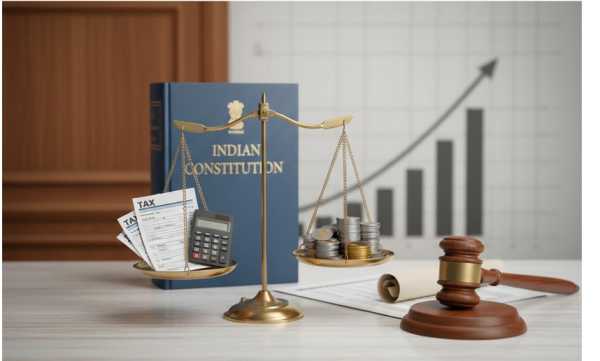


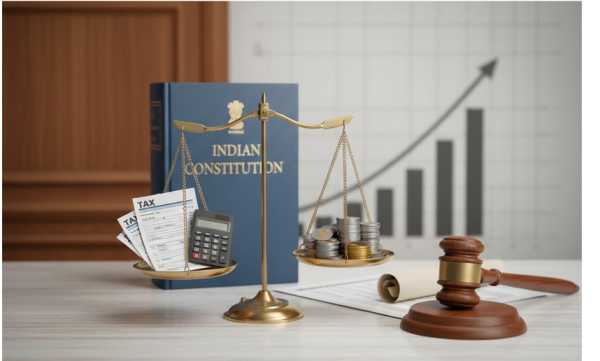




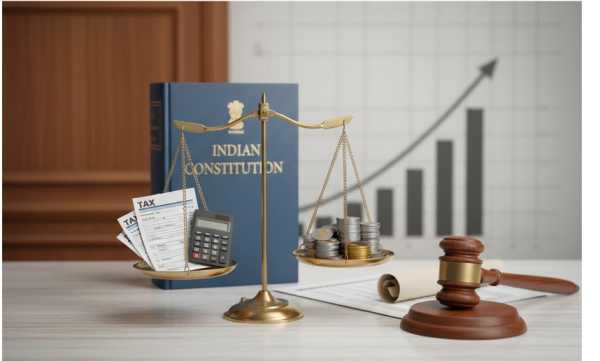

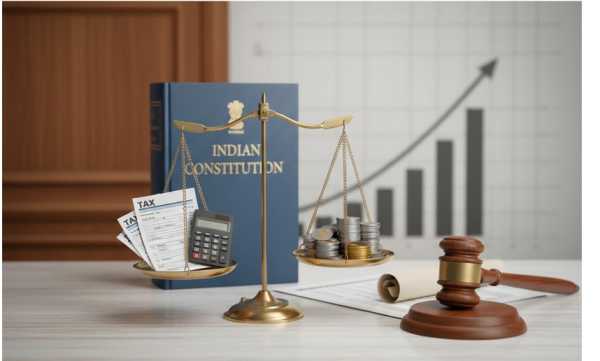

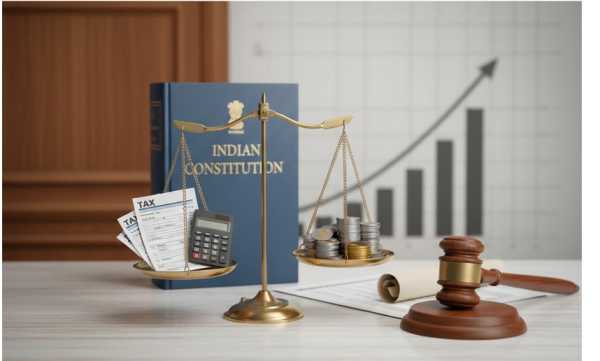
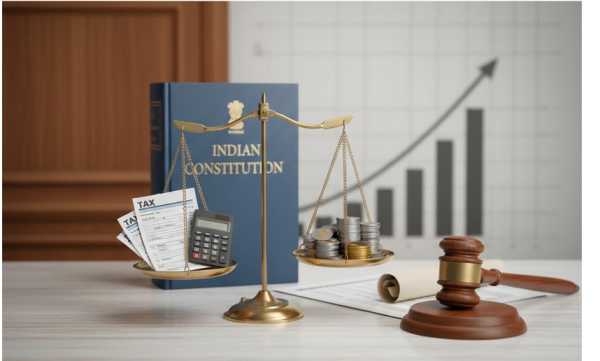
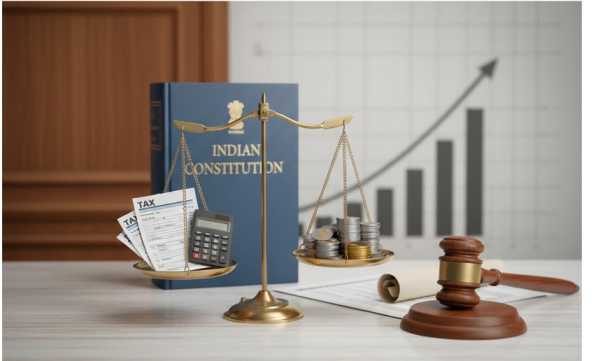
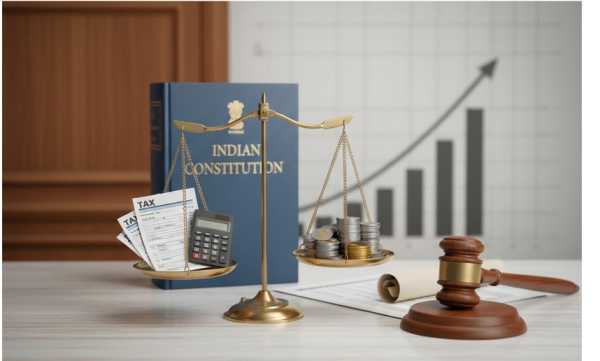
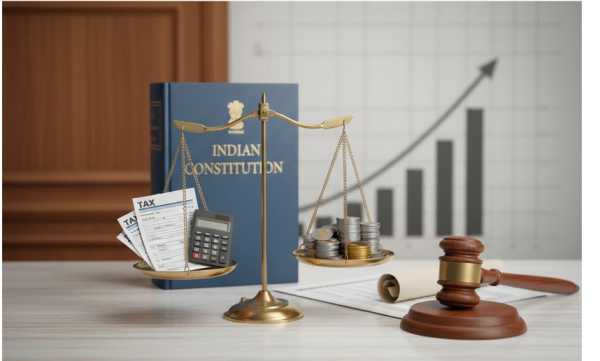




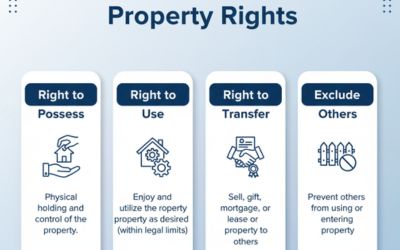

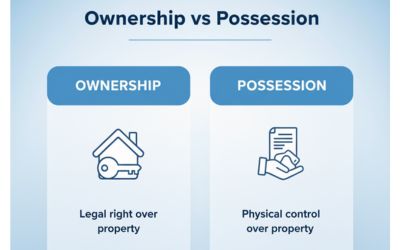
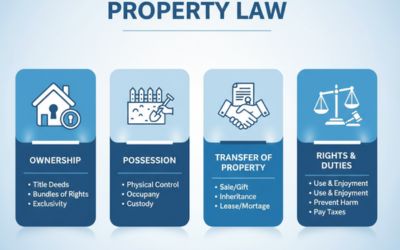

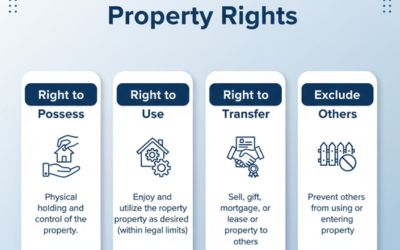
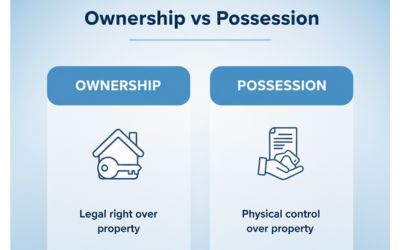
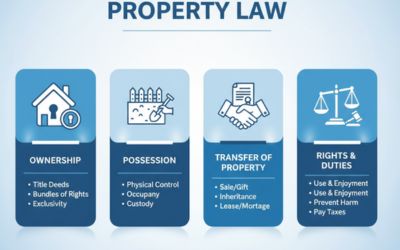
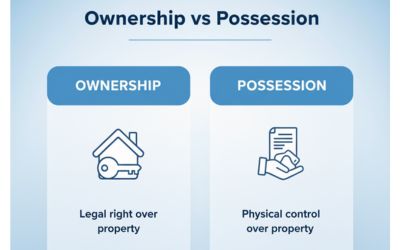
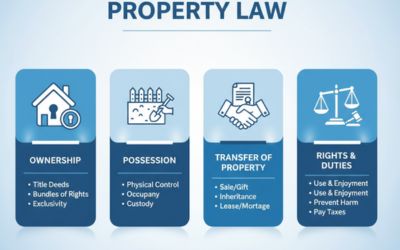
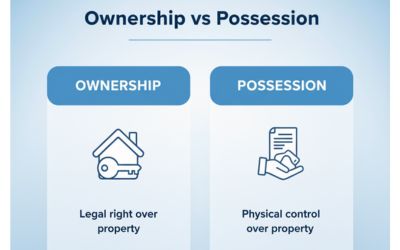

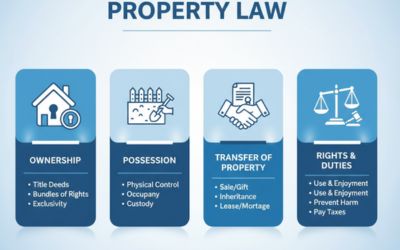


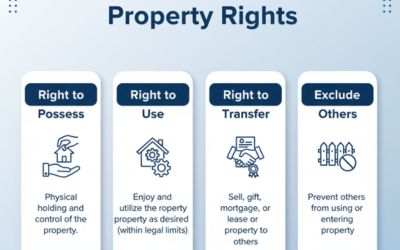

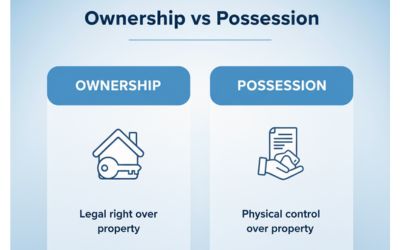



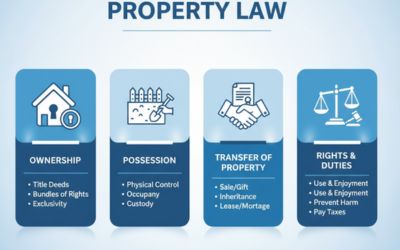
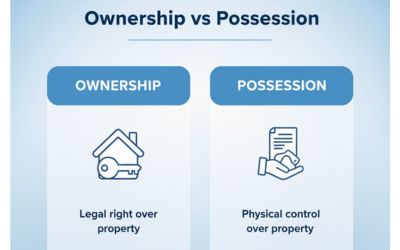
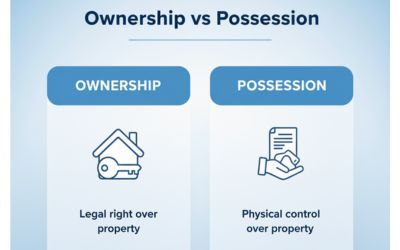

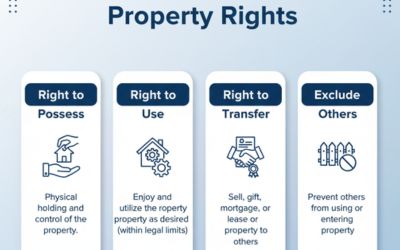
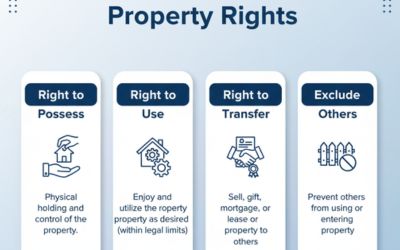
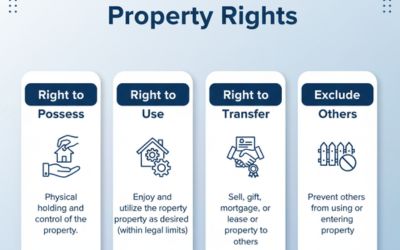
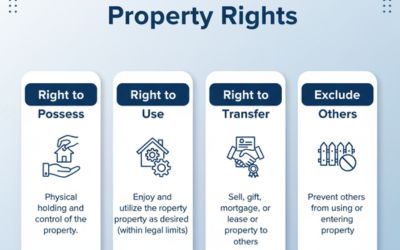


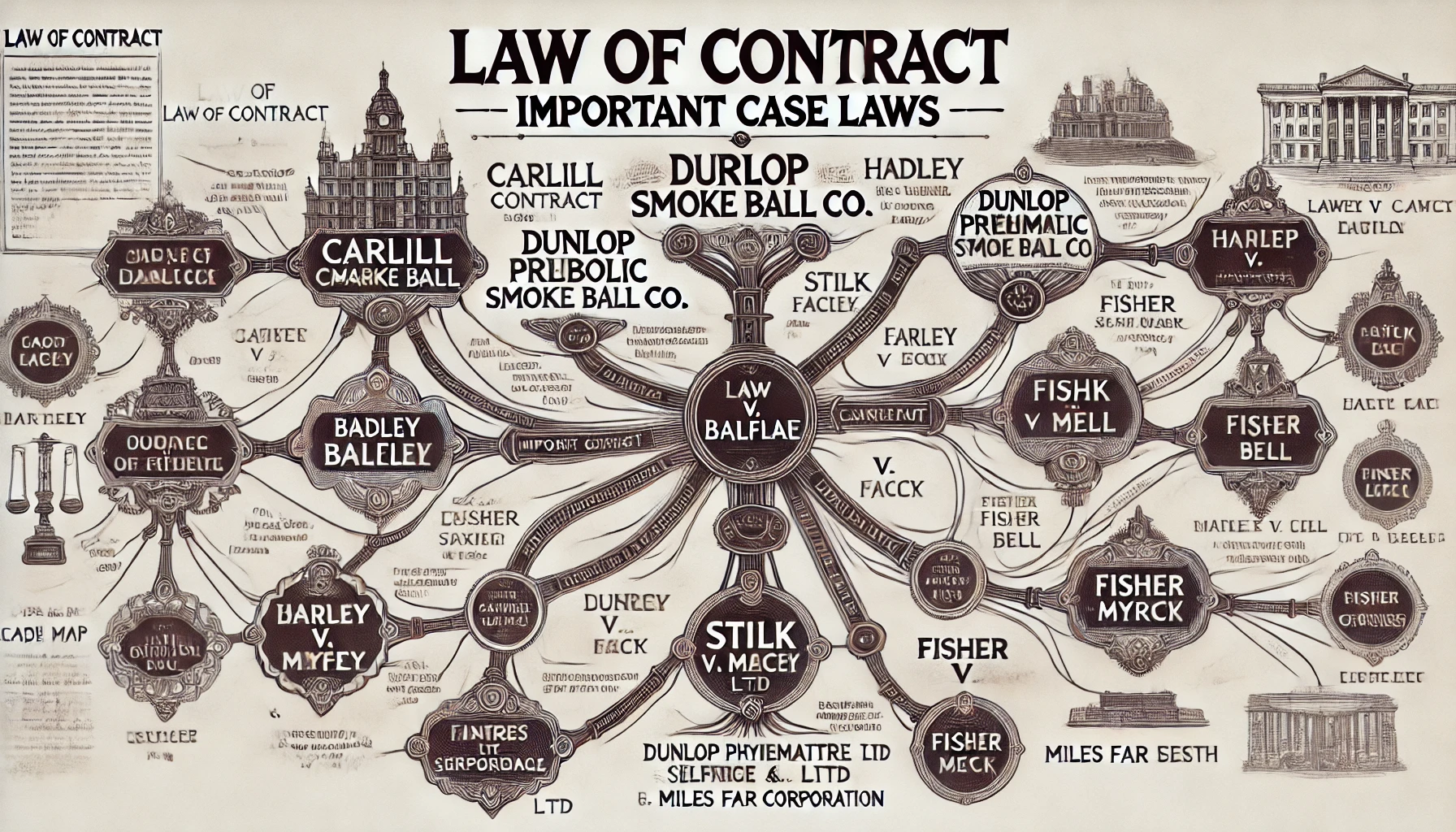
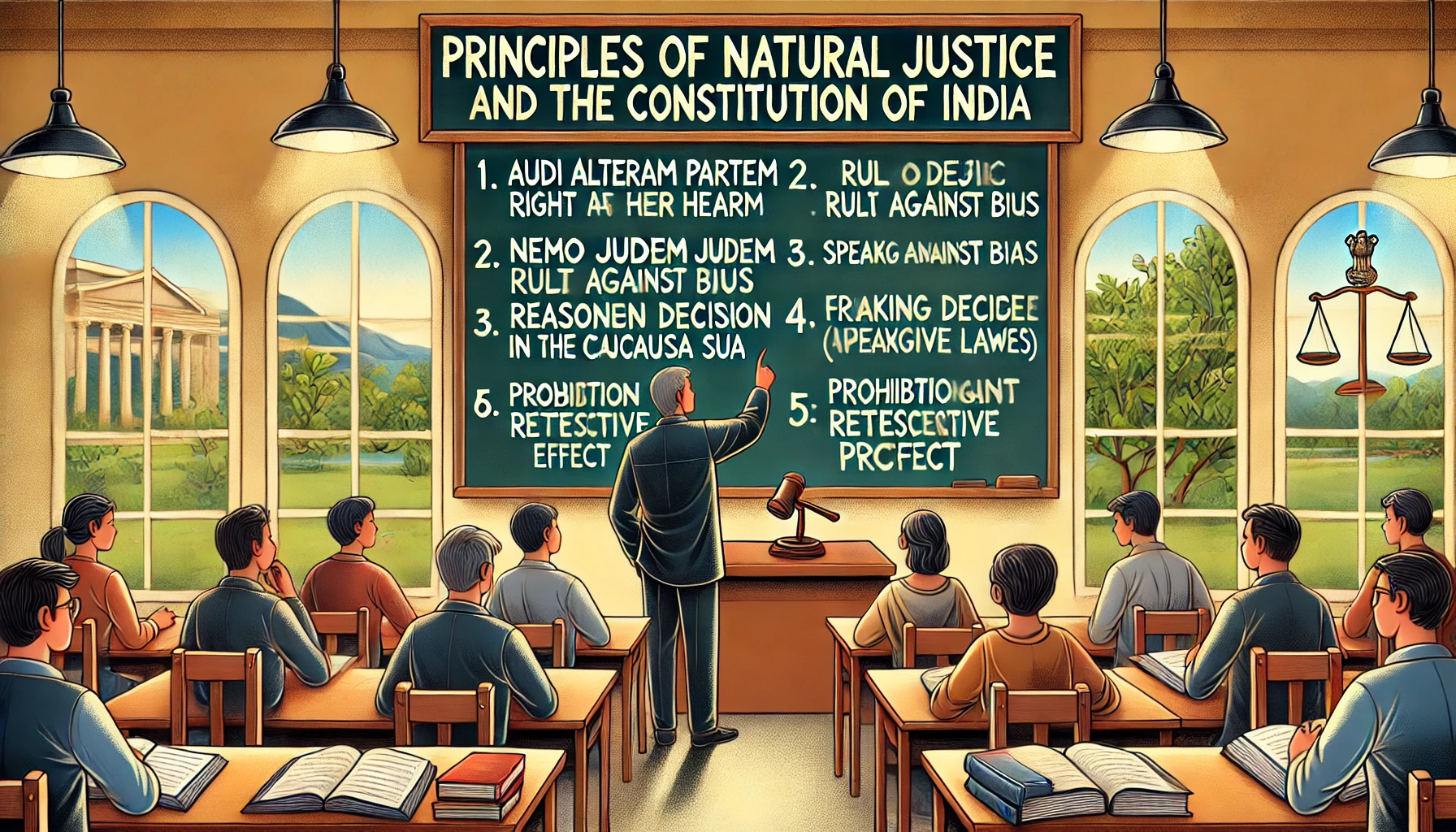
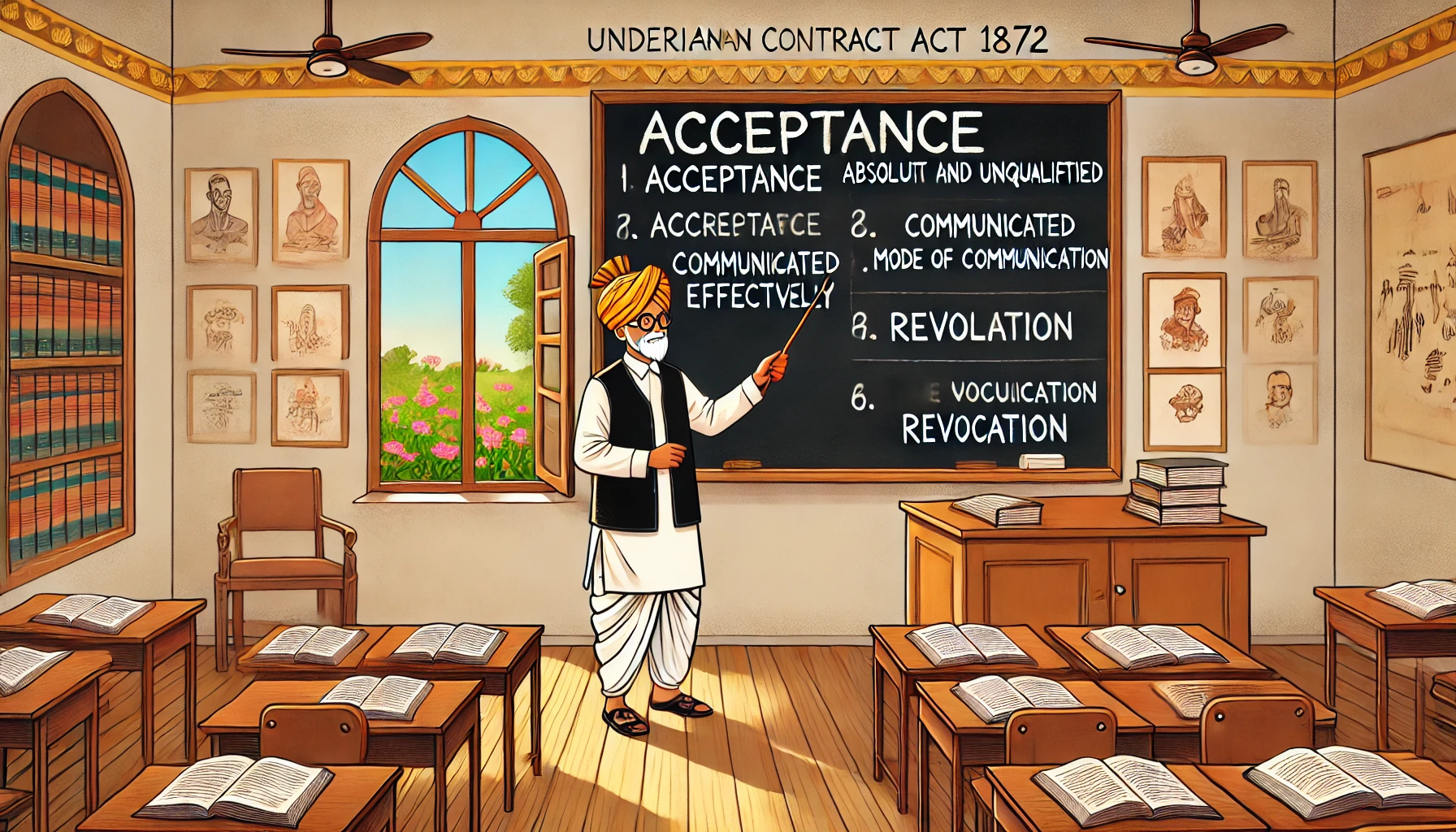

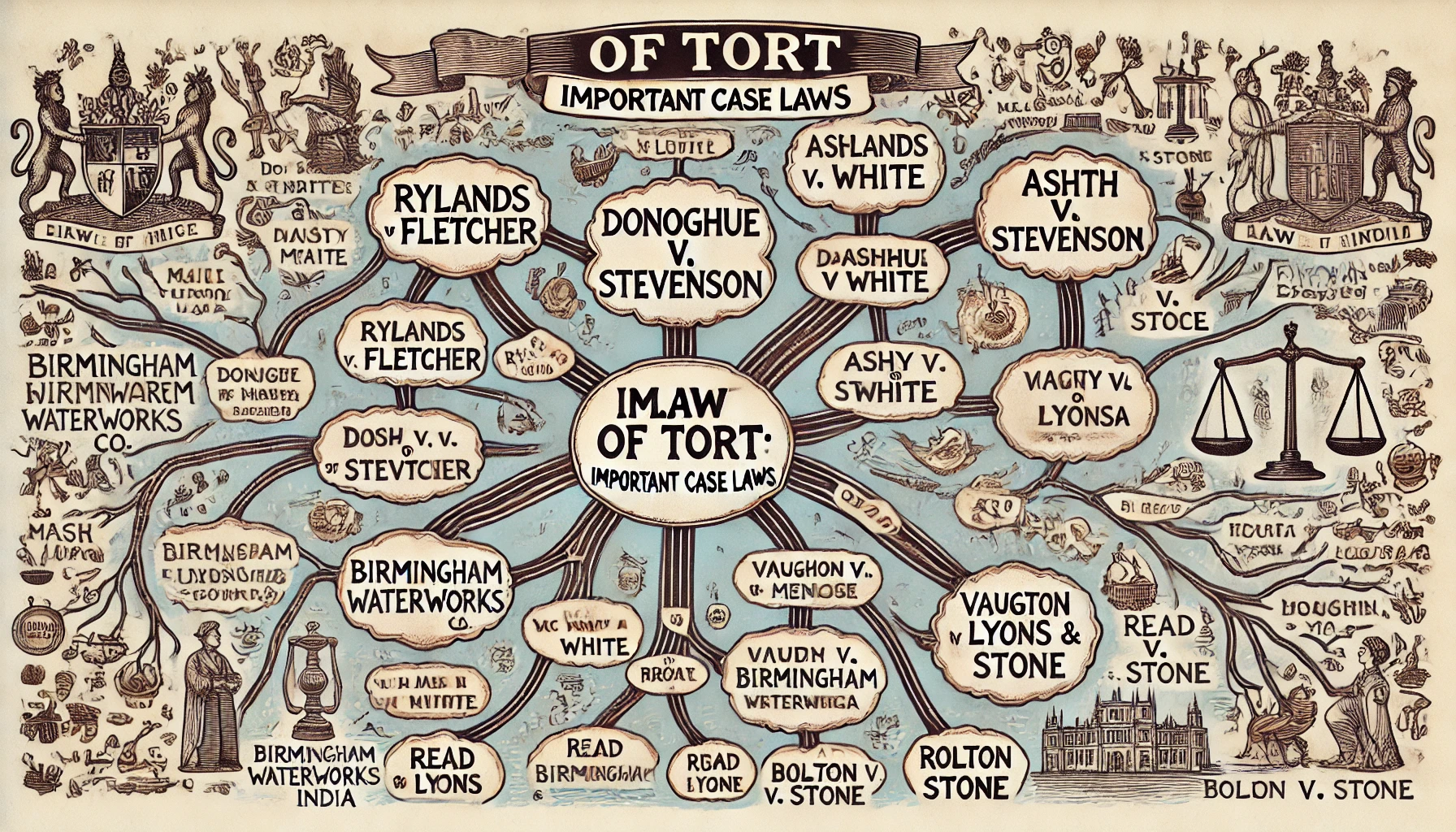
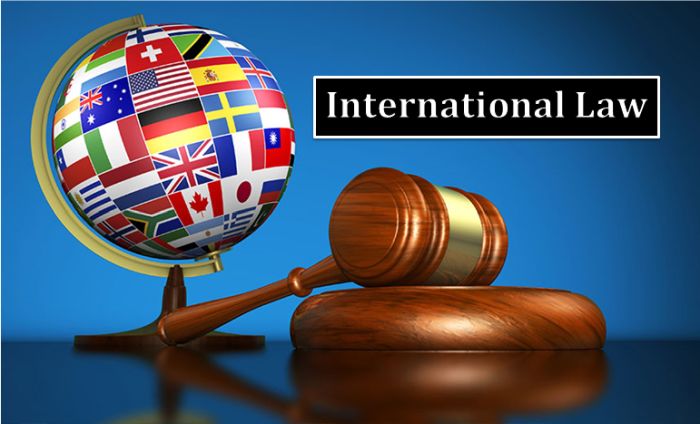
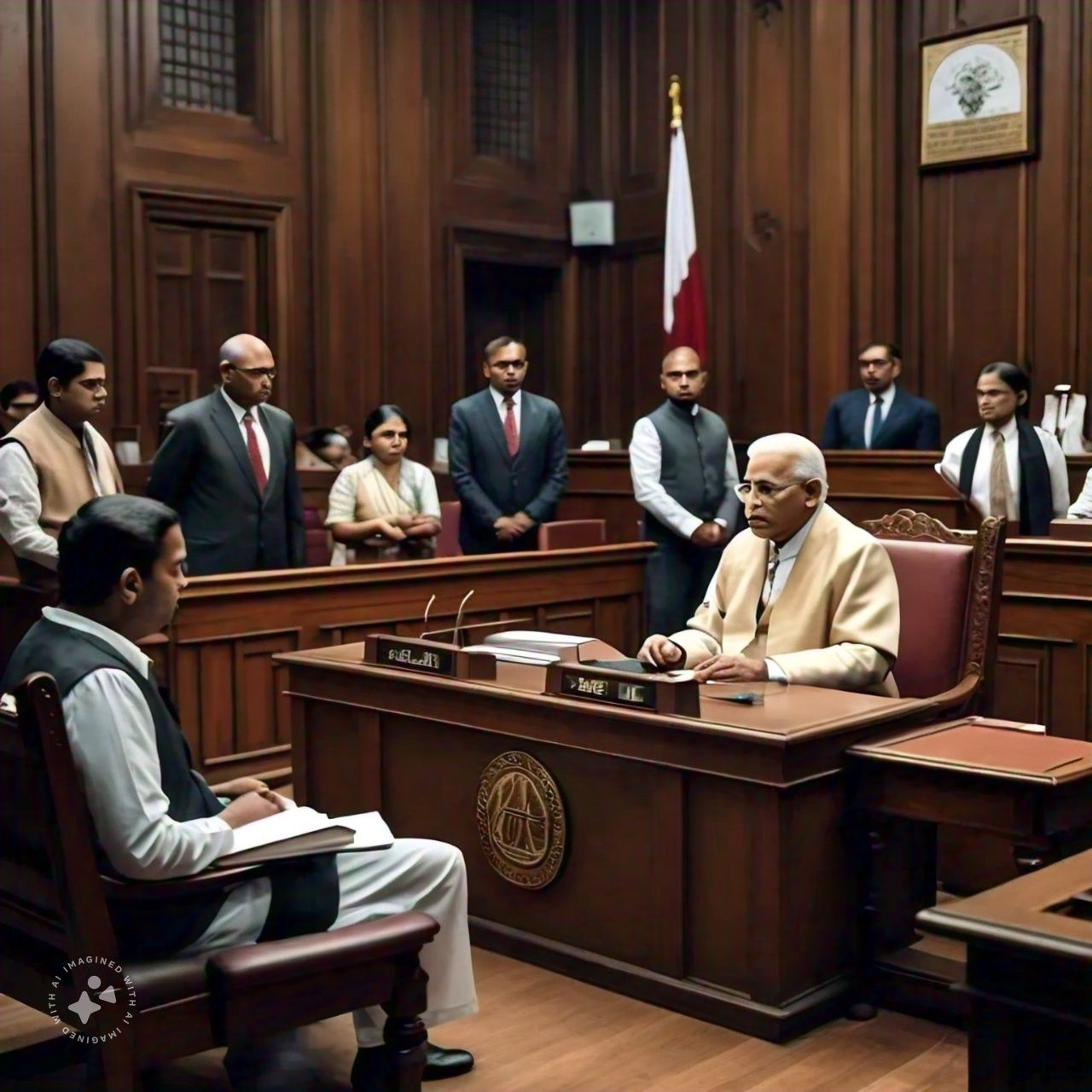



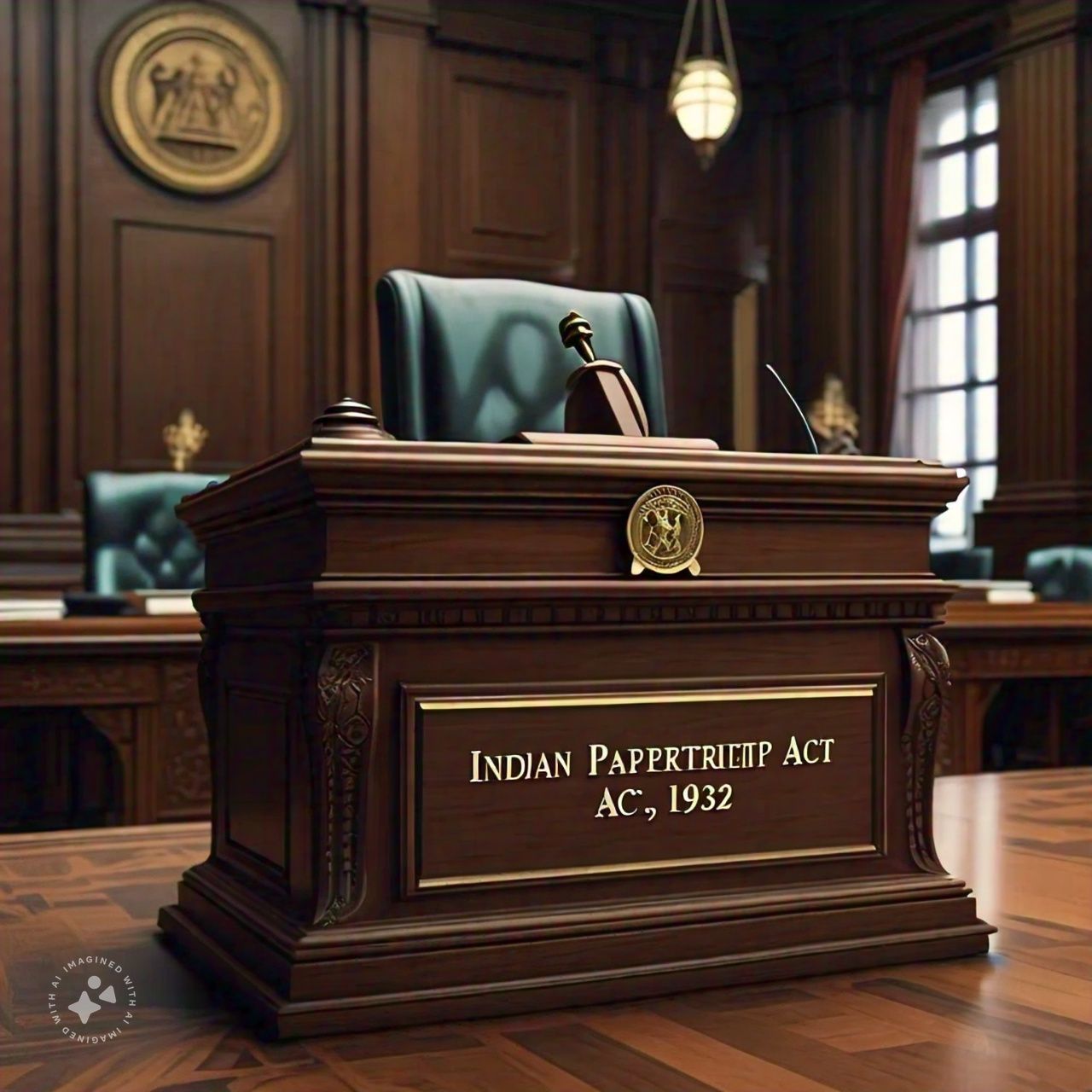
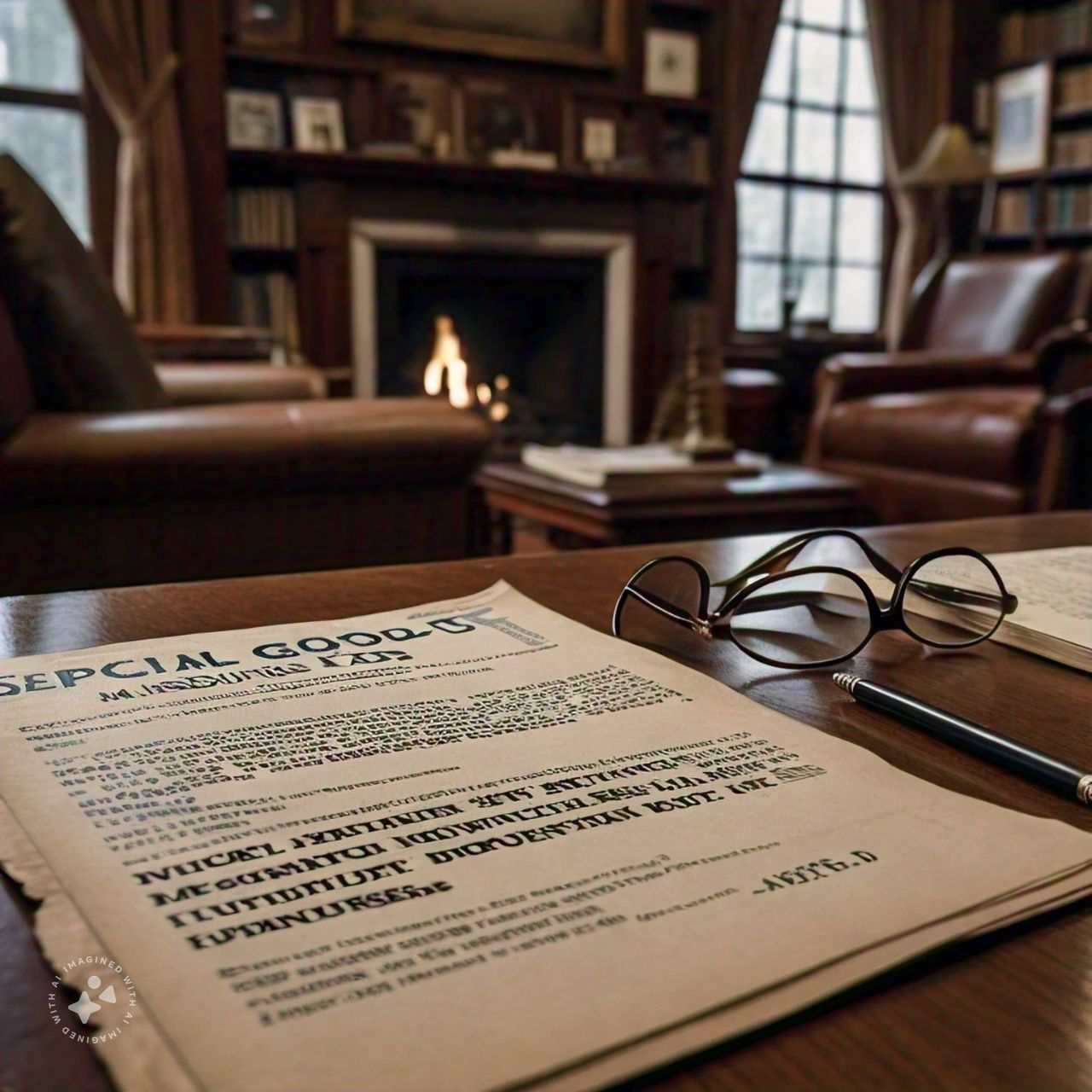
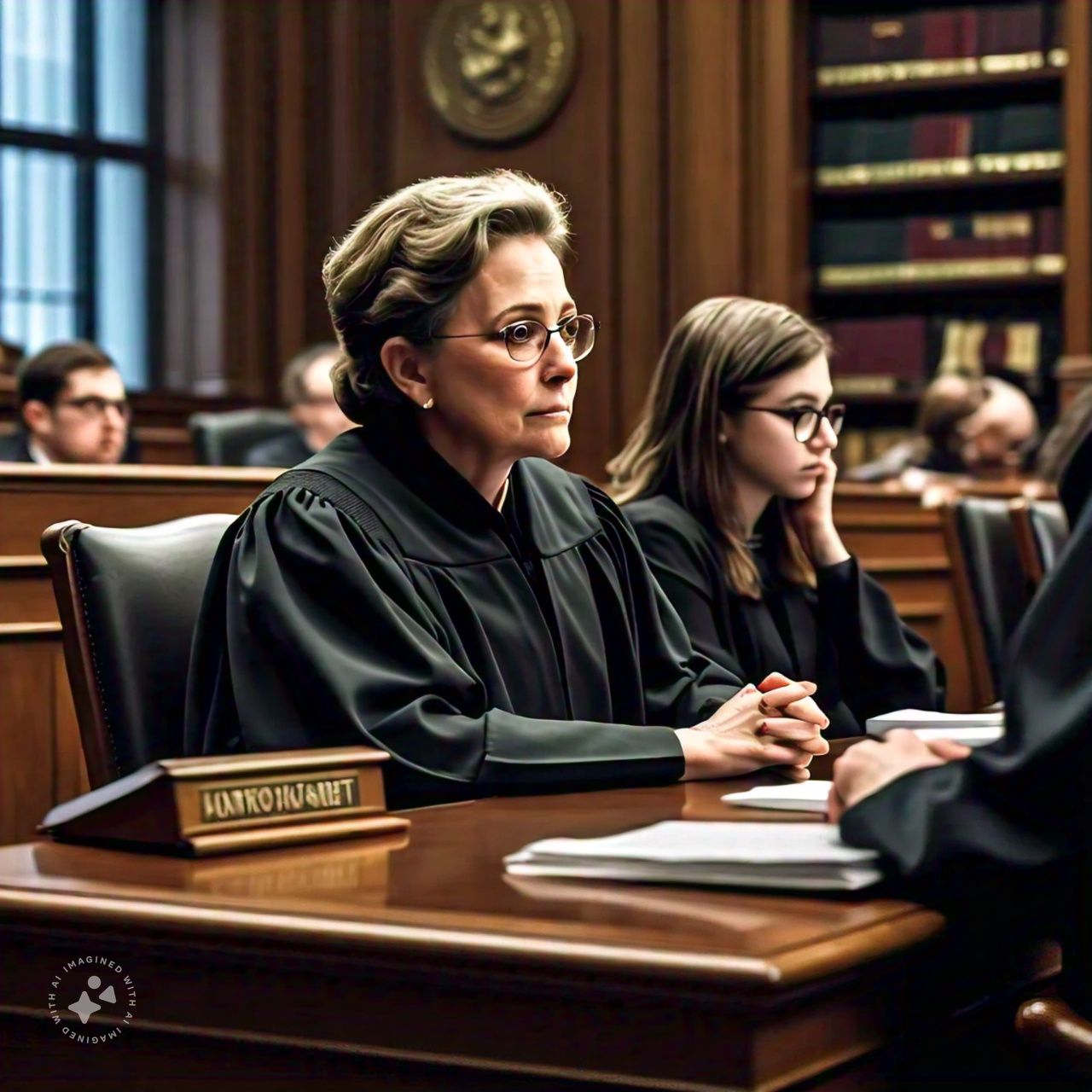

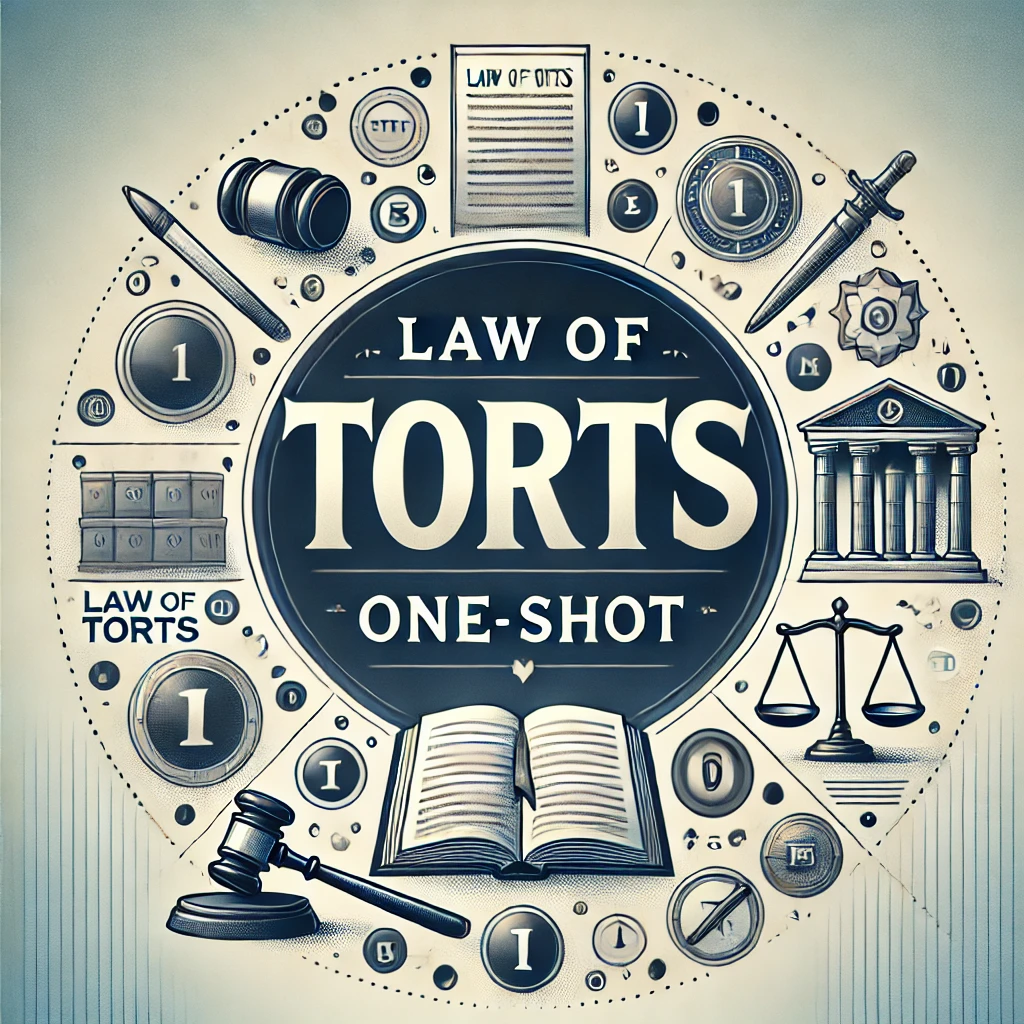

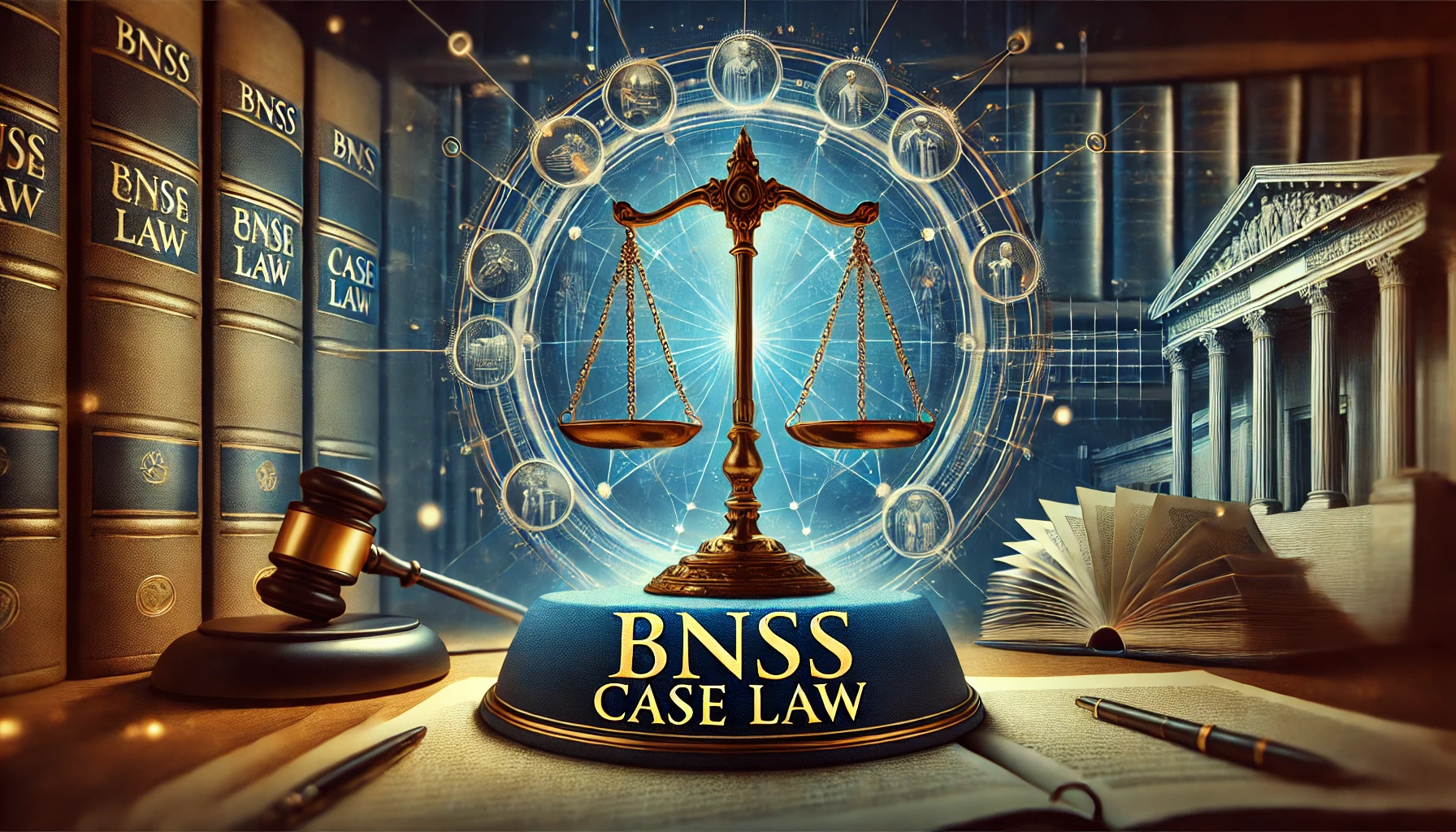
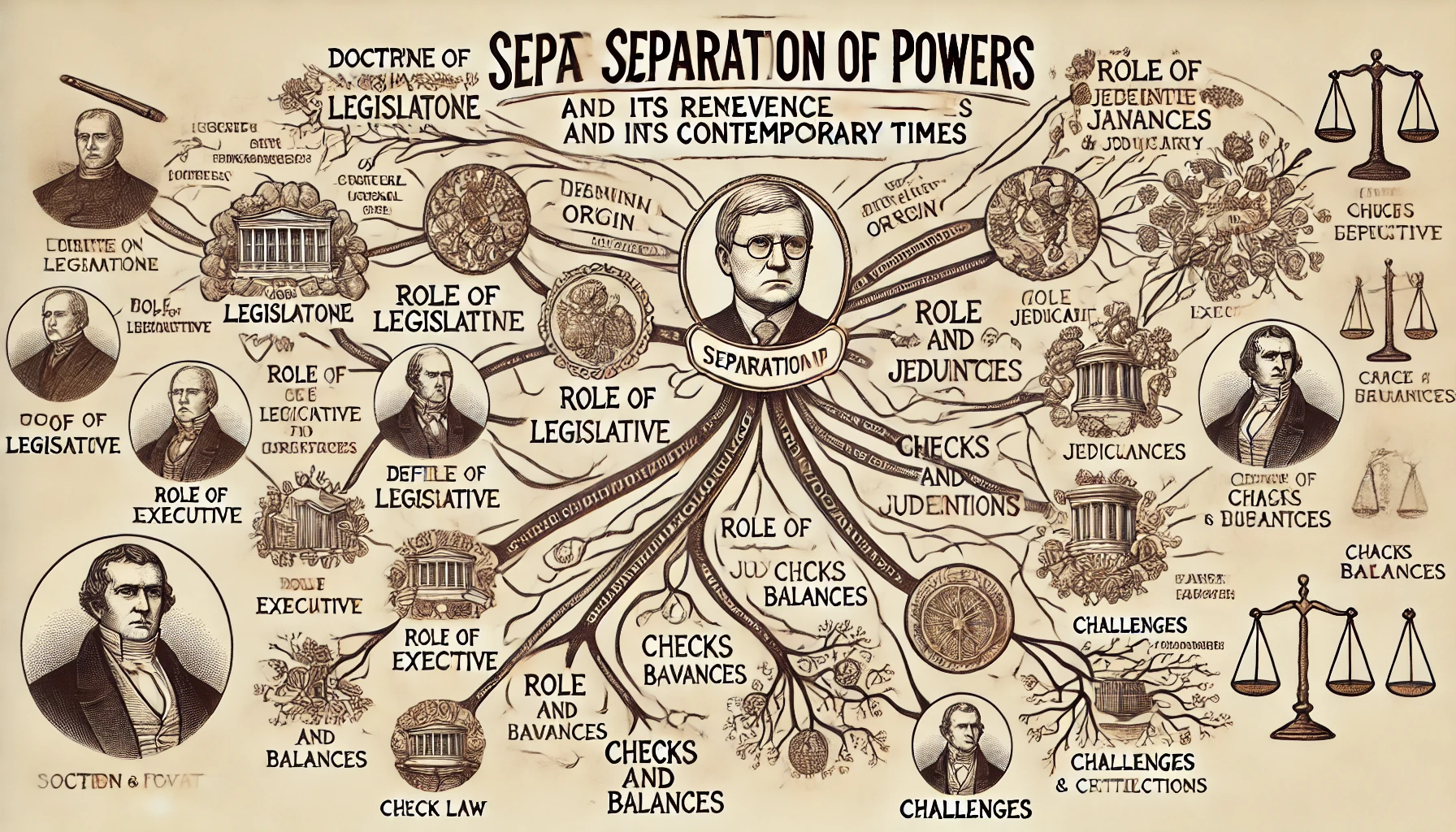


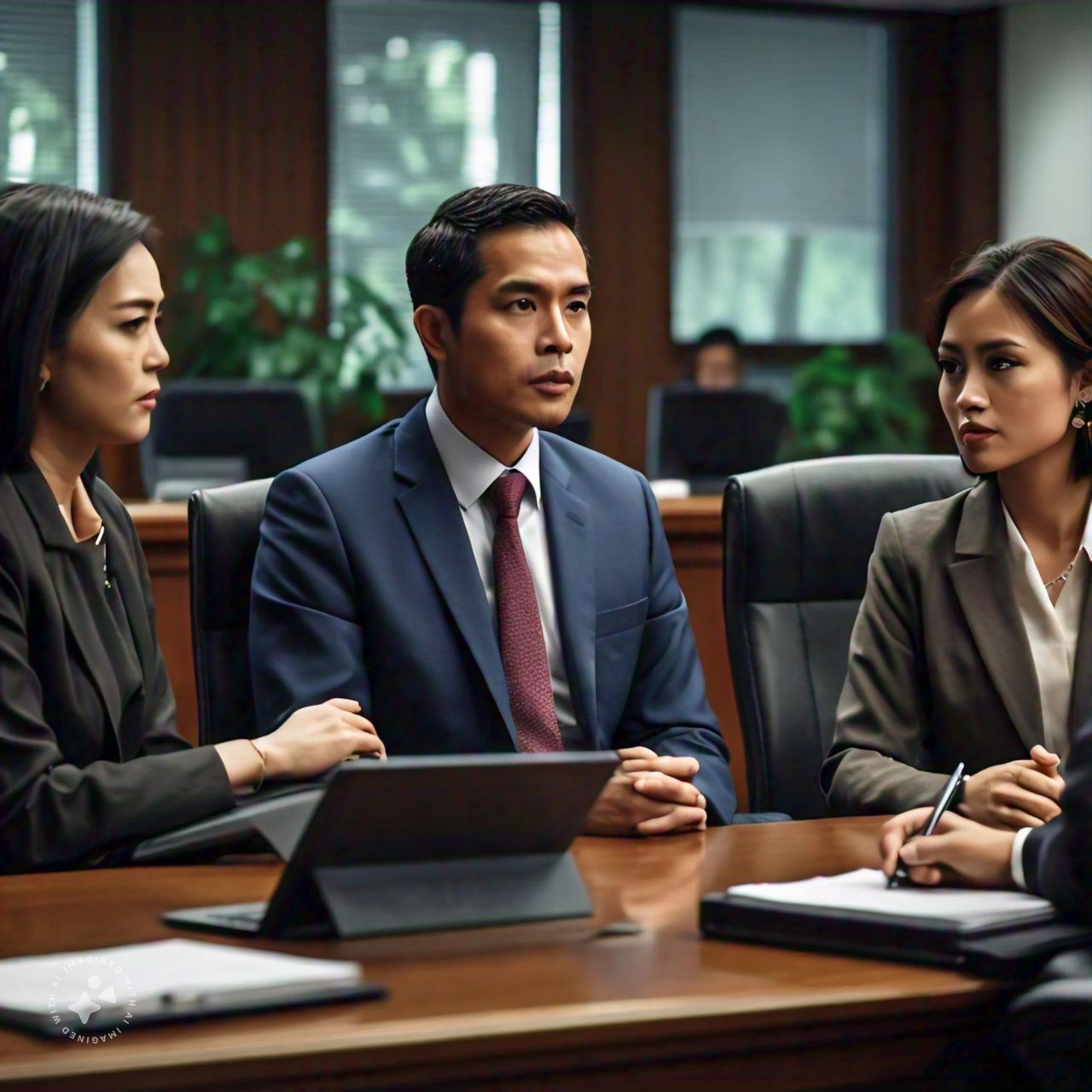
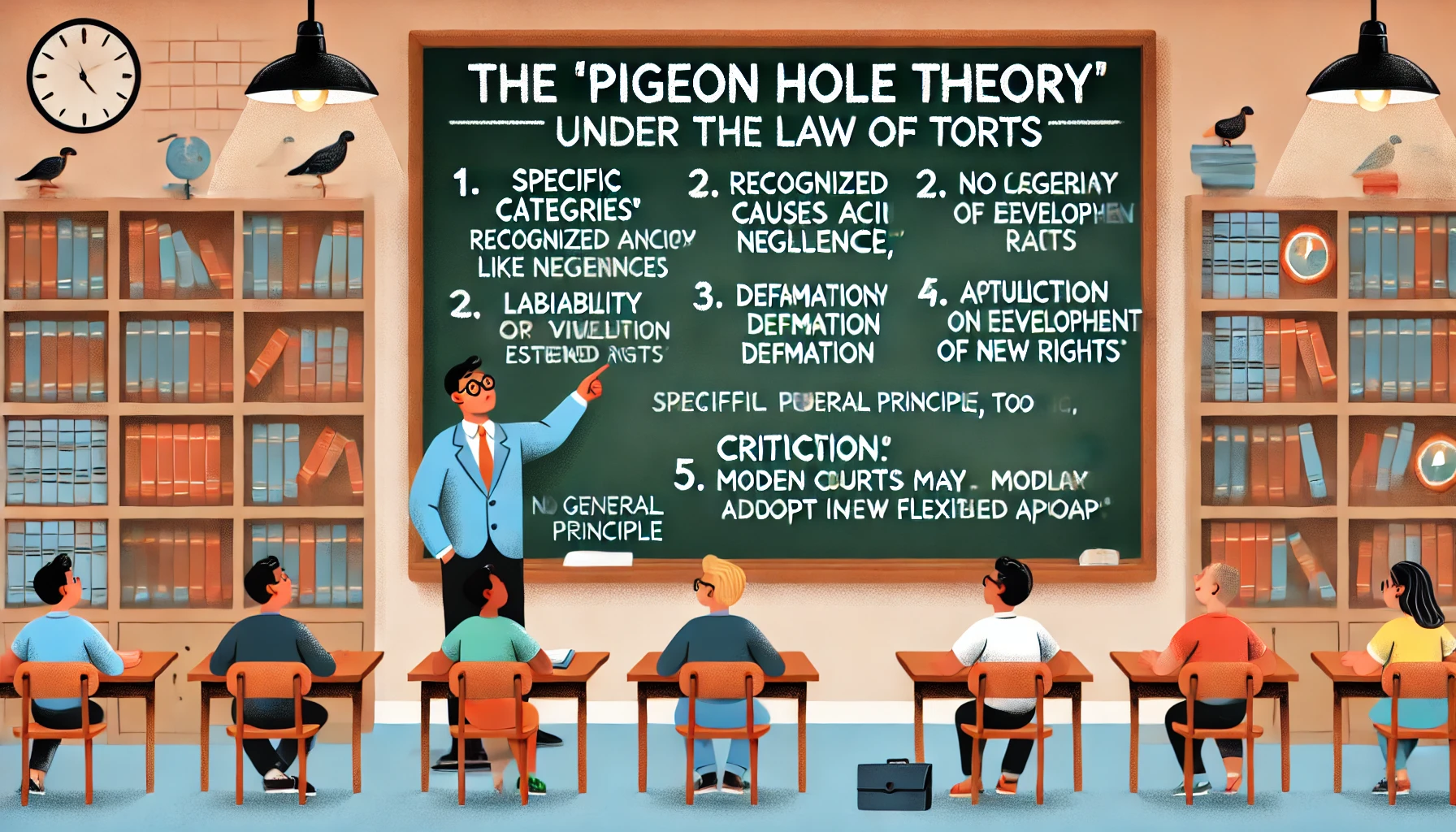
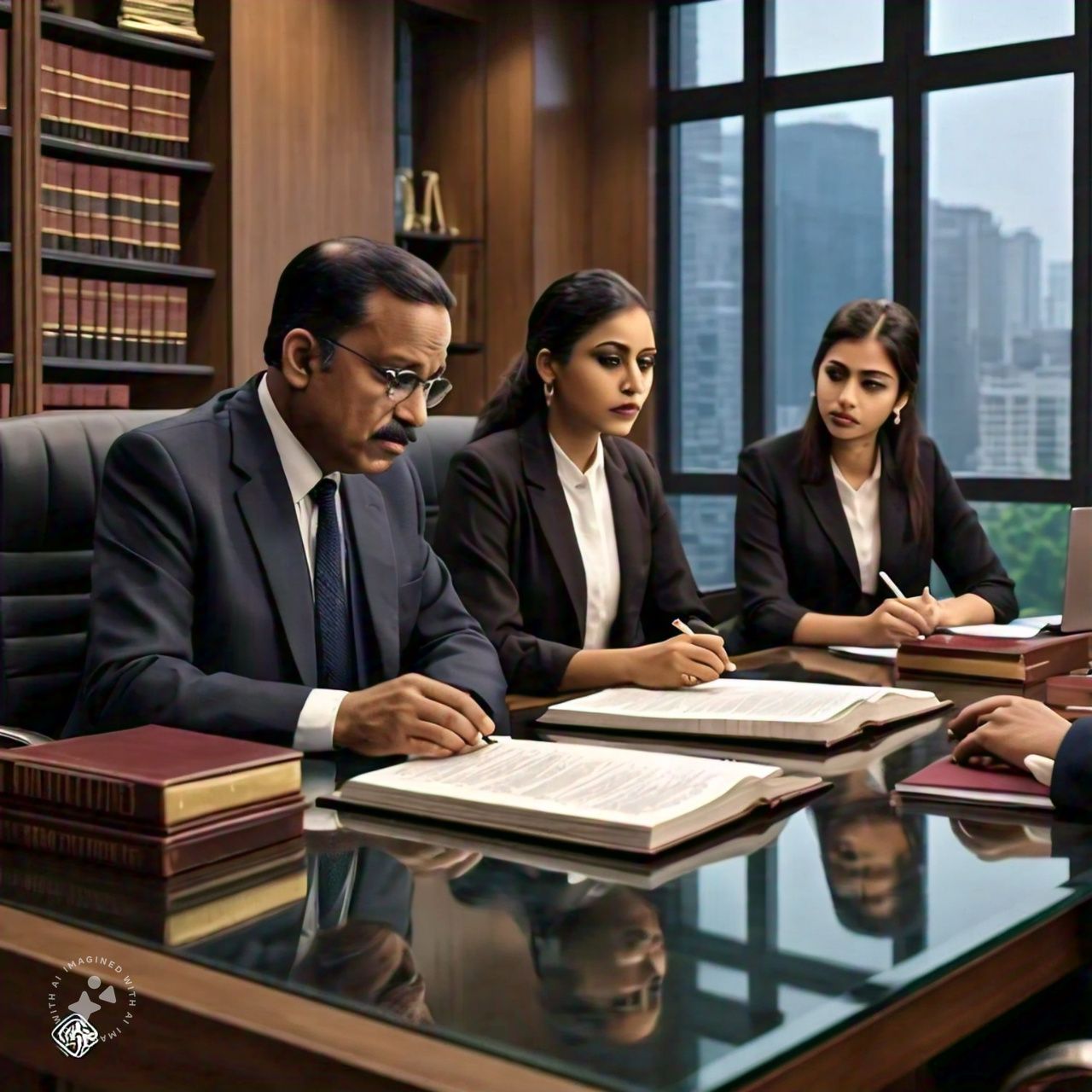
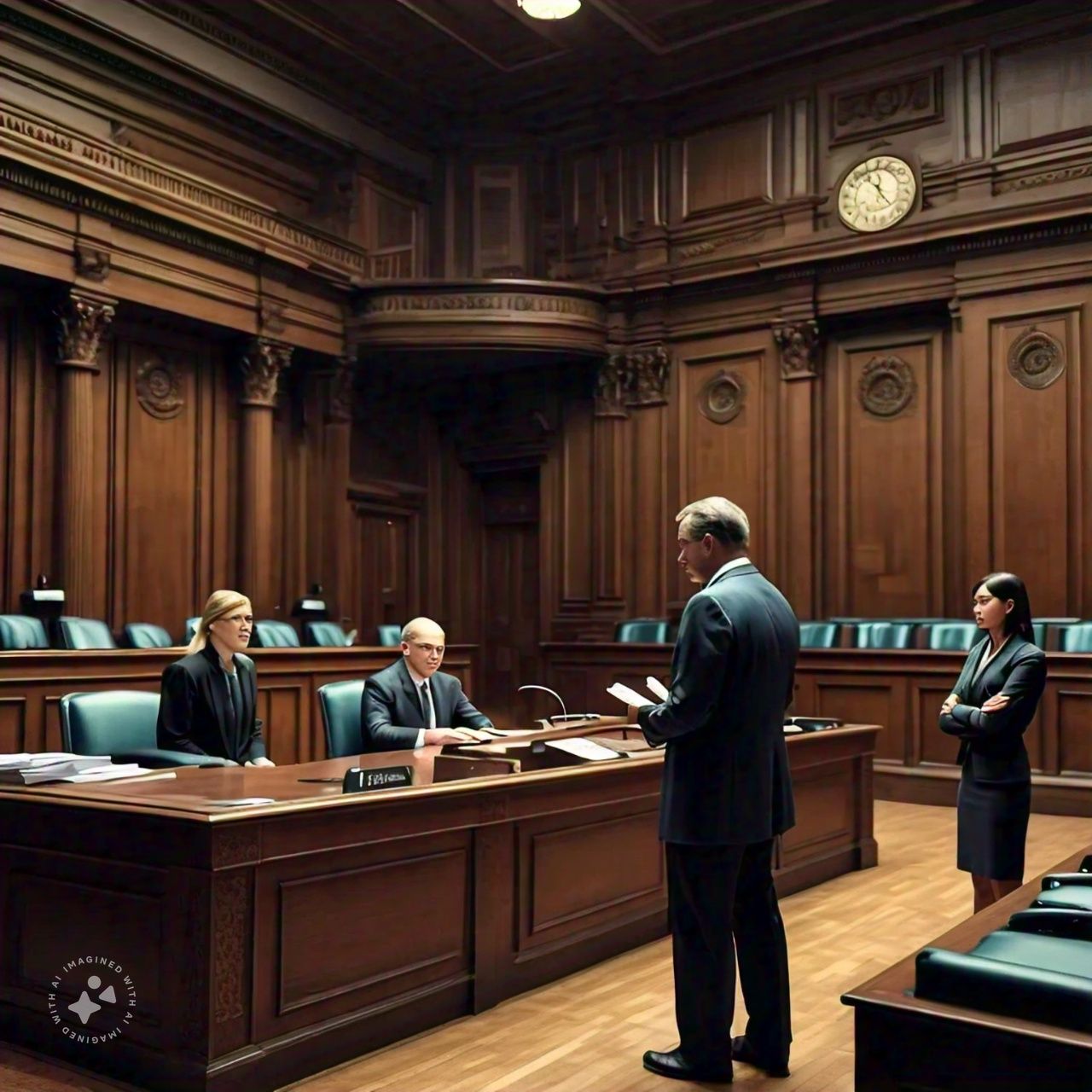
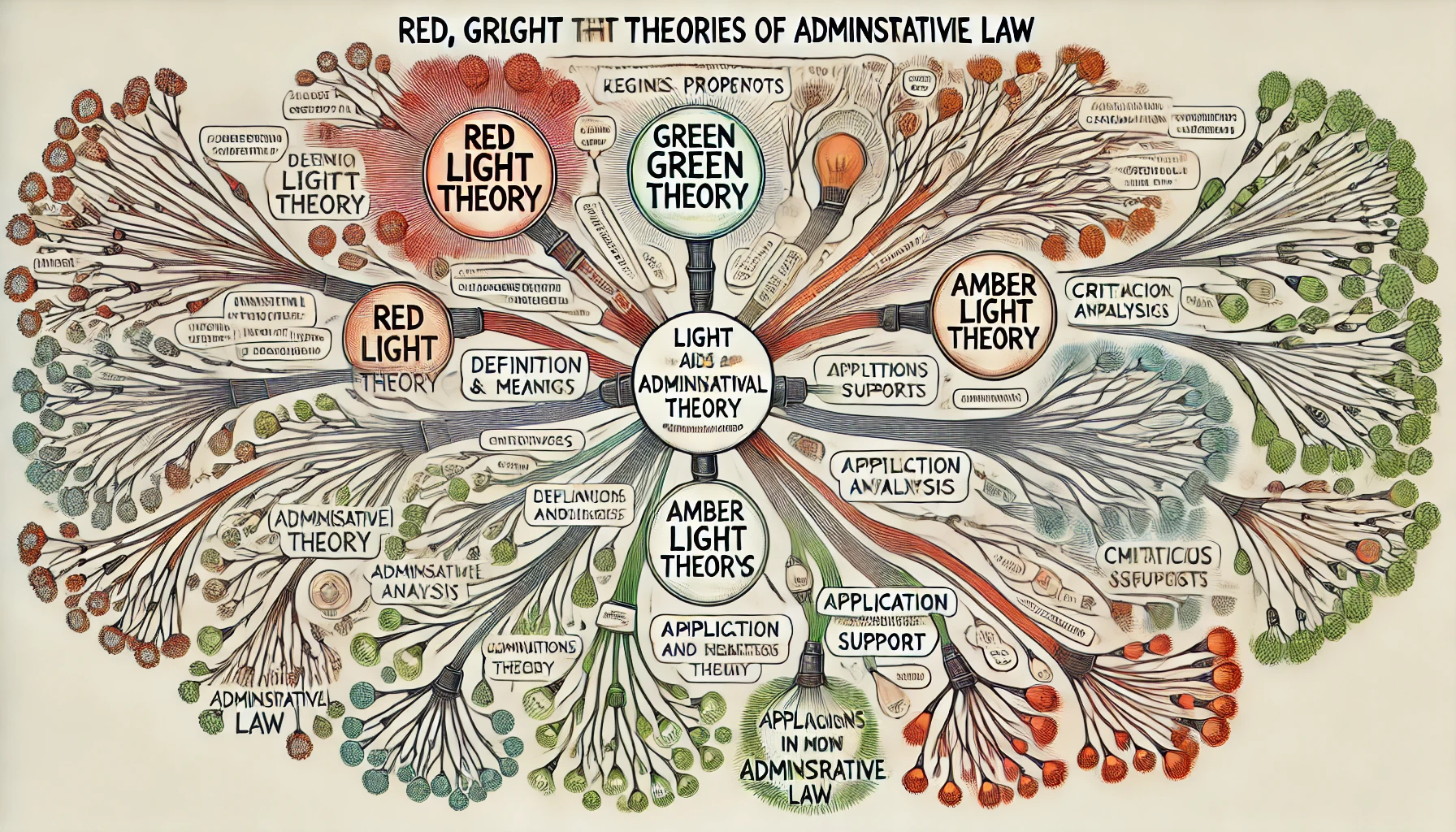
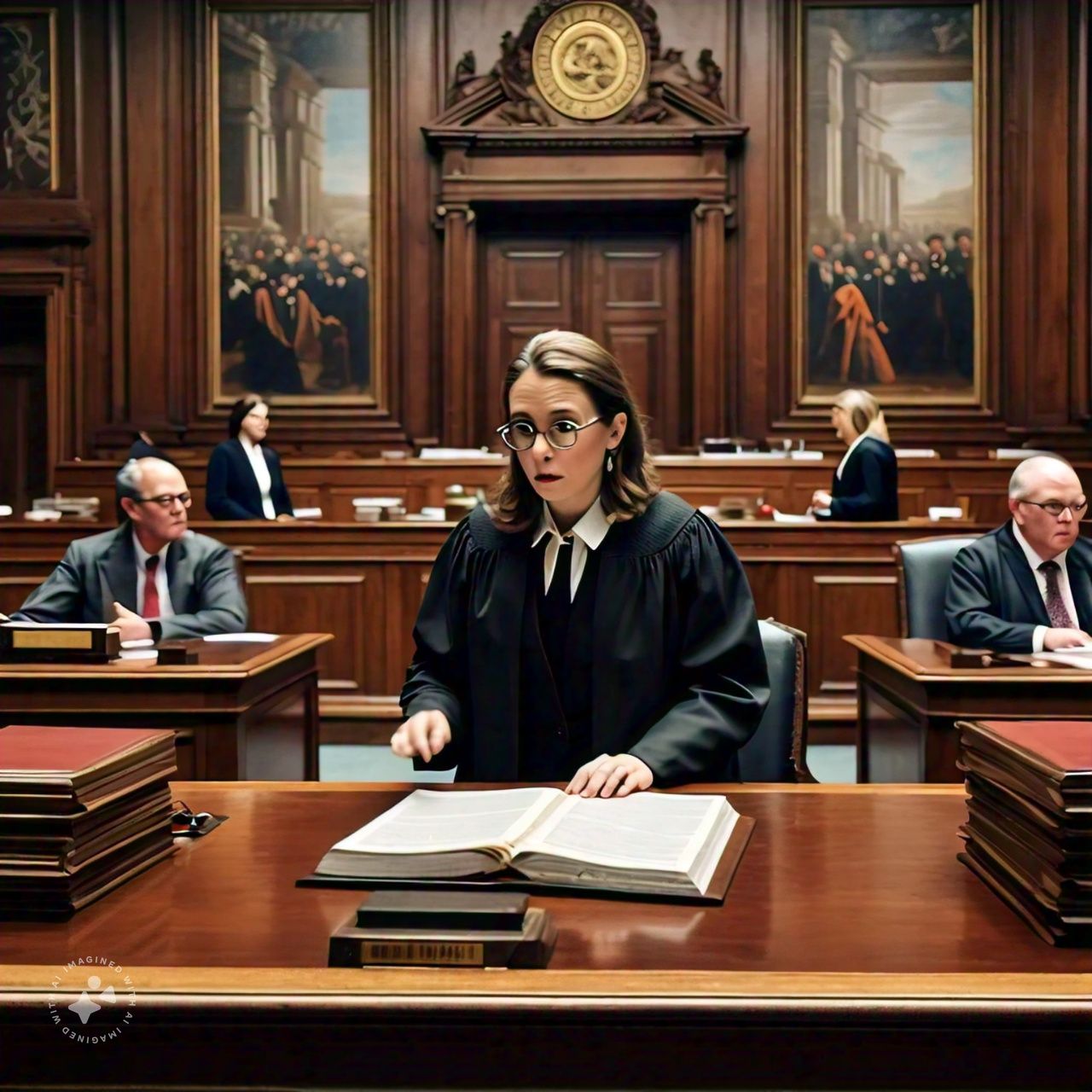
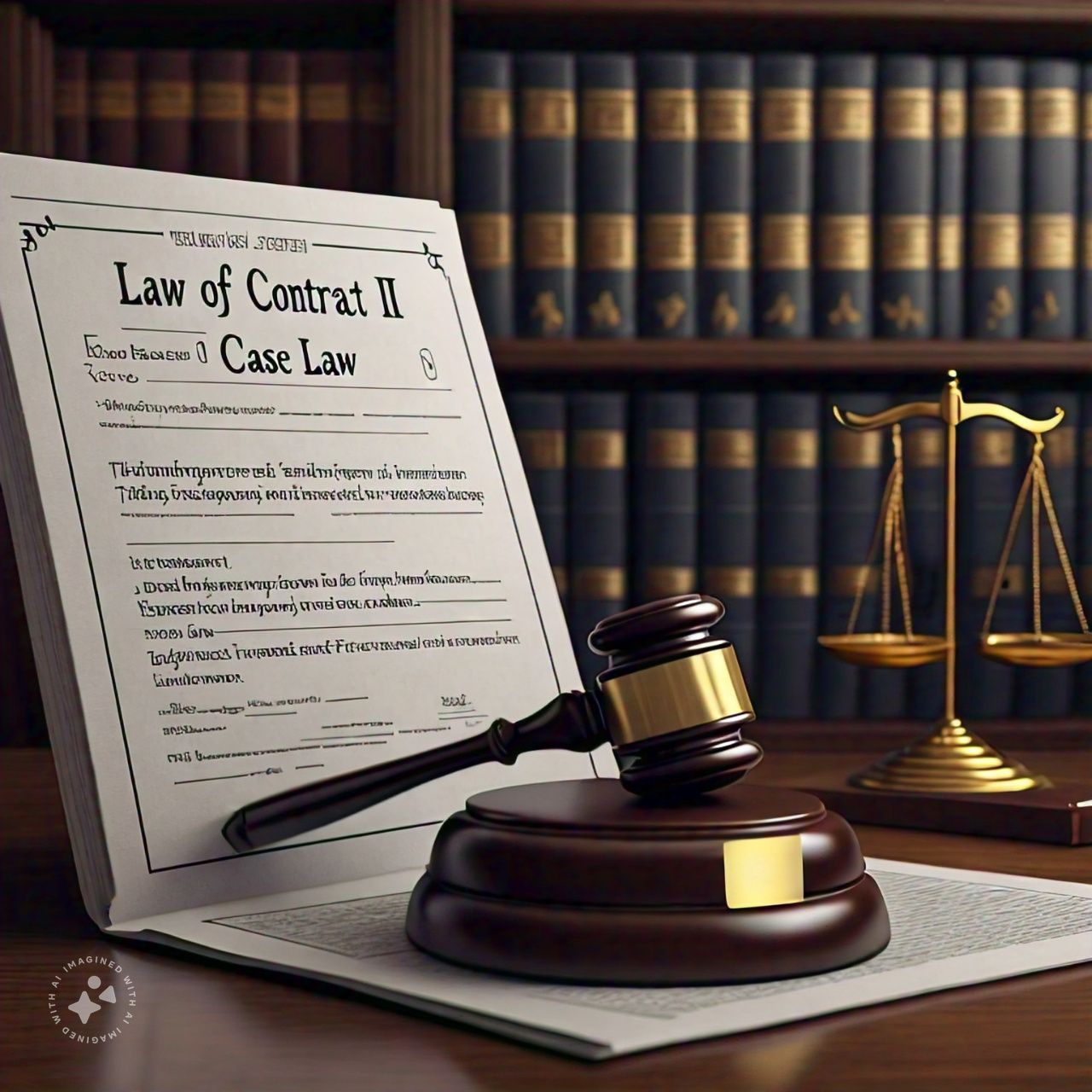
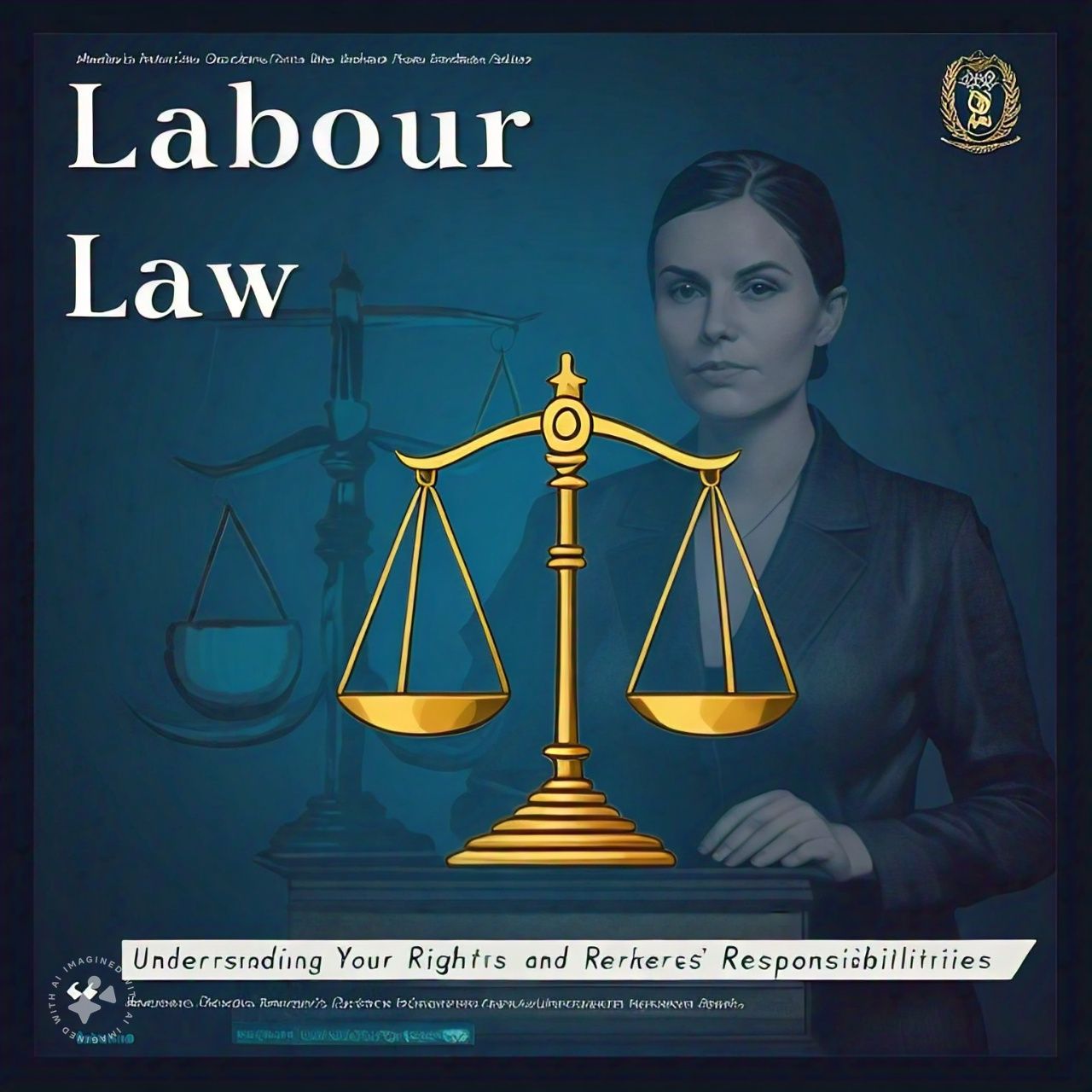
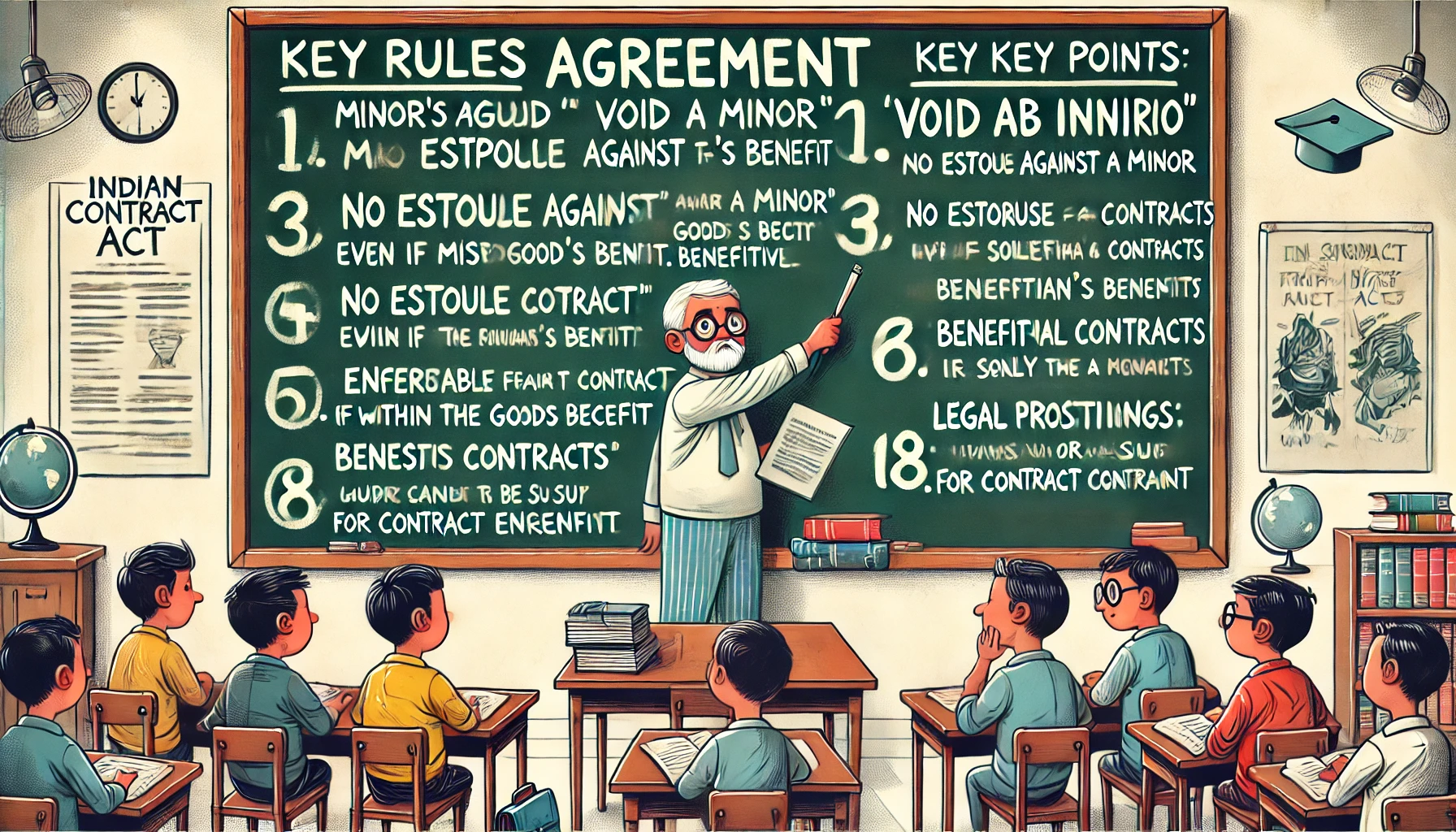



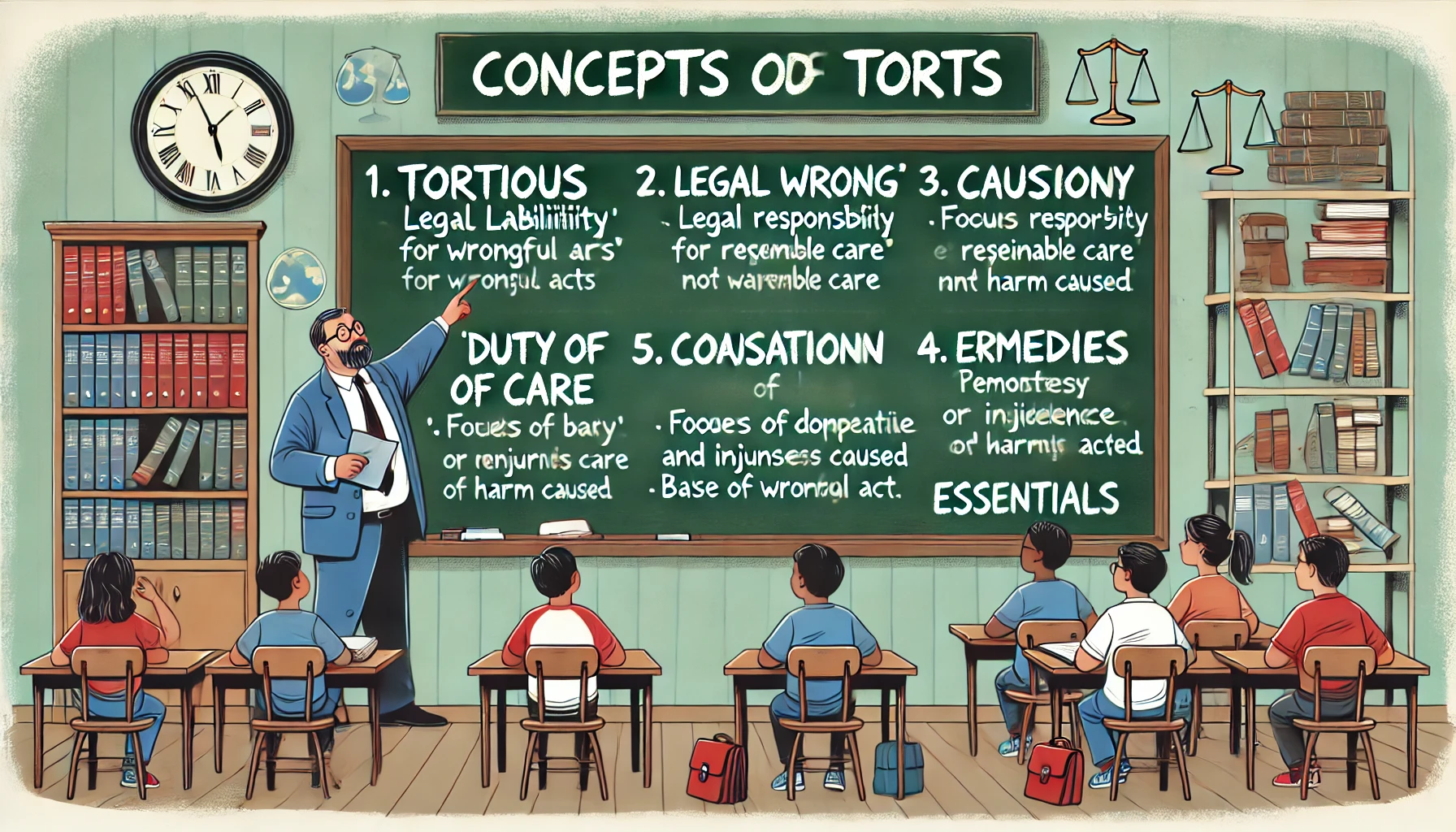
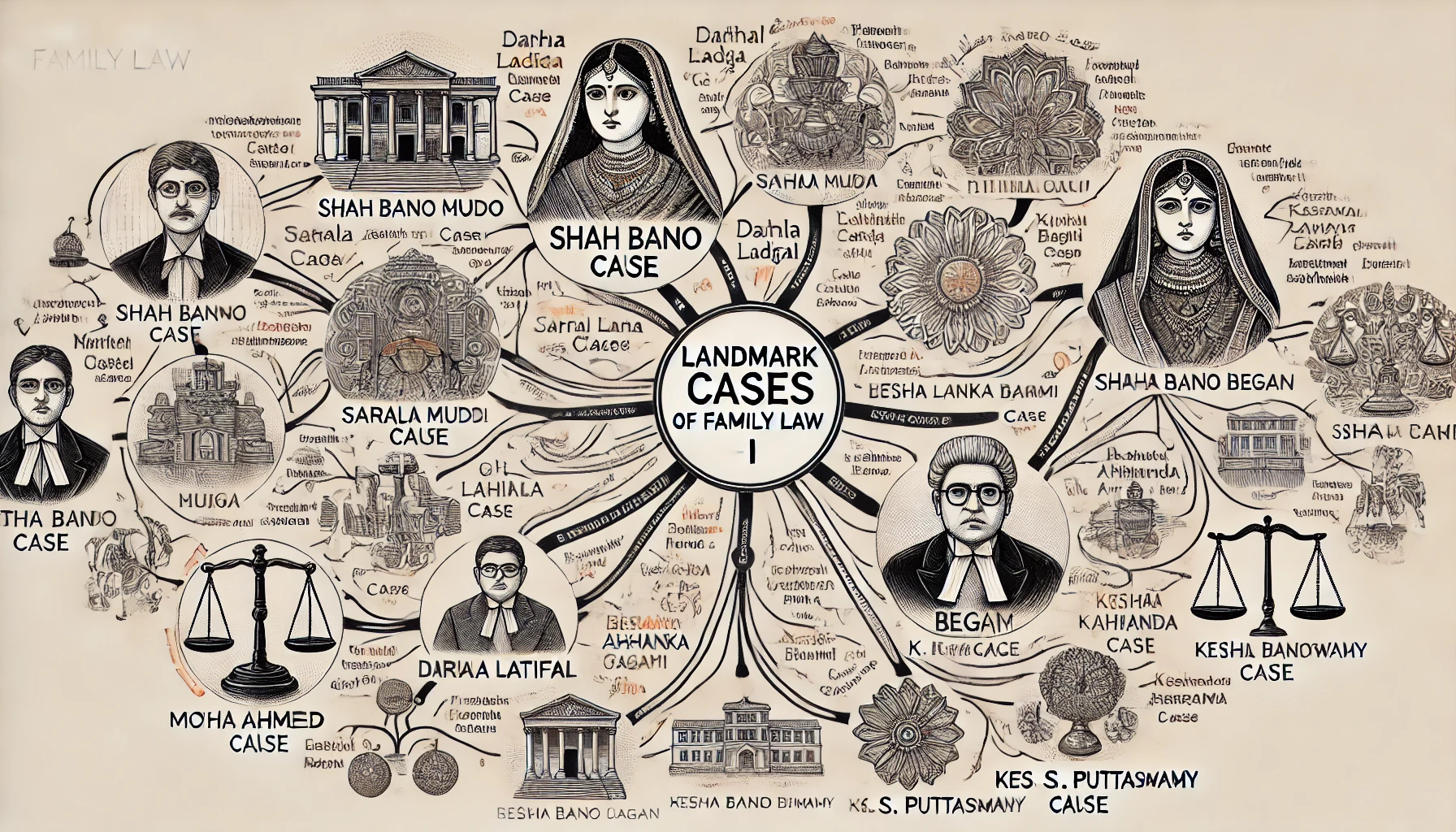

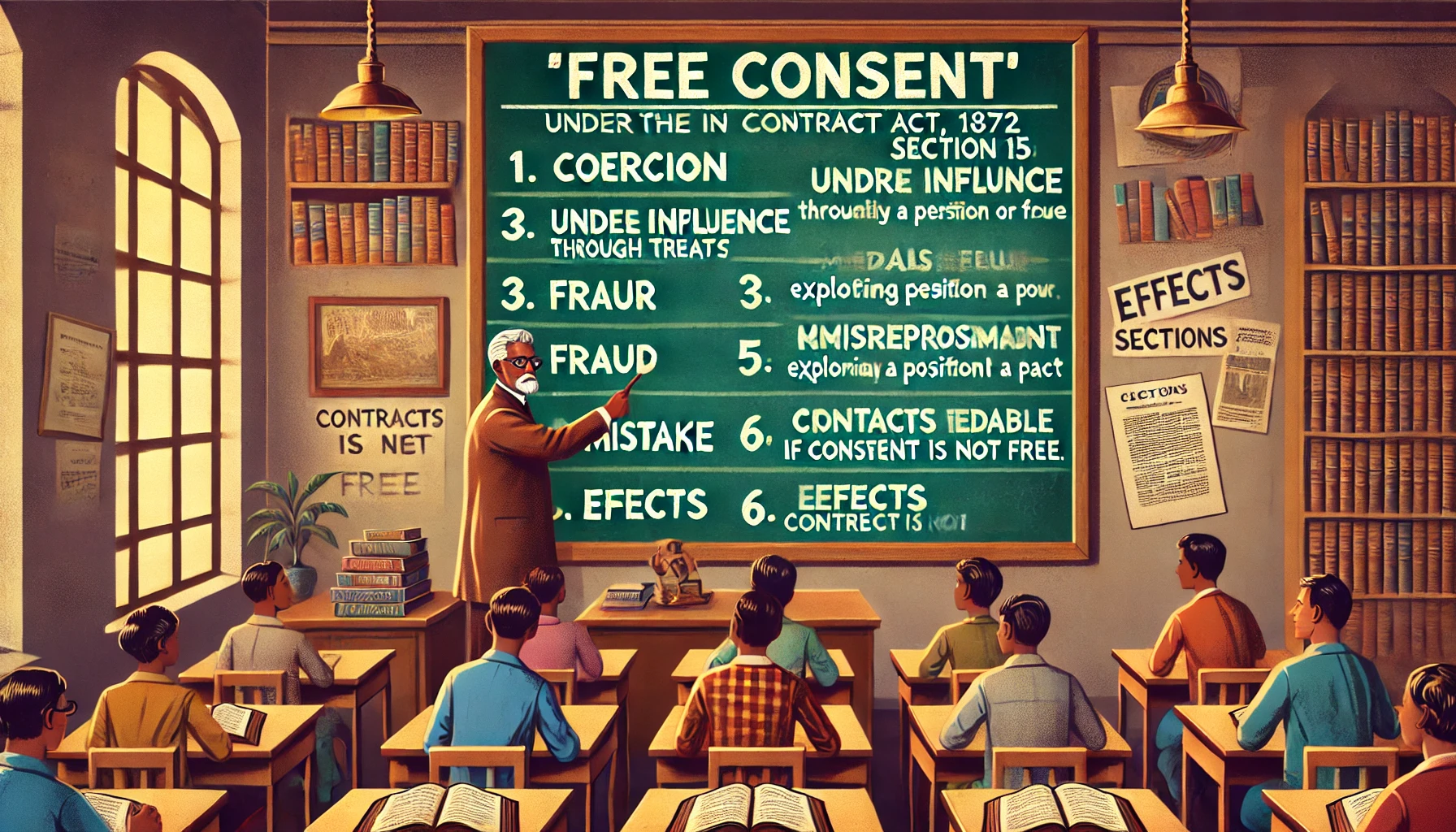
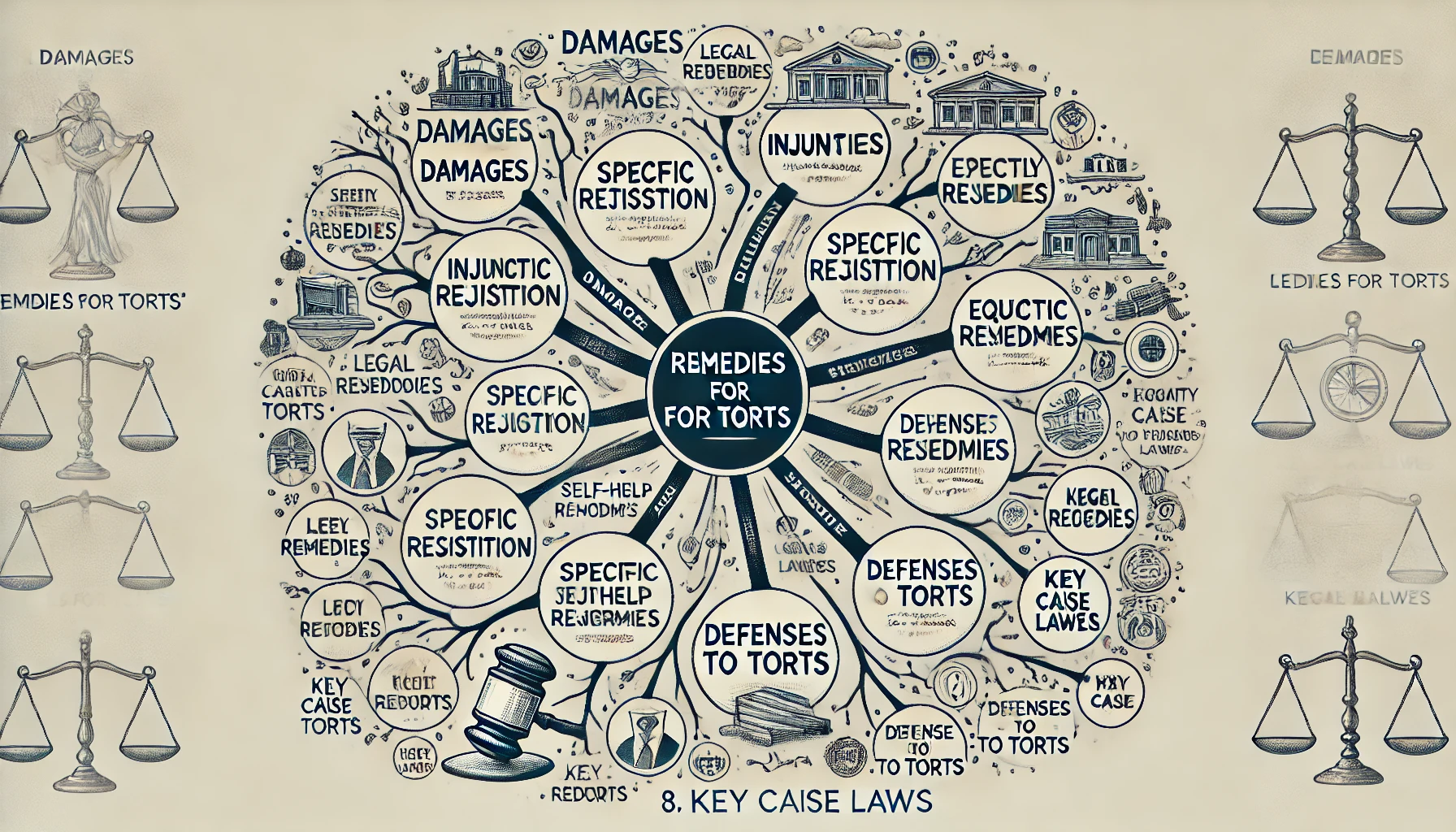
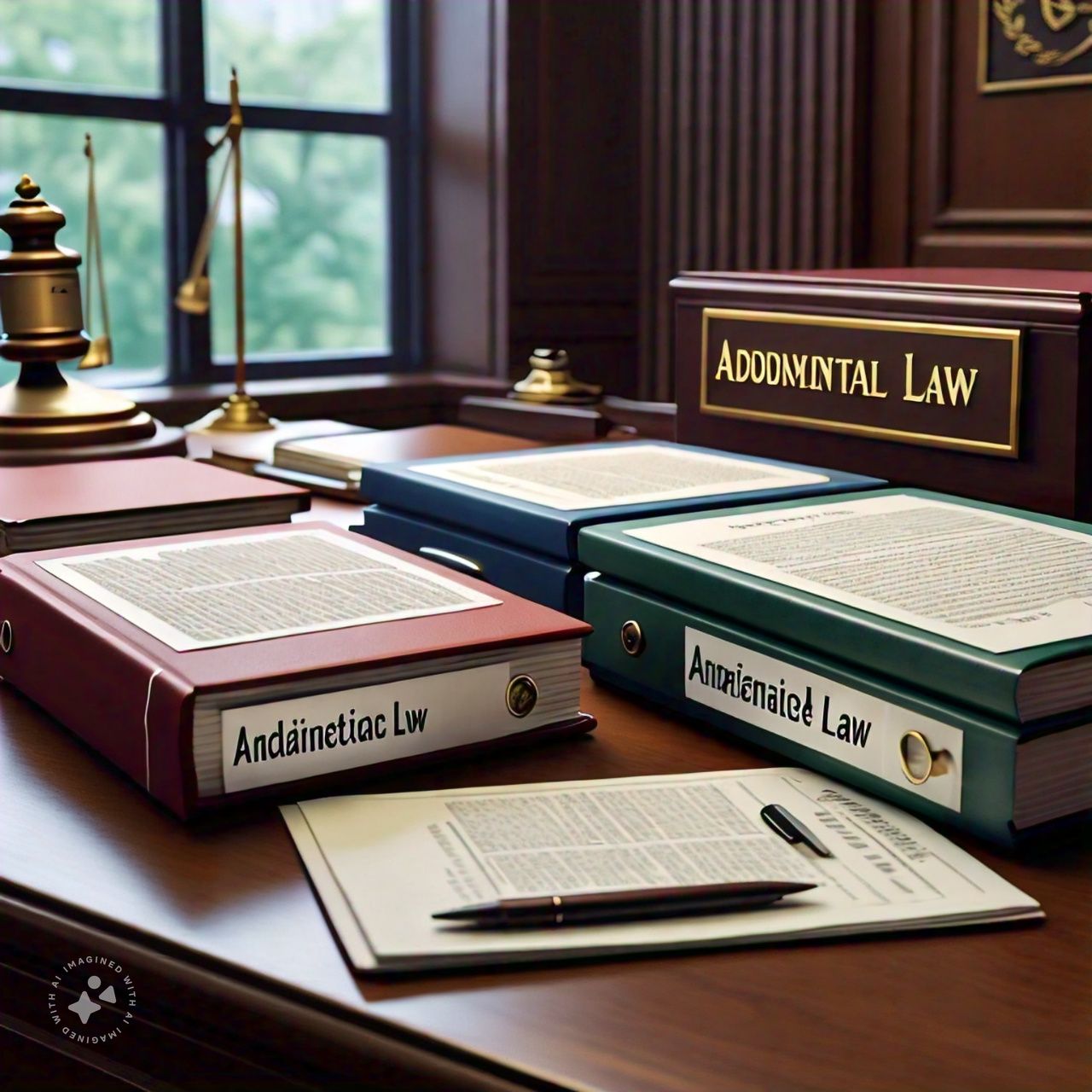

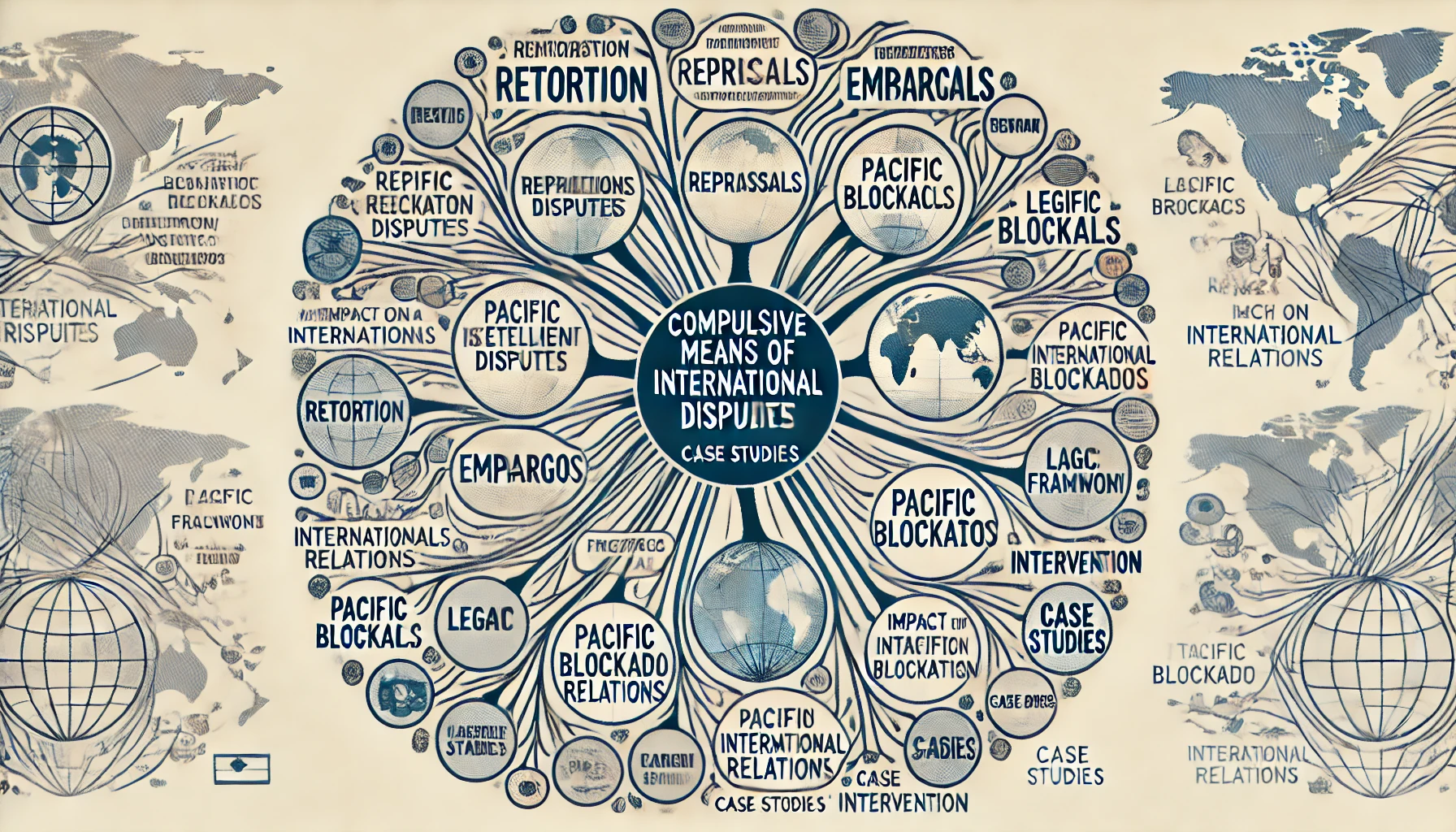

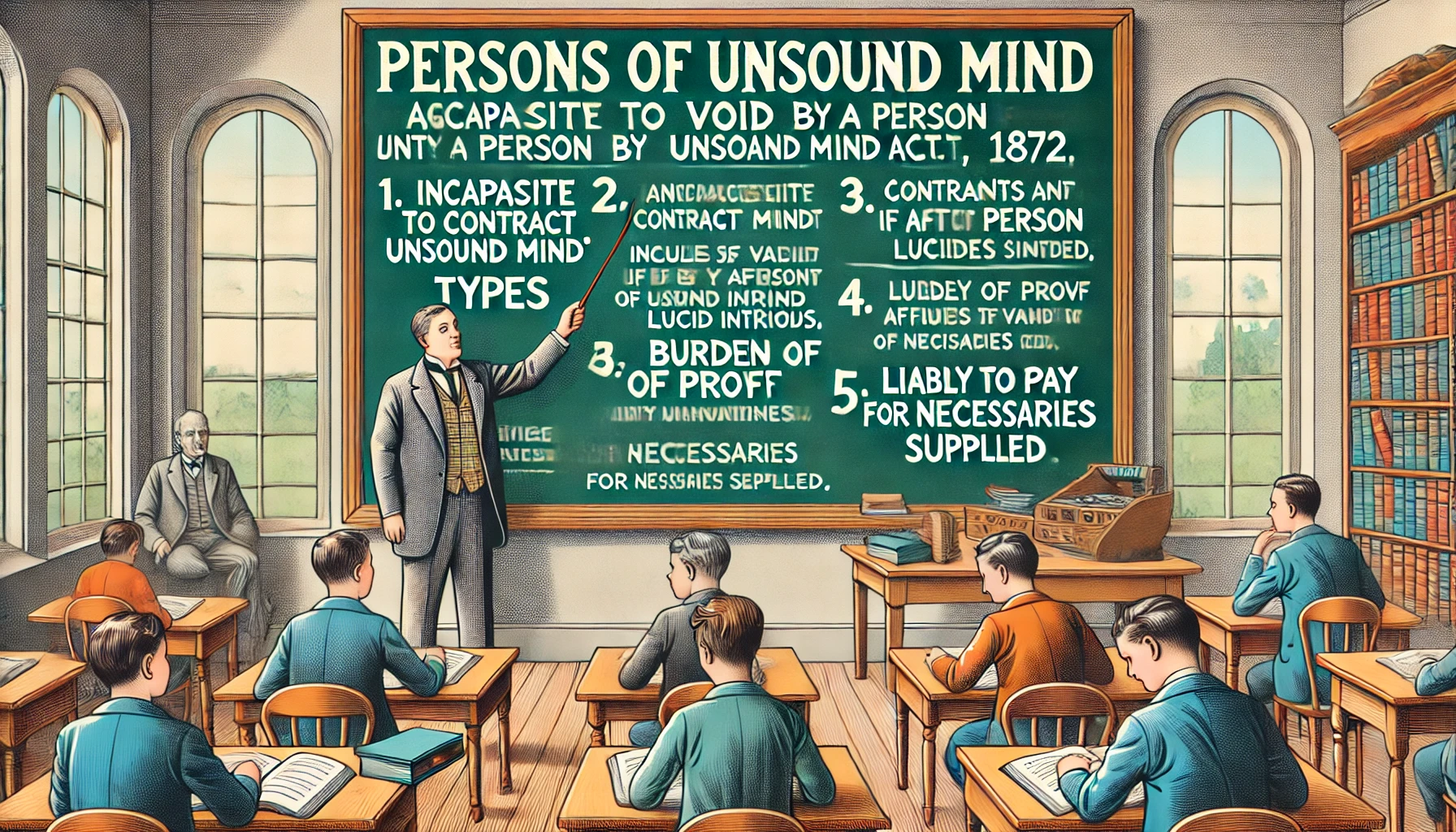
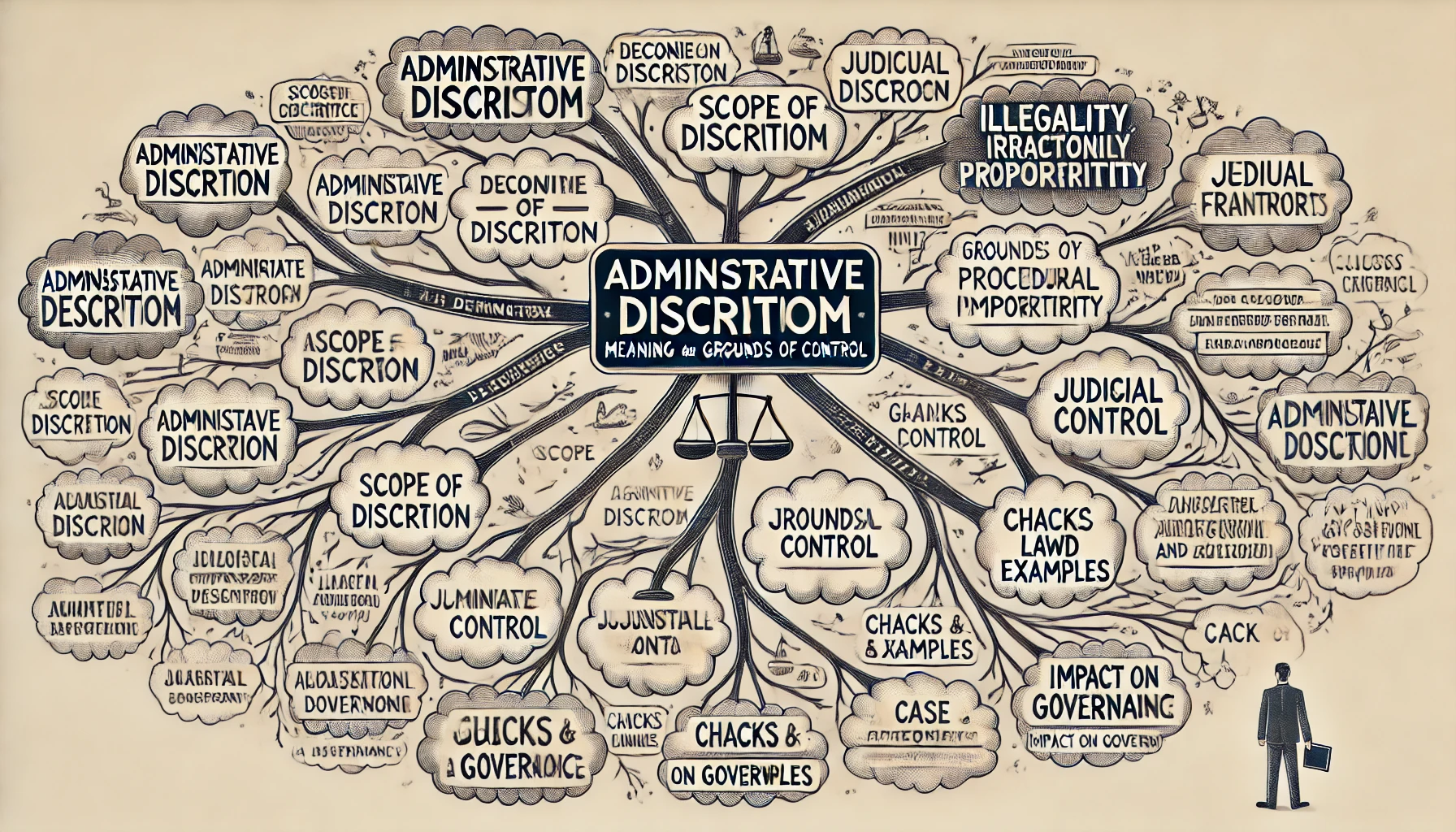
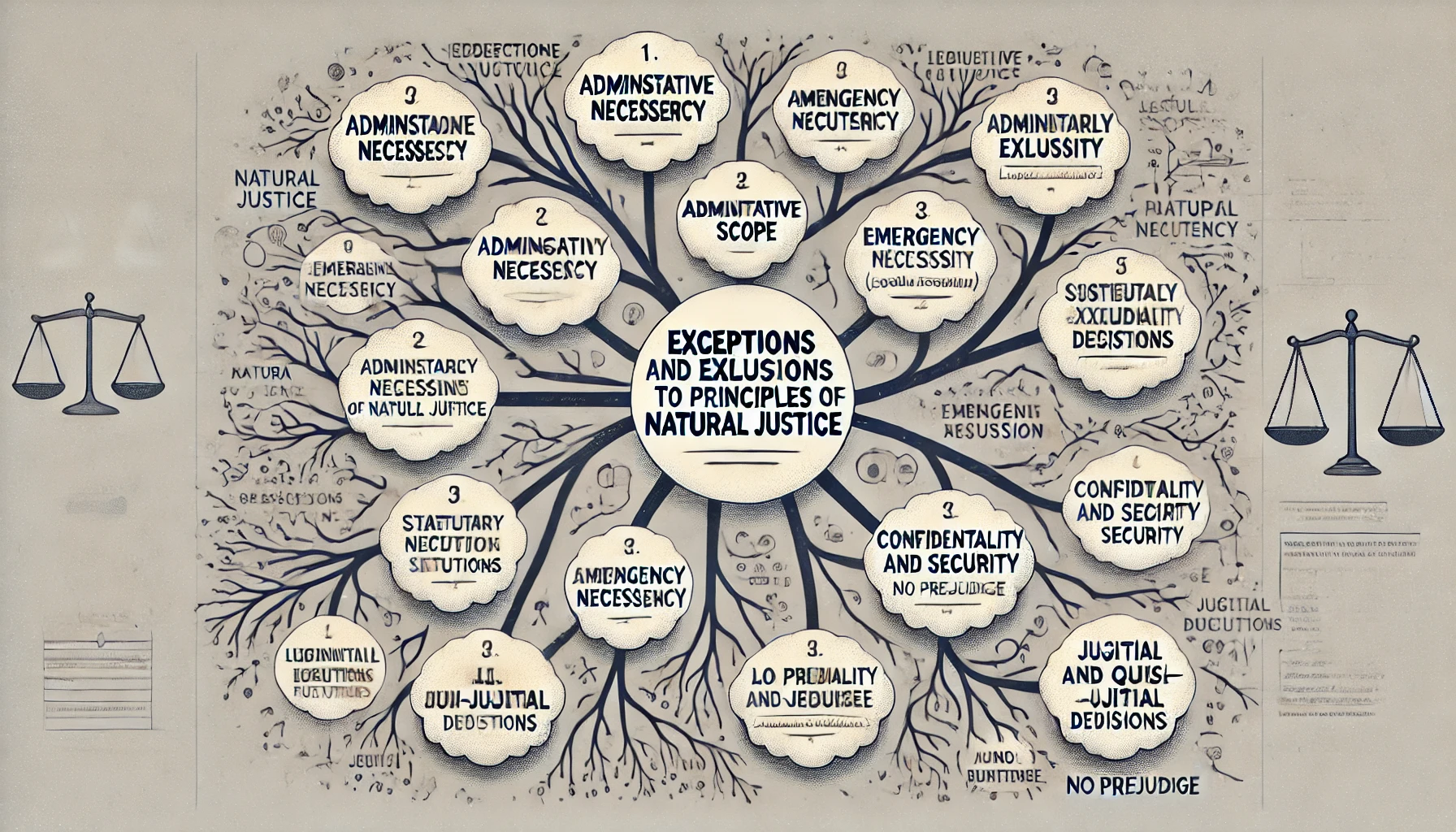

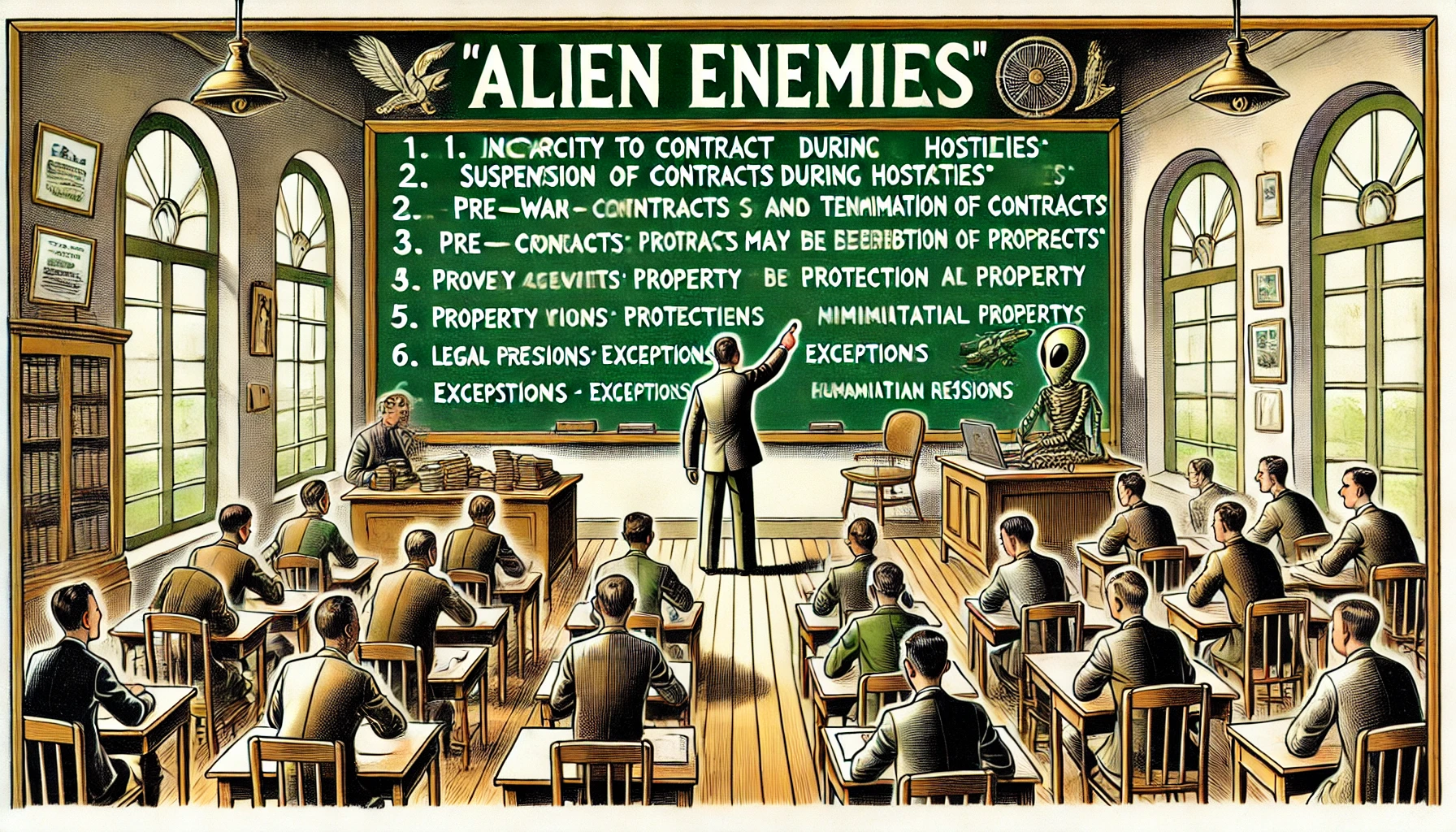




Comment
Nothing for now